a familiar veiL artistic research project - documentation
2021-2023
created with the participation of the Muséum National d’Histoire Naturelle (Paris, France) and With the support of Makery.info and the Rewilding Cultures program - co-funded by the European Union
PRESS :
https://www.makery.info/en/2023/11/06/a-familiar-veil-les-microorganismes-qui-portent-nos-souvenirs/
https://roscosmoe.org/taylor-smith/?lang=fr

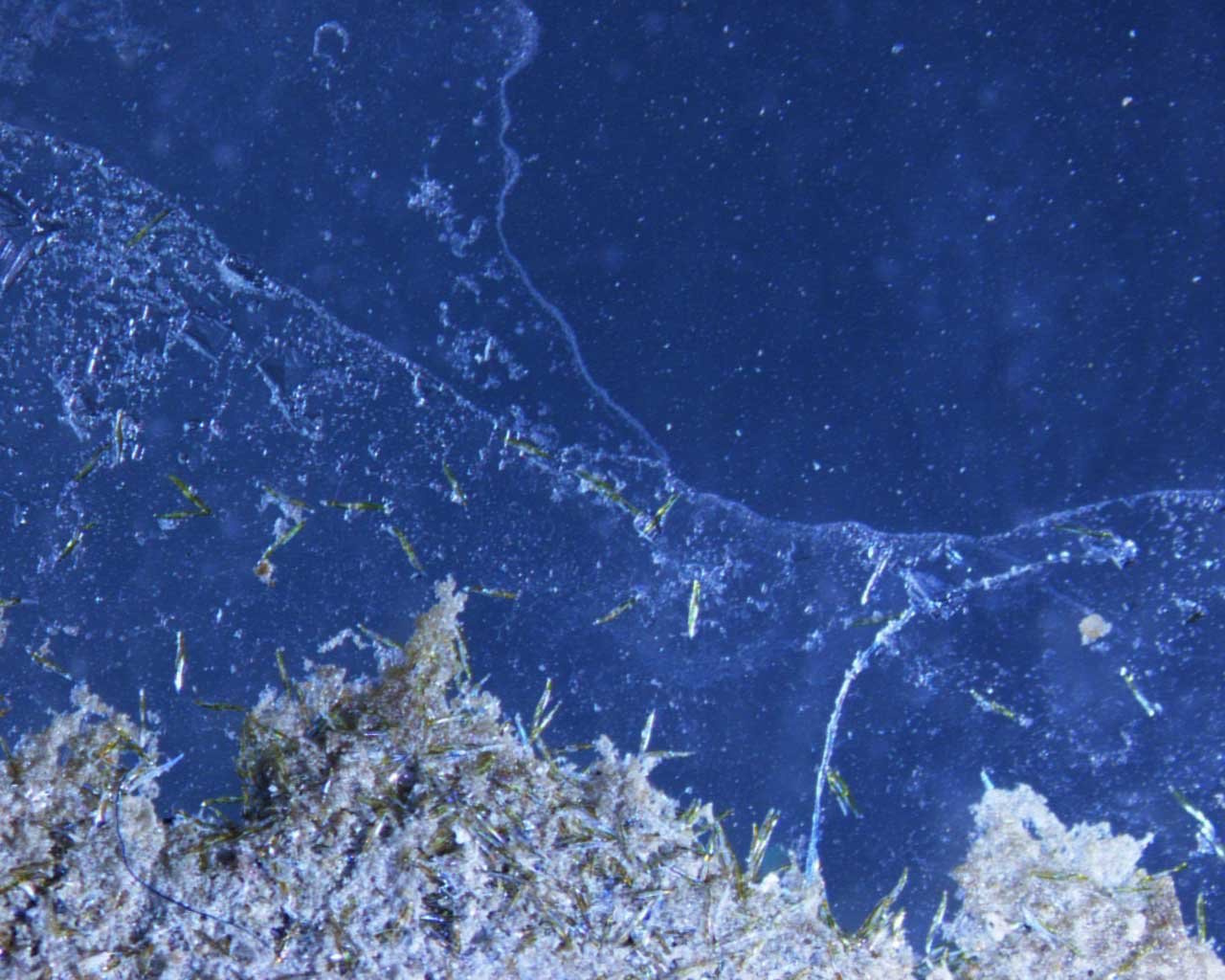


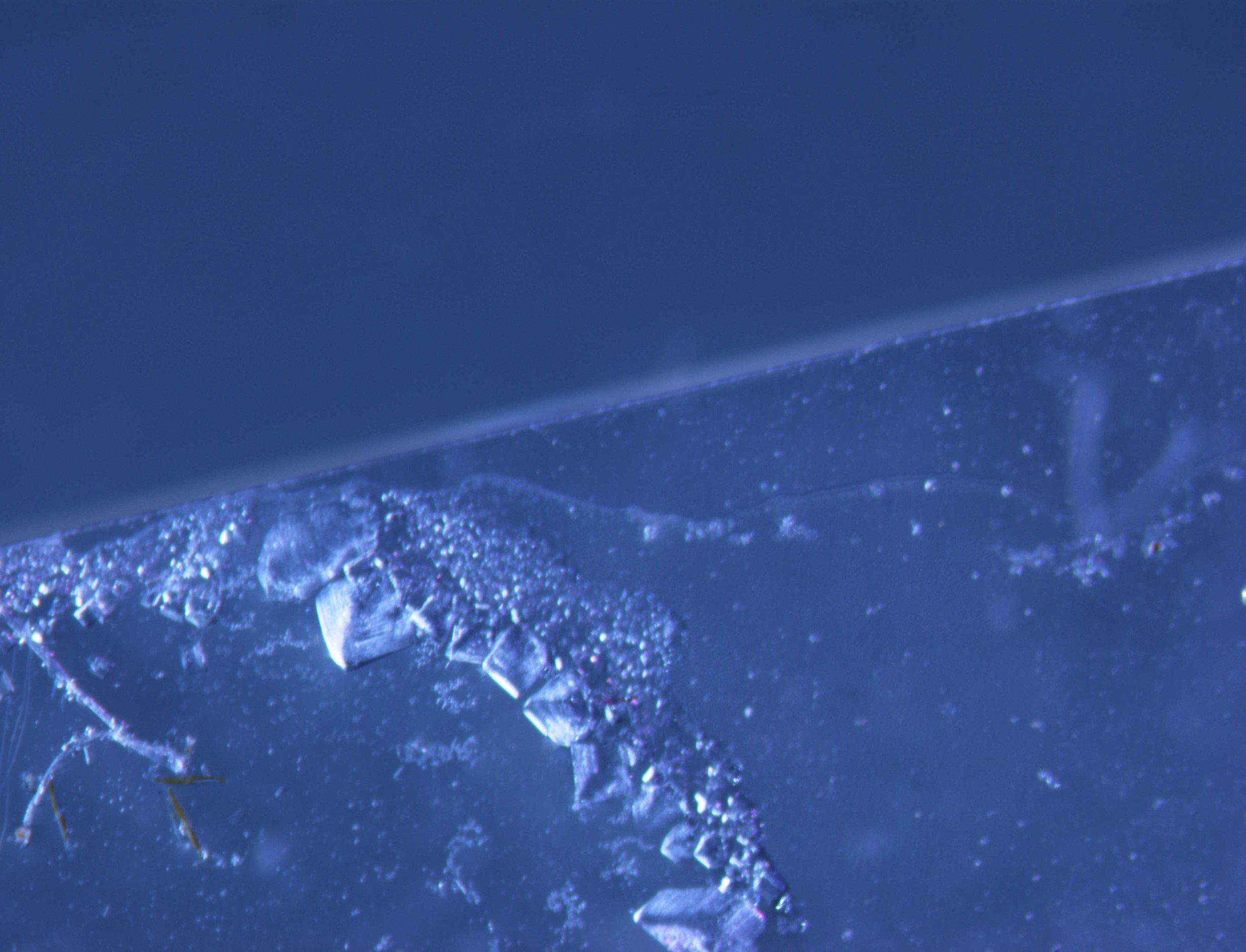
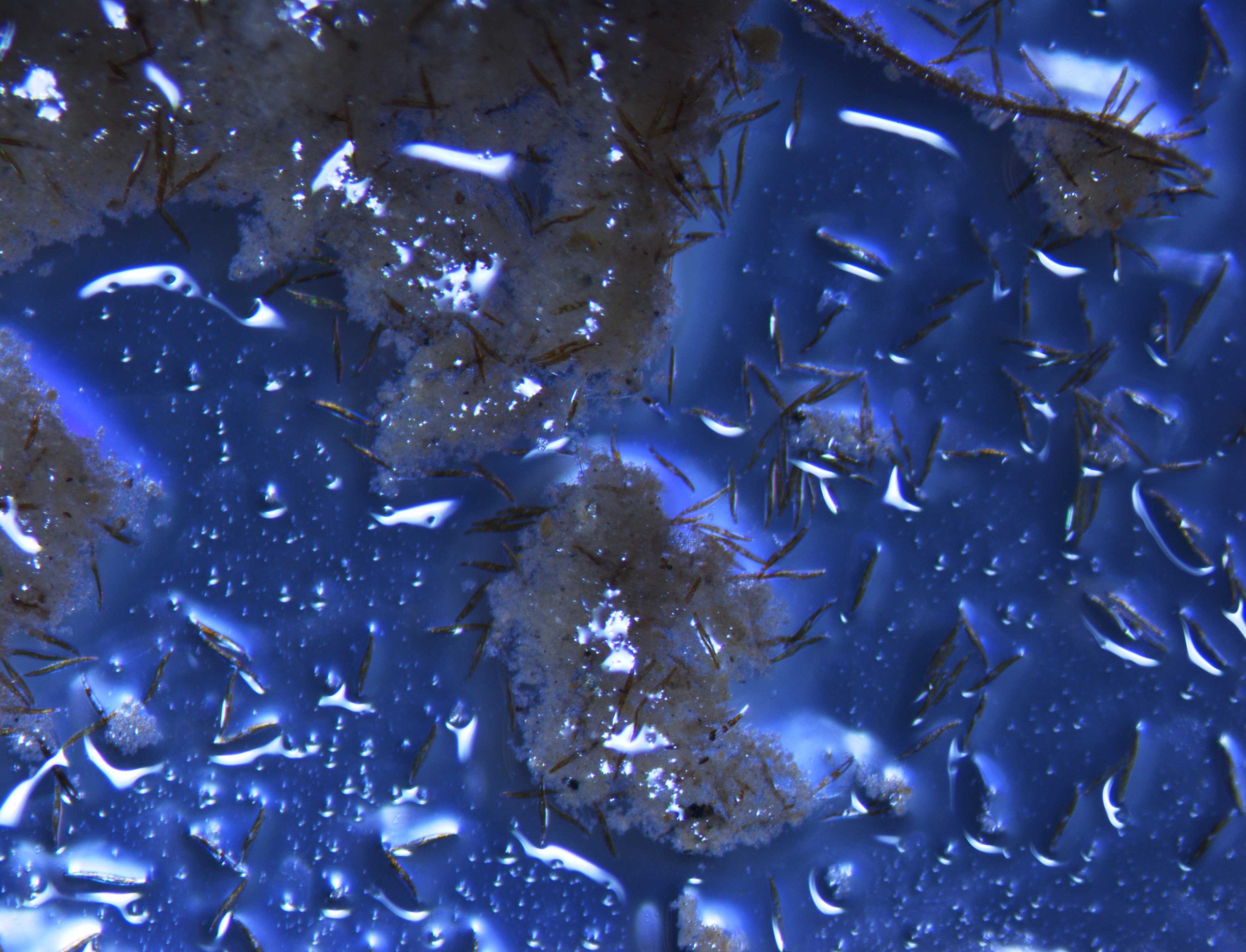
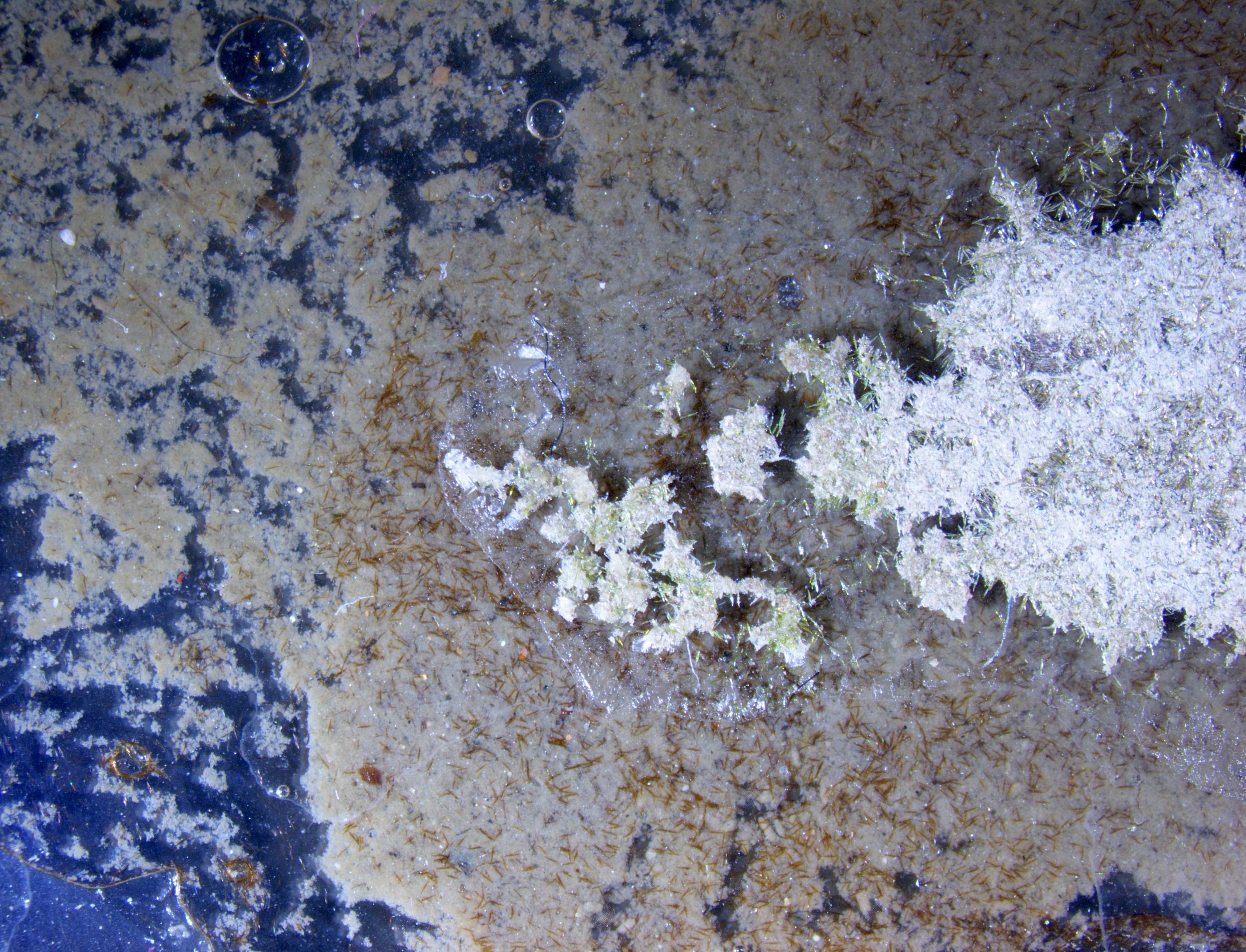
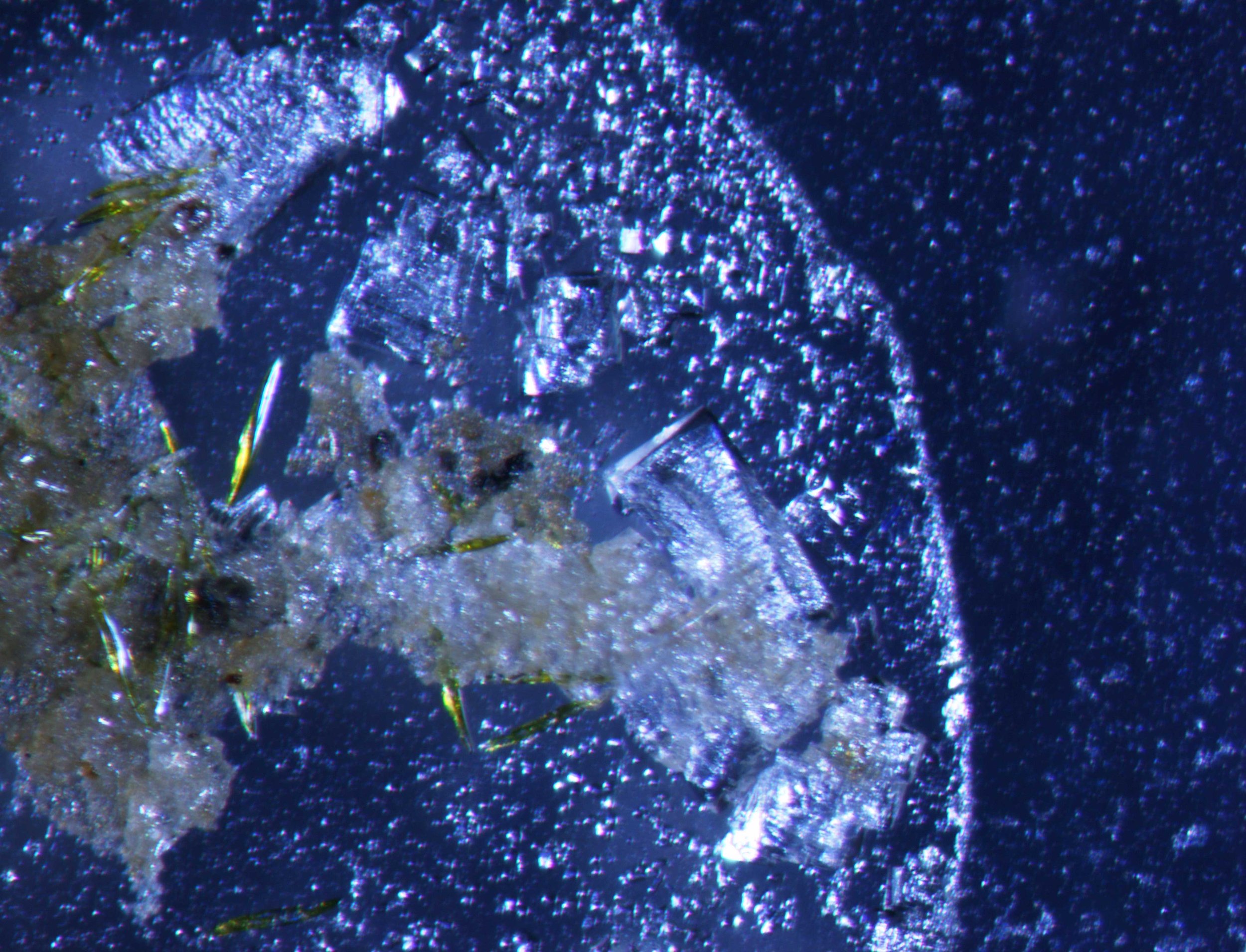
Microscopic images of biofilm, photographed by the artist at the marine biology research station, Muséum National d’Histoire Naturelle, Concarneau, France
EN : Project Summary: A familiar veil is the title of both a poetic video triptych and a broader artistic research project, begun during an art-science residency at the French National History Museum’s marine biology research station in Concarneau (02/2022-09/2023), via a collaboration with marine microbiologist Cédric Hubas. The many stages and layers of this project are documented via the analog and digital photographic series presented below.
A familiar veil brings together bio art and eco poetic practices to reveal the capacity of certain biofilms (layered matrices of microorganisms) to generate living images and texts via their intrinsic photosensitivity. Through its multi-layered compositions, the video triptych reveals the similarities between material and ephemeral qualities of both biofilms and human memory. Throughout these video works, the photosensitive biofilms function as a kind of self-weaving memory net, capturing the visible traces of a complex narrative landscape, tying several (female) individuals, their memories, and the landscapes they inhabit together. The triptych thus reveals the inextricable connections between different space-times, and the natural phenomena, microbial life forms, and embodied materiality of the human memories that inhabit them.
Biofilms (or microbial mats) have actually existed for 3.5 billion years, functioning throughout our planet’s history as an interface between different materials and beings. These familiar microbial ancestors also cling to our skin and bones, just like cellulose biofilms in plant bodies. Some biofilms are indeed photosensitive, and thus capable of making an image or text temporarily visible, when exposed to sunlight beneath a photographic negative (click for : video demonstration of the process). With Cédric, the project began with our attempts to reveal poetic texts in the aquatic biofilm he studies along the Atlantic coastline in February 2022. This particular biofilm is photosensitive because it is composed of micro-algae called diatoms, which migrate to the surface of the sand in the absence of light, and bury themselves in the sand to hide when the light is too strong. They also migrate according to other factors, currently being studied by Cédric, including the circadian rhythm.
Drawing initially on Cédric’s scientific research, I continued investigating the role of light in re-generating traces of human memories (collected as texts, photographic images and drawings) within the photosensitive biofilm matrices that populate other landscapes. After beginning in Concarneau, I continued this research in Kilpisjärvi, Finland, Sandøya Norway and finally Strückhausen, Germany. The project’s cycle was completed upon returning to Concarneau from Oslo by train in September 2023.
Throughout its two year development, this artistic research project has been articulated through a variety of material forms. In addition to the poetic video triptych, I documented the research through a photographic series. I also created a series of 3D-printed biodegradable, mimetic objects, taking on the forms of the diatoms themselves (the photosensitive micro-algae that compose the biofilm), in addition to other synthetic objects (fragments of boats, rocks…) that the biofilm sticks to. These objects were used to lend a more tactile dimension to the biofilm, helping participants to understand it better during a series of “memory revelation workshops” held at the Marinarium museum in Concarneau (the museum attached to the marine biology research station). I held three of these workshops with groups of children and adults in April and September 2023. During the workshops, participants were each asked to bring a memory, in the form of a text or an image (drawing or photograph). The text or image was then converted into a photographic negative, and held over the biofilm by the participant, beneath a powerful LED light. As the light penetrated through the transparent parts of the negative, the participant could thus observe their memory-trace being re-generated in living form via the migration of the diatoms in the sand below.
The many material elements of the project (photo series, video triptych and mimetic objects) were collectively exhibited at the Muséum National d’Histoire Naturelle, as part of the inauguration of the Studio éphémère Bioinspire-Muséum, installed in the Muséum’s Galerie de botanique from October 7-13, 2023. I also presented the project during a final conference, preceding the workshops in September 2023 at the Marinarium in Concarneau.
FR : Résumé du projet : A familiar veil est le titre à la fois d’un triptyque vidéo et d’un projet plus vaste, débuté au cours d’une résidence art-science à la station de biologie marine du Muséum National d’Histoire Naturelle (MNHN) à Concarneau (02/2022- 09/2023) via une collaboration avec le microbiologiste marin Cédric Hubas. Les étapes de recherche-création du projet sont documentées au travers des séries photographiques analogues et numériques présentées ci-dessous.
A familiar veil rassemble des pratiques de bioart et de l’écopoétique. Il prend son point de départ dans la capacité des biofilms (des matrices de microorganismes) de reproduire des images et textes éphémères grâce à leur photosensibilité intrinsèque. Au travers des couches visuelles multiples, le triptyque vidéo révèle les affinités conceptuelles entre l’aspect matériel et éphémère partagé par le biofilm et la mémoire humaine. Au travers des œuvres vidéos, les biofilms photosensibles fonctionnement comme une sorte de filet de mémoire qui capte les traces visibles d’un paysage narratif complexe, reliant les femmes, leurs souvenirs et les paysages qu’elles habitent ensemble. Le triptyque revèle ainsi les connexions inextricables entre différents espace-temps et les phénomènes naturels, formes de vie microbienne et les souvenirs humains qui les habitent.
Depuis l’origine de la vie il y a 3,5 milliards d’années déjà, des biofilms continuent à fonctionner en effet comme une interface entre différents êtres et matériaux. Ces ancêtres microbiens se collent à notre peau et à nos os, tout comme les biofilms à cellulose qui constituent des corps botaniques. Certains biofilms sont photosensibles, soit capables de rendre visible une image ou un texte lorsqu’ils soient exposés à la lumière sous un négatif photographique (Cf. vidéo qui démontre le processus : https://youtu.be/KwGik2vlktE). Avec mon collaborateur Cédric Hubas, le projet a démarré en février 2022 avec nos tentatives de faire reveler des textes poétiques au sein des biofilms aquatiques qu’il étudie sur le littoral atlantique. Ce biofilm concarnois doit sa photosensibilité aux diatomées, les micro-algues qui la constituent, qui migrent vers la surface du sable pour chercher la lumière à l’obscurité et plongent dans le sable pour se cacher quand la lumière est trop forte. En plus de la lumière, leur migration est engendrée par d’autres facteurs étudiés actuellement par Cédric, y compris le rythme circadien.
À partir de ces recherches scientifiques de Cédric, j’ai continué d’explorer la capacité de la lumière en particulier à ré-générer les traces des souvenirs humains (collectés sous forme de textes et images) au sein d’autres biofilms. Après celui de Concarneau, j’ai continué ces recherches avec des biofilms de Kilpisjärvi, Finlande, Sandøya Norvège et enfin Strückhausen, Allemagne : des paysages ruraux qui ont une importance personnelle pour moi et mes ancêtres : humains et plus qu’humains. Le cycle du projet s’est completé avec mon retour à Concarneau en septembre 2023, un voyage effectué en train depuis Oslo.
Au cours de ces deux ans, cette recherche artistique a trouvé plusieurs formes d’articulation matérielle. En plus du triptyque vidéo poétique, j’ai documenté mes recherches via une série photographique. J’ai également réalisé une série d’objets biodégradables mimétiques imprimés en 3D, qui ont pris les formes des diatomées (les micro-algues photosensibles qui constituent la matrice du biofilm) et les objets inorganiques ou synthétiques (restes de bateaux, pierres…) auxquels le biofilm se colle. Ces objets ont été utilisés afin de rendre une dimension plus tactile au biofilm, et d’aider le public à mieux comprendre ce que c’est qu’un biofilm au cours d’une série d’ateliers de “révélation de la mémoire” qui ont eu lieu au Marinarium de Concarneau. J’ai organisé en effet trois ateliers avec des groupes d’enfants et d’adultes en avril et septembre 2023. Au cours de ces ateliers les participants ont été demandés d’apporter un souvenir, sous forme de texte ou d’image (dessin ou photographie). Ce texte ou image a été ensuite converti en négatif photographique, posé au-dessus du biofilm par le participant, sous un LED. Lorsque la lumière commençait à percer les endroits transparents du négatif, le participant a pu observer le même texte ou image (leur souvenir) ré-généré sous forme vivante grâce à la migration des diatomées dans le sable.
Une sélection de la série photographique et d’objets mimétiques 3D qui figurent ci-dessous, en plus du triptyque vidéo, ont été exposés ensemble au Muséum National d’Histoire Naturelle, lors de l’inauguration du Studio éphémère Bioinspire-Muséum, installé au sein de la Galerie de botanique du Muséum du 7 au 13 octobre 2023.
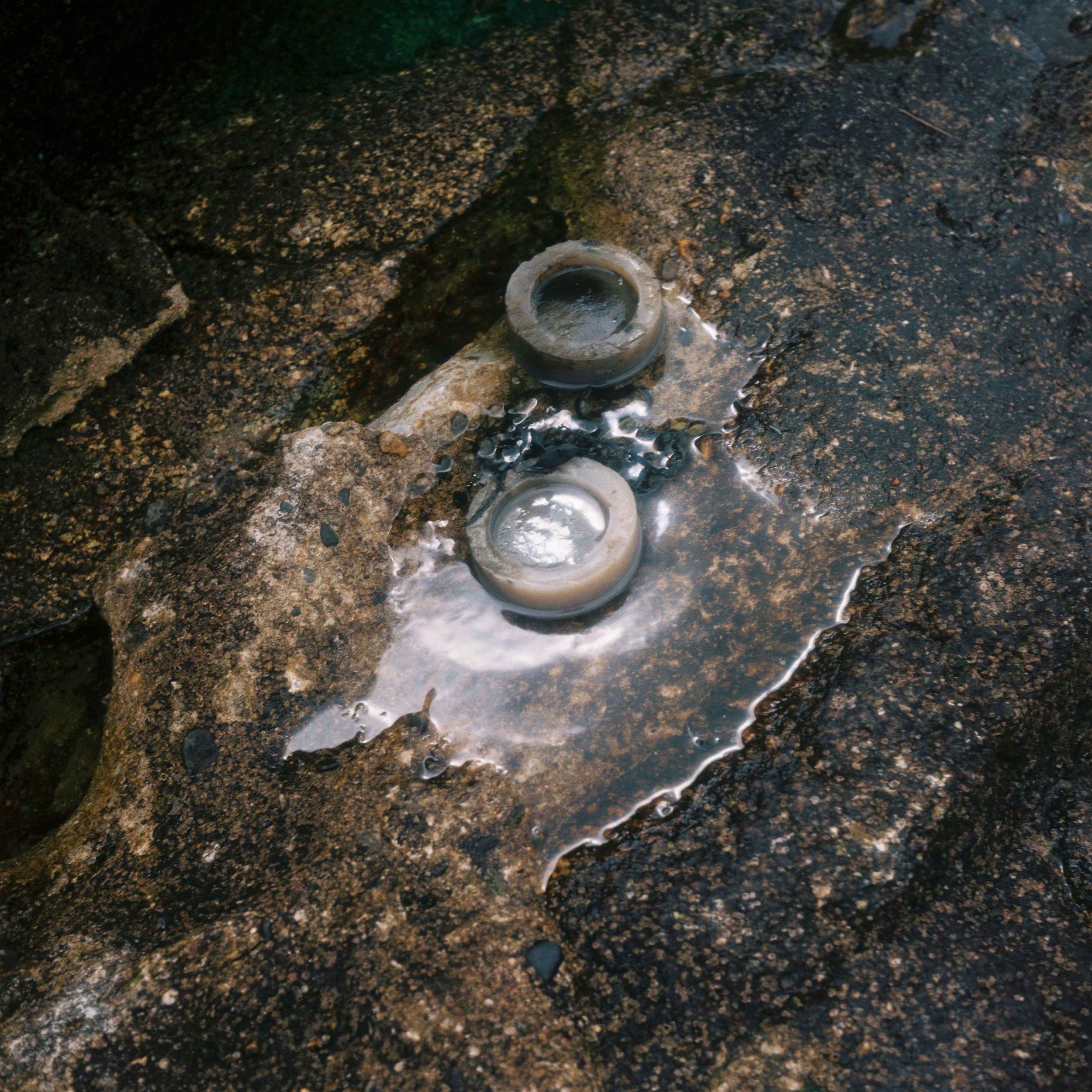

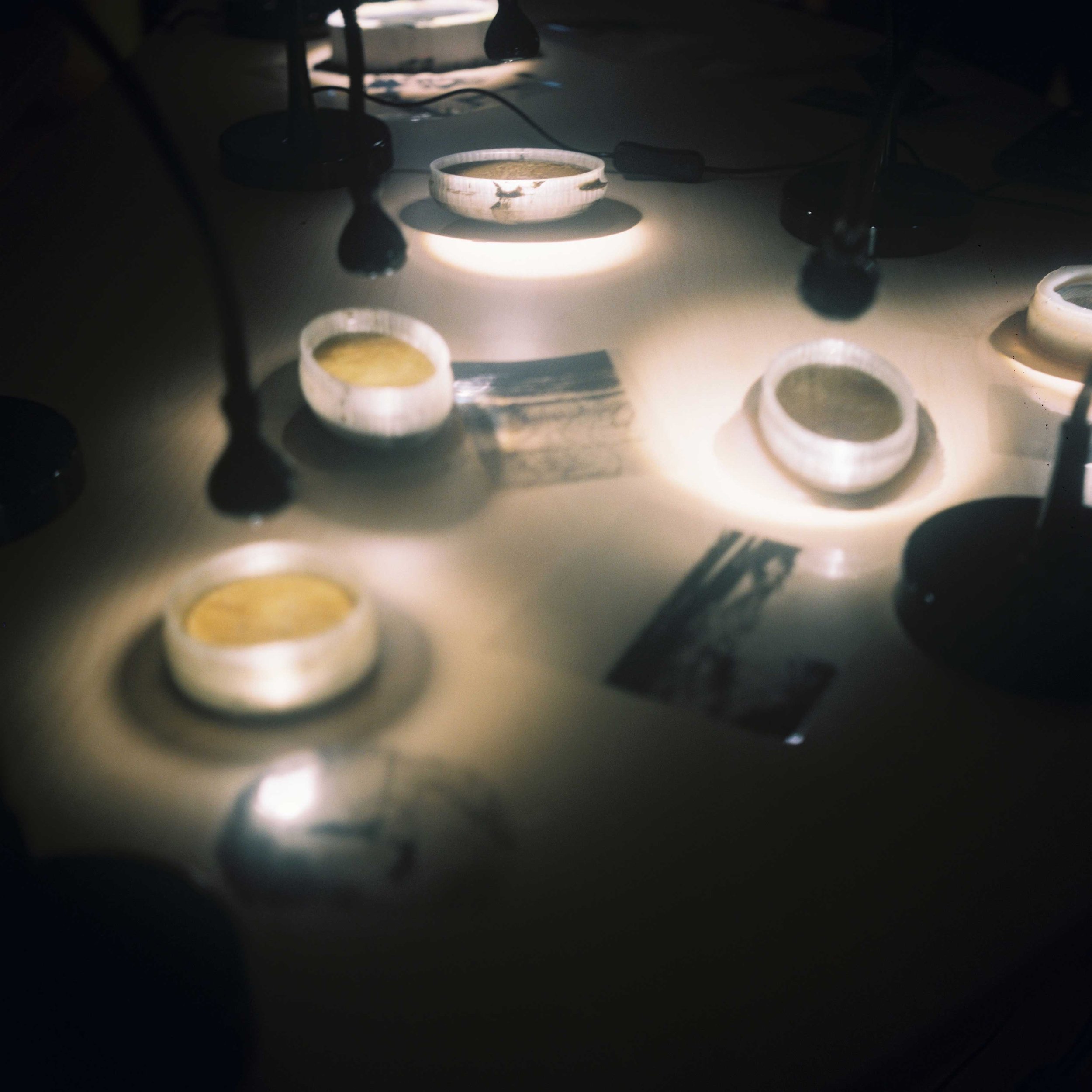
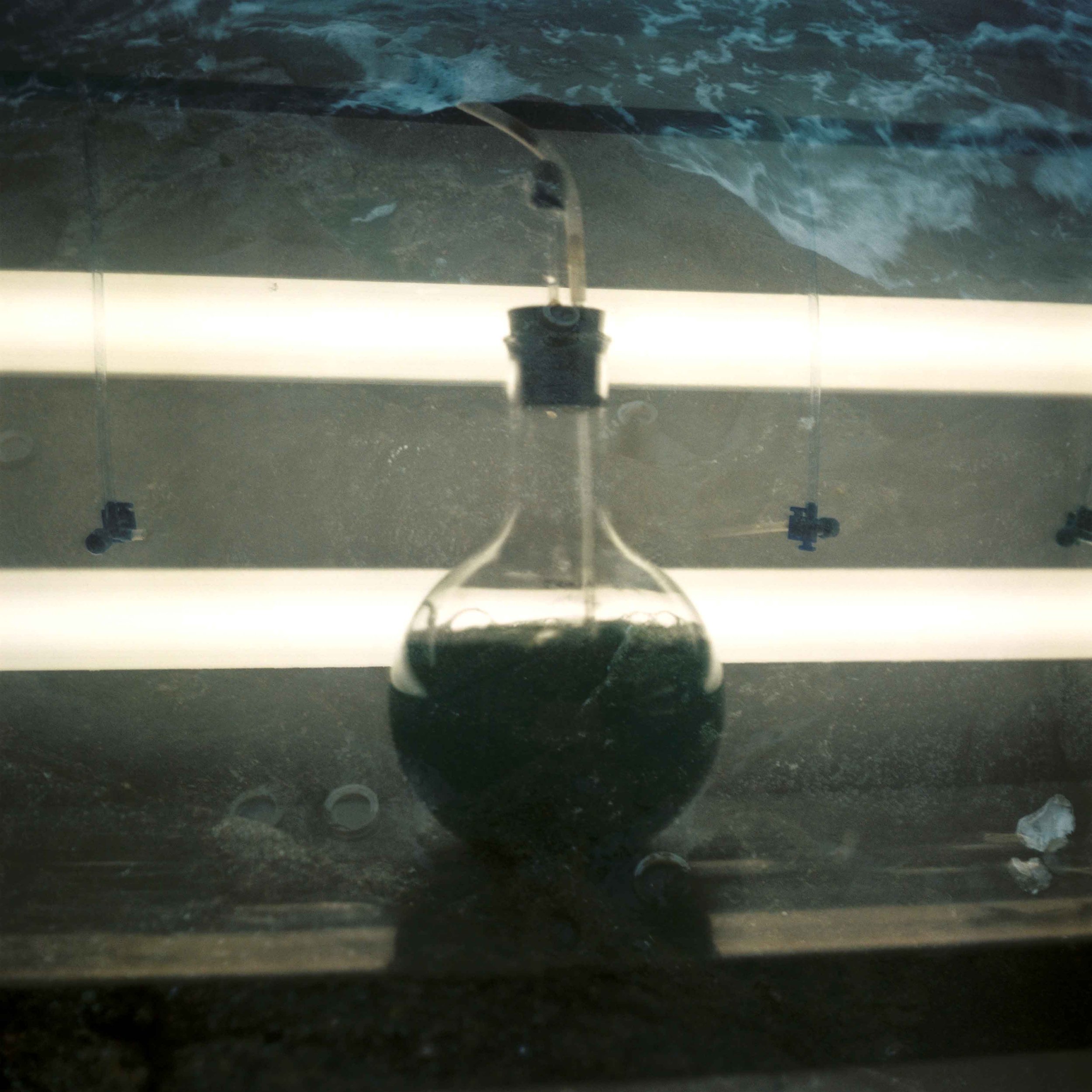

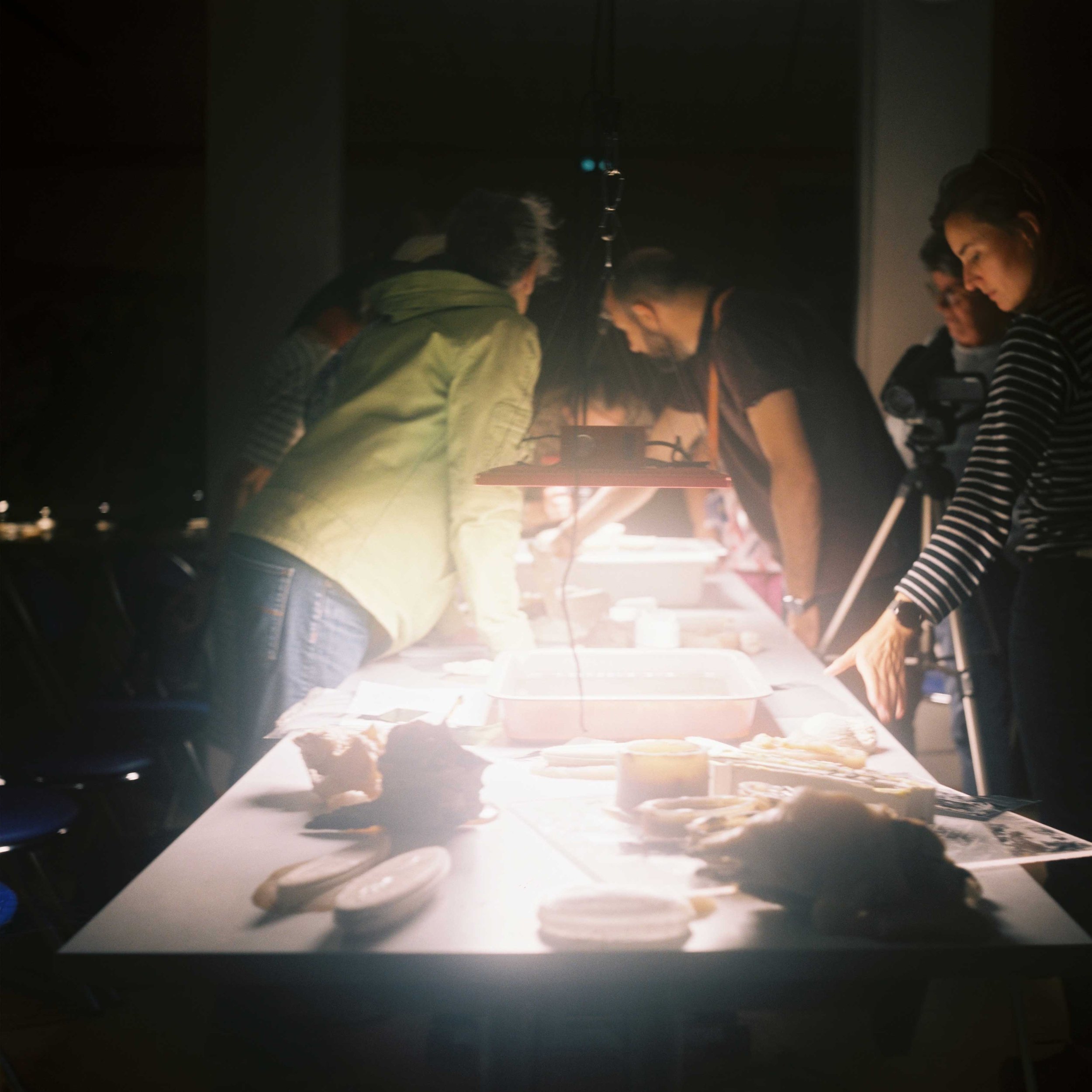

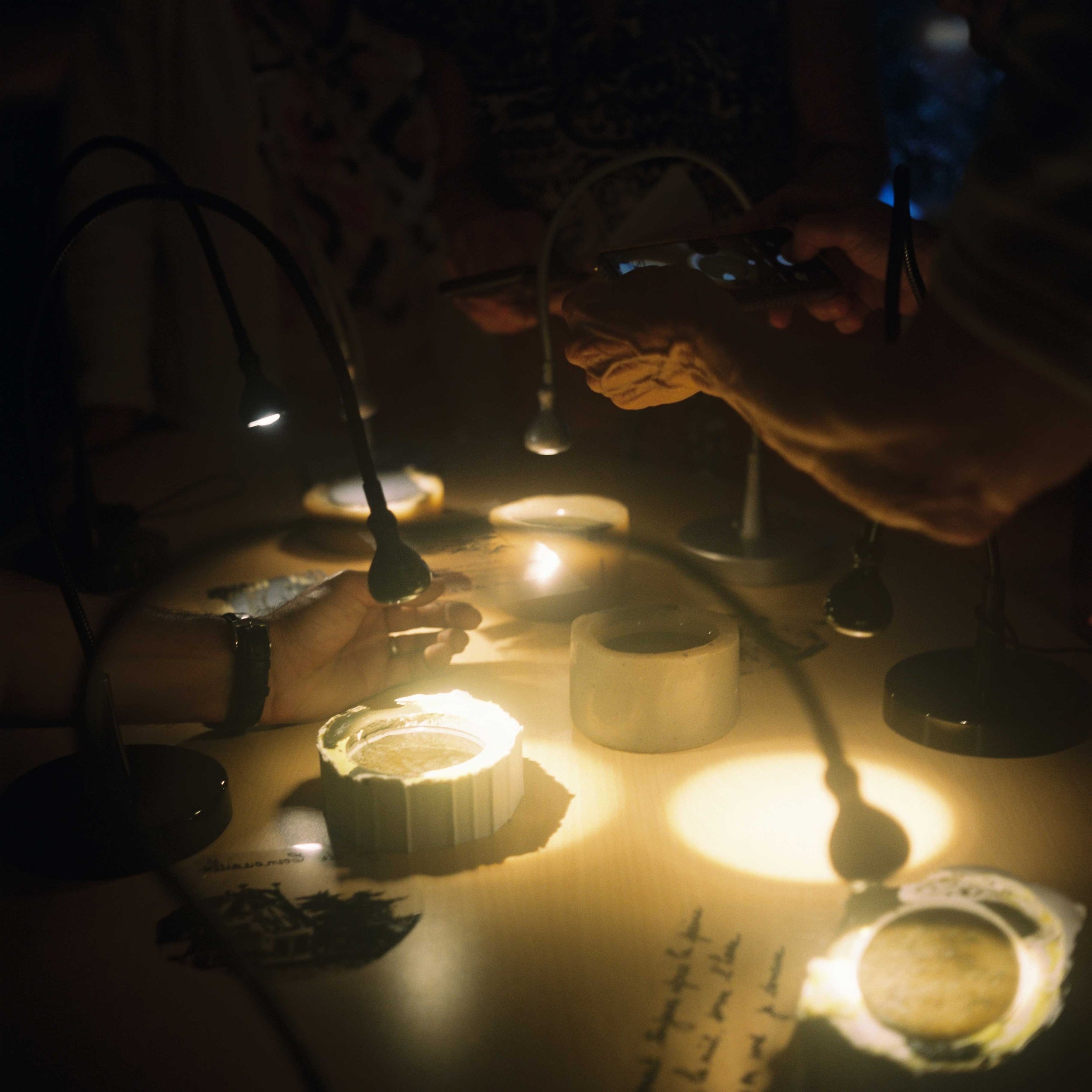
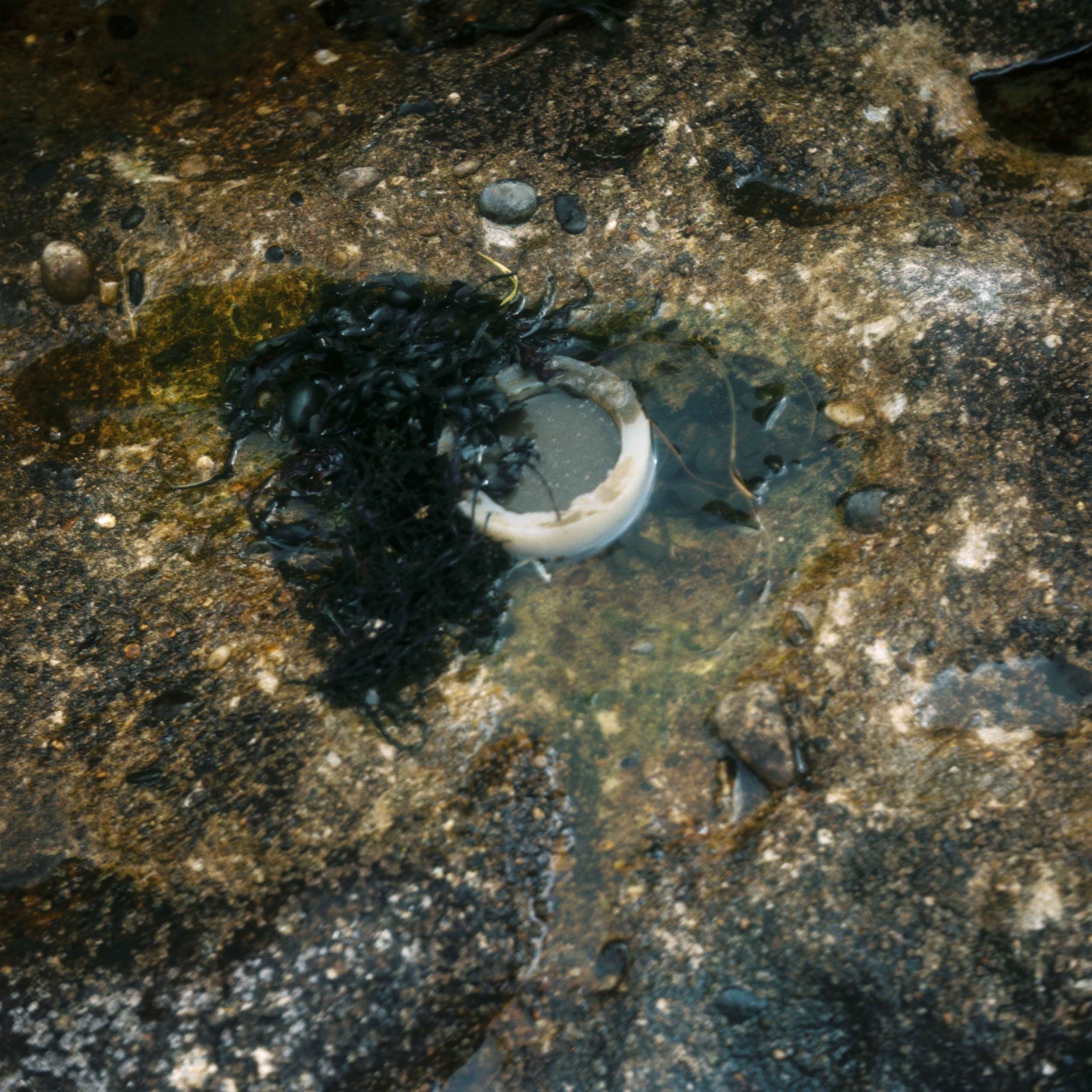
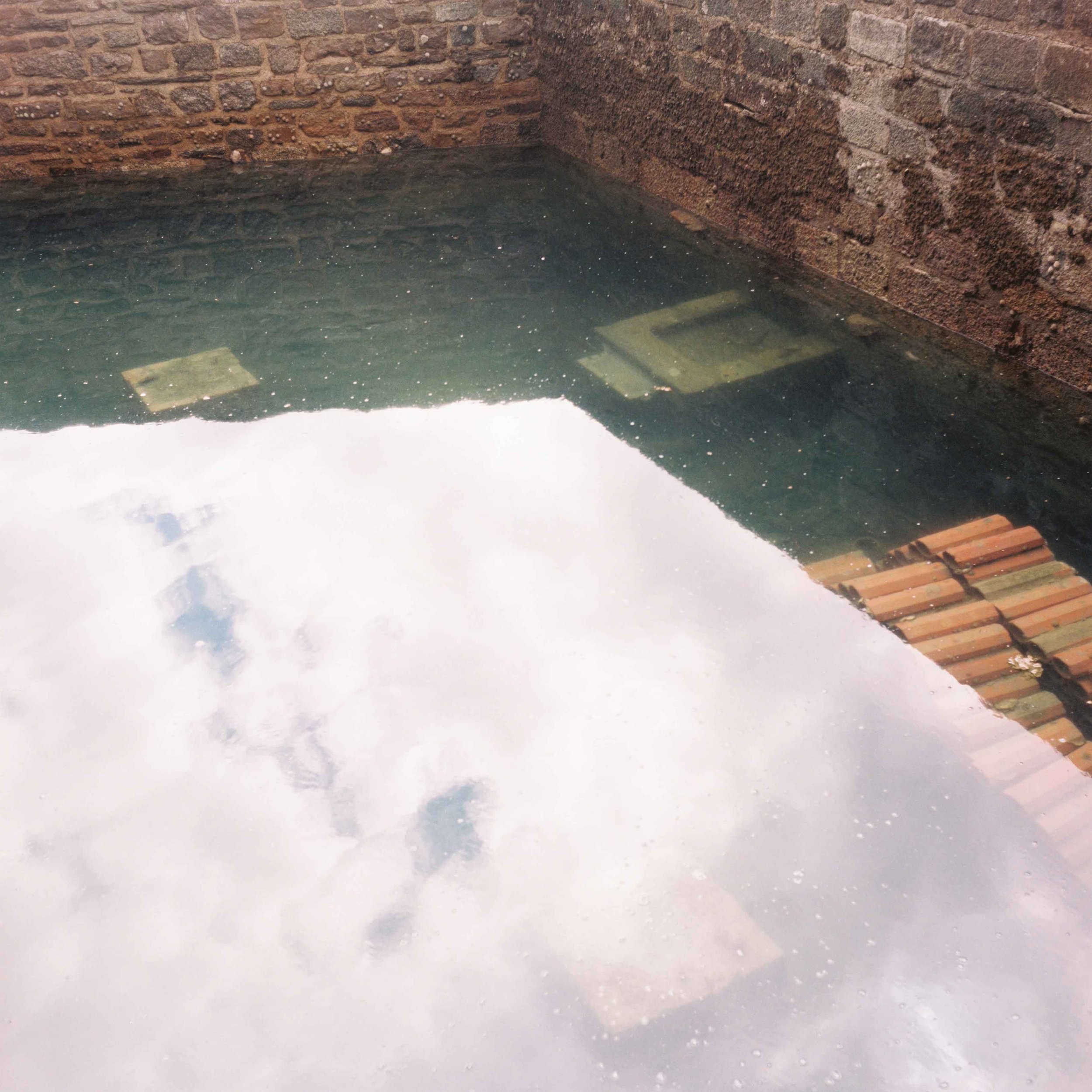
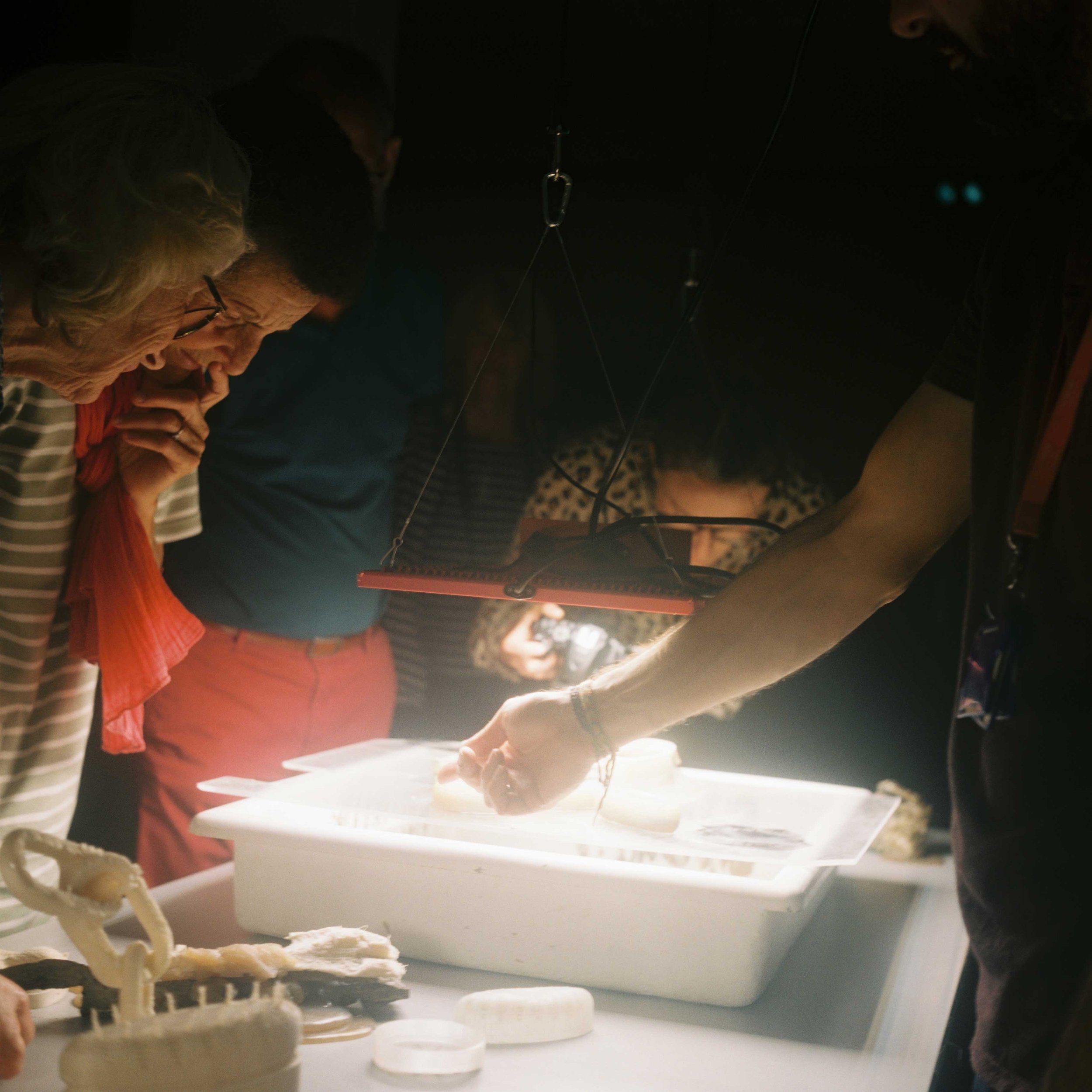
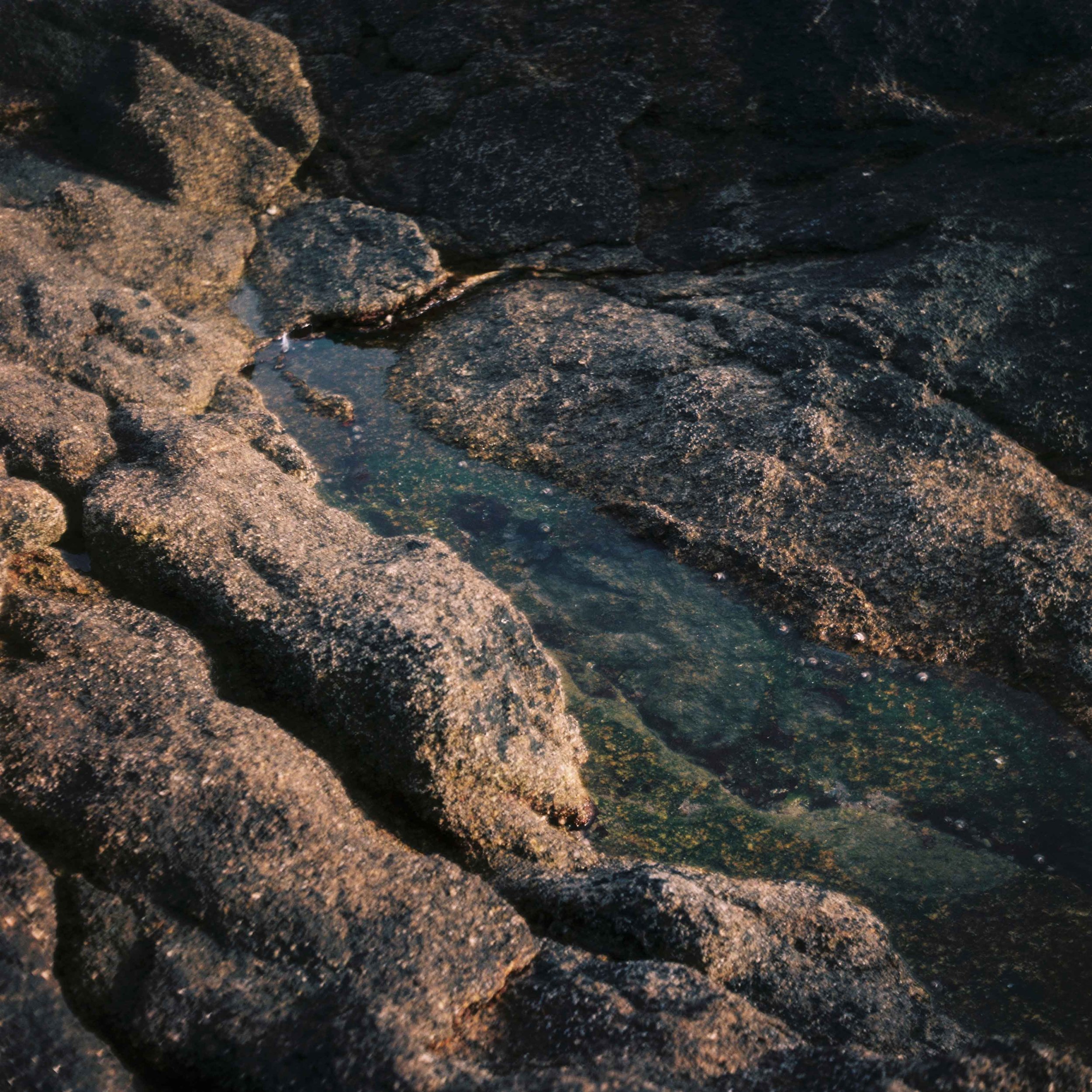

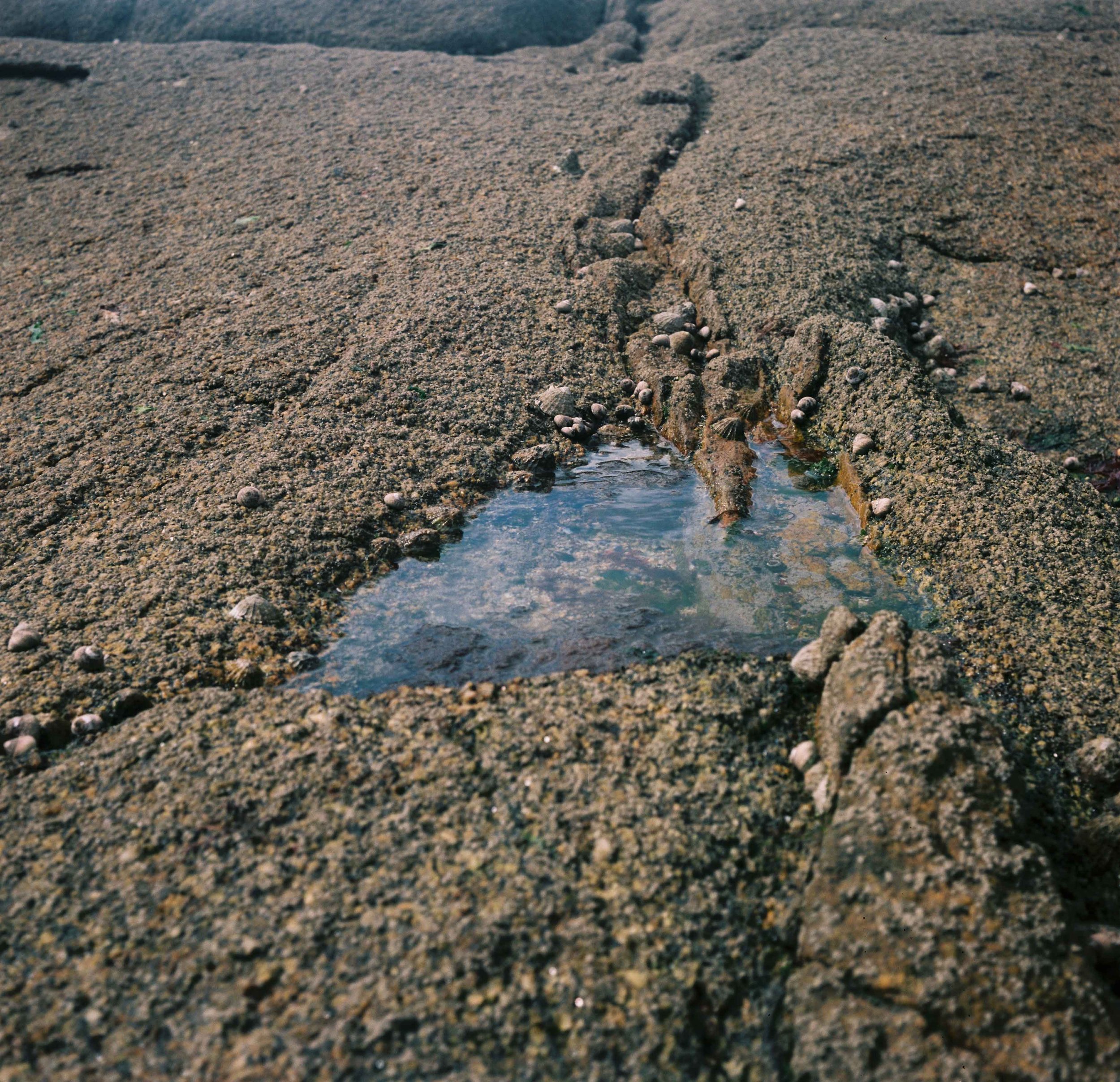
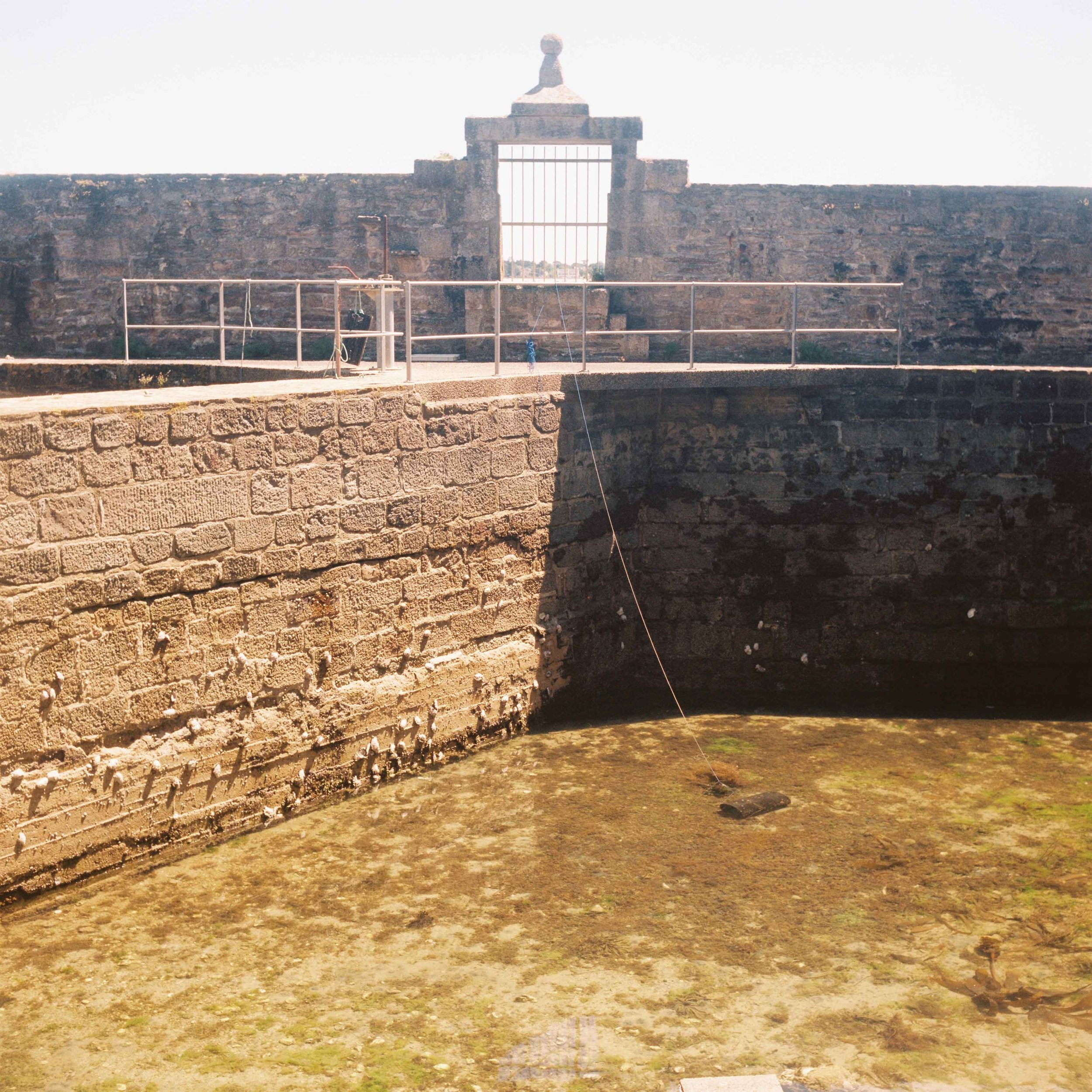
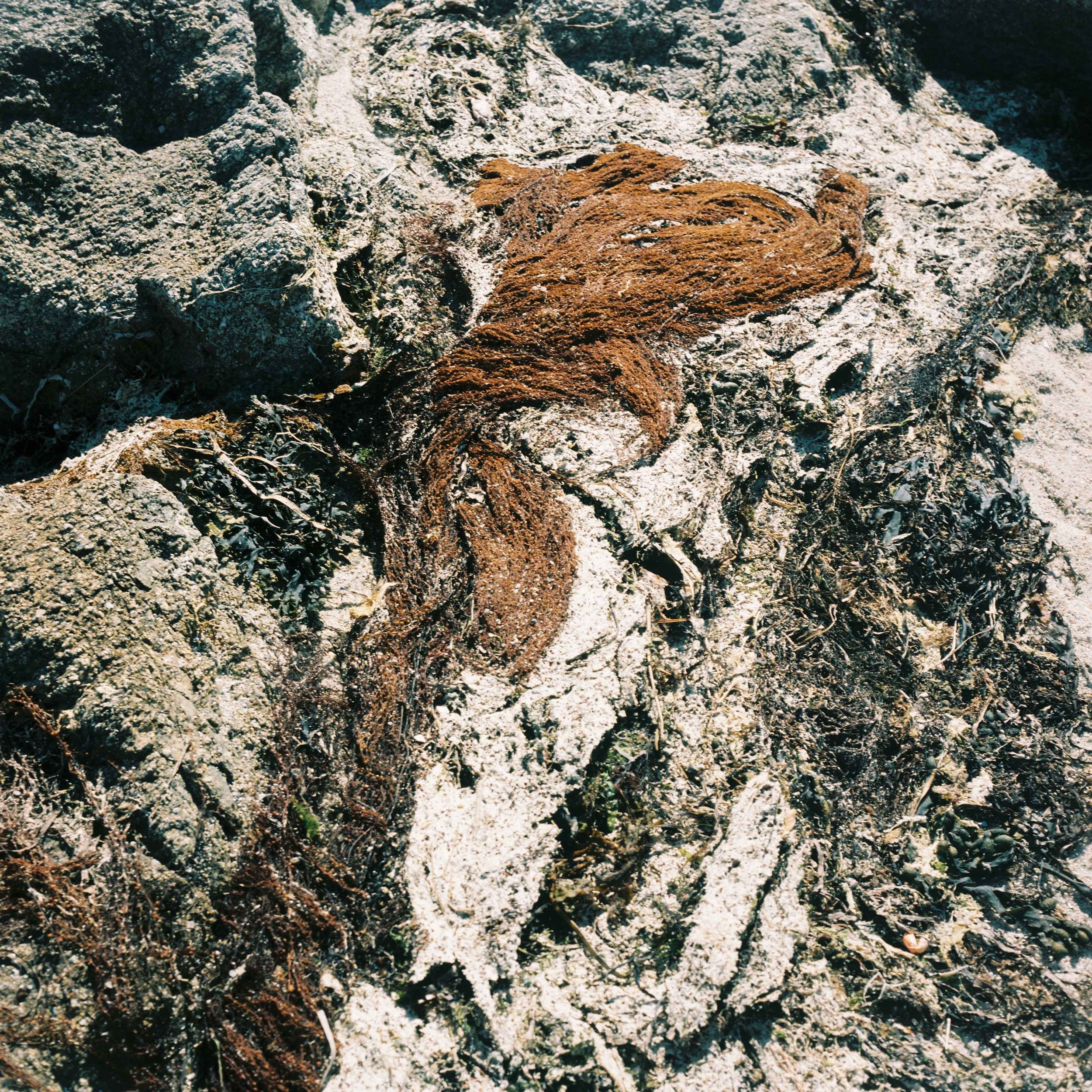
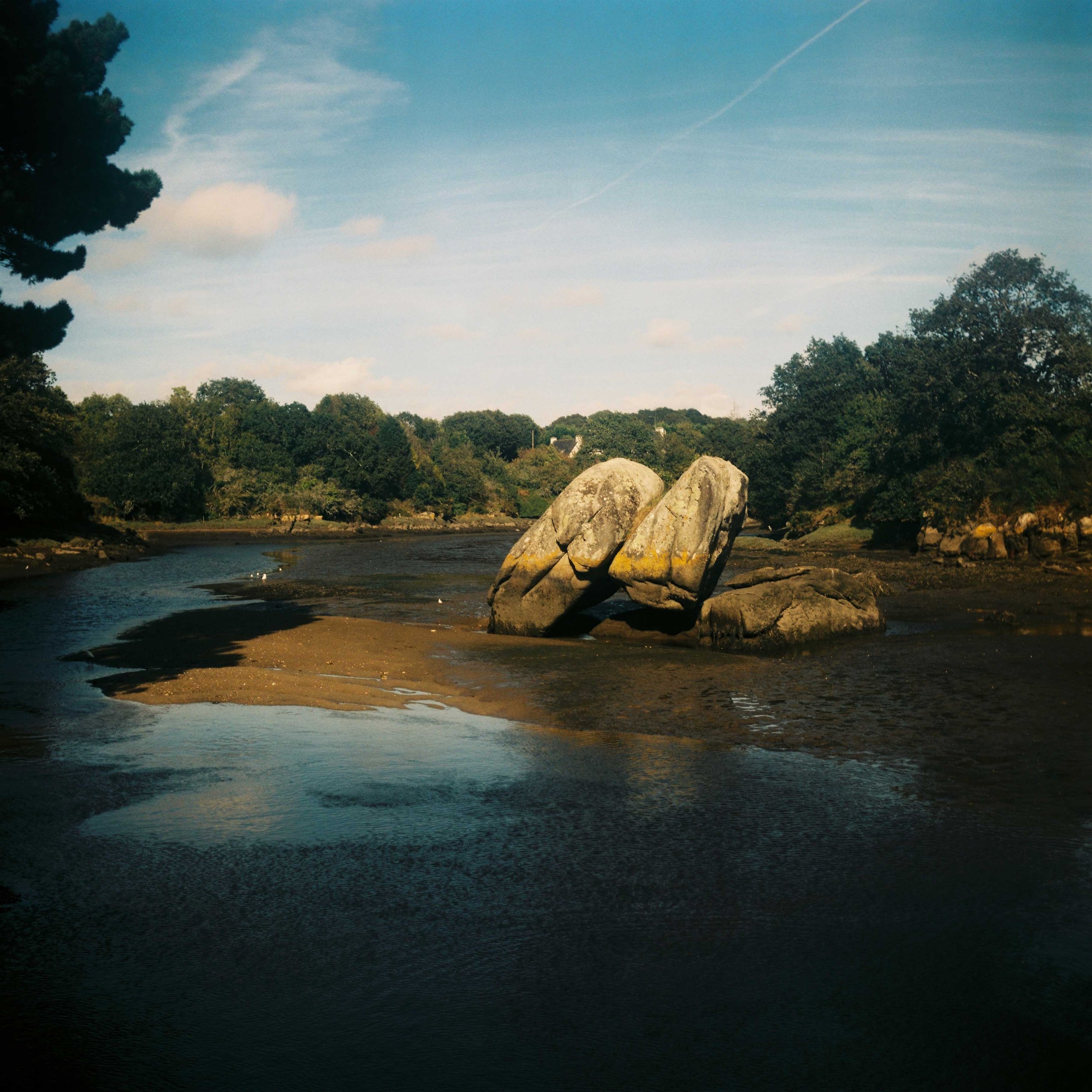
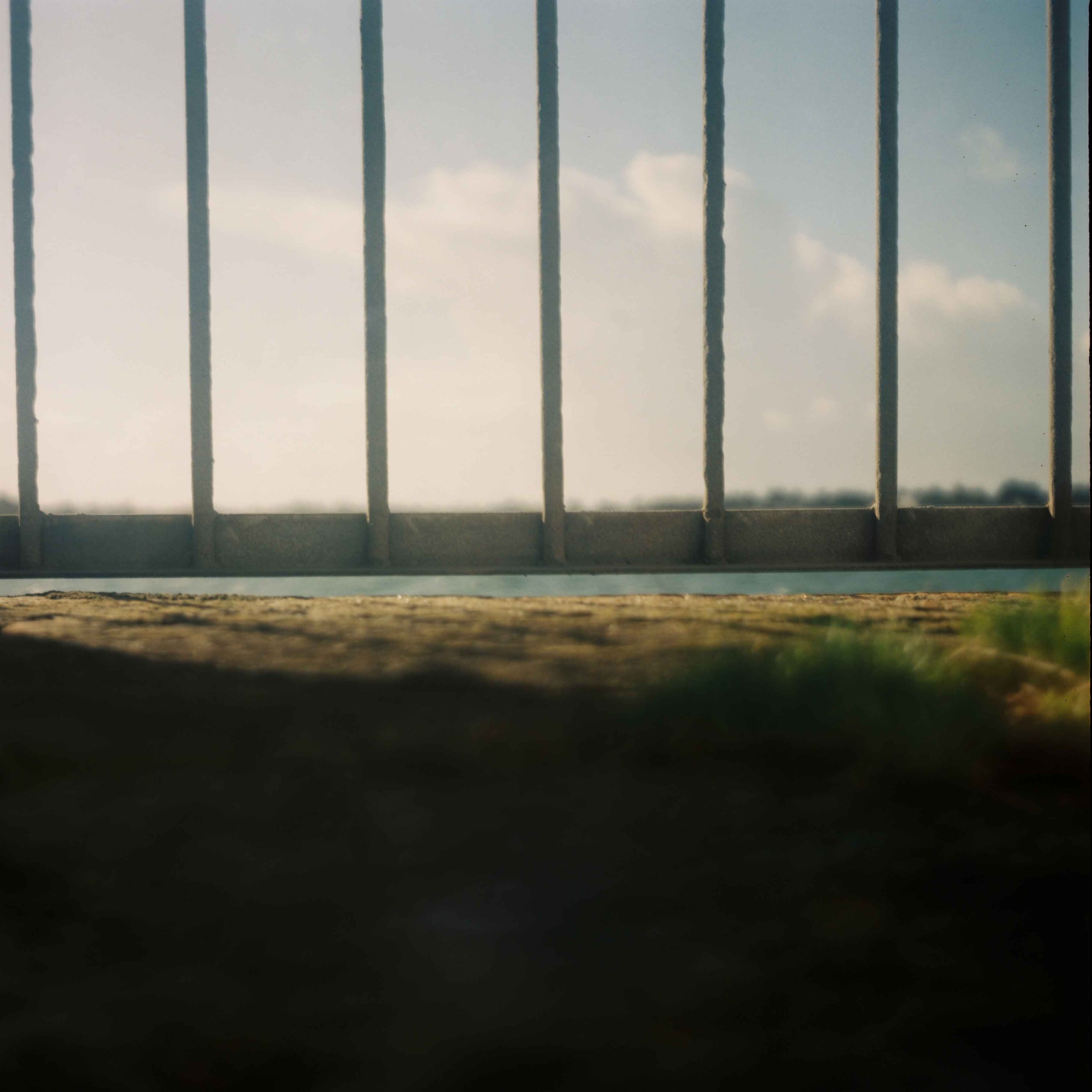
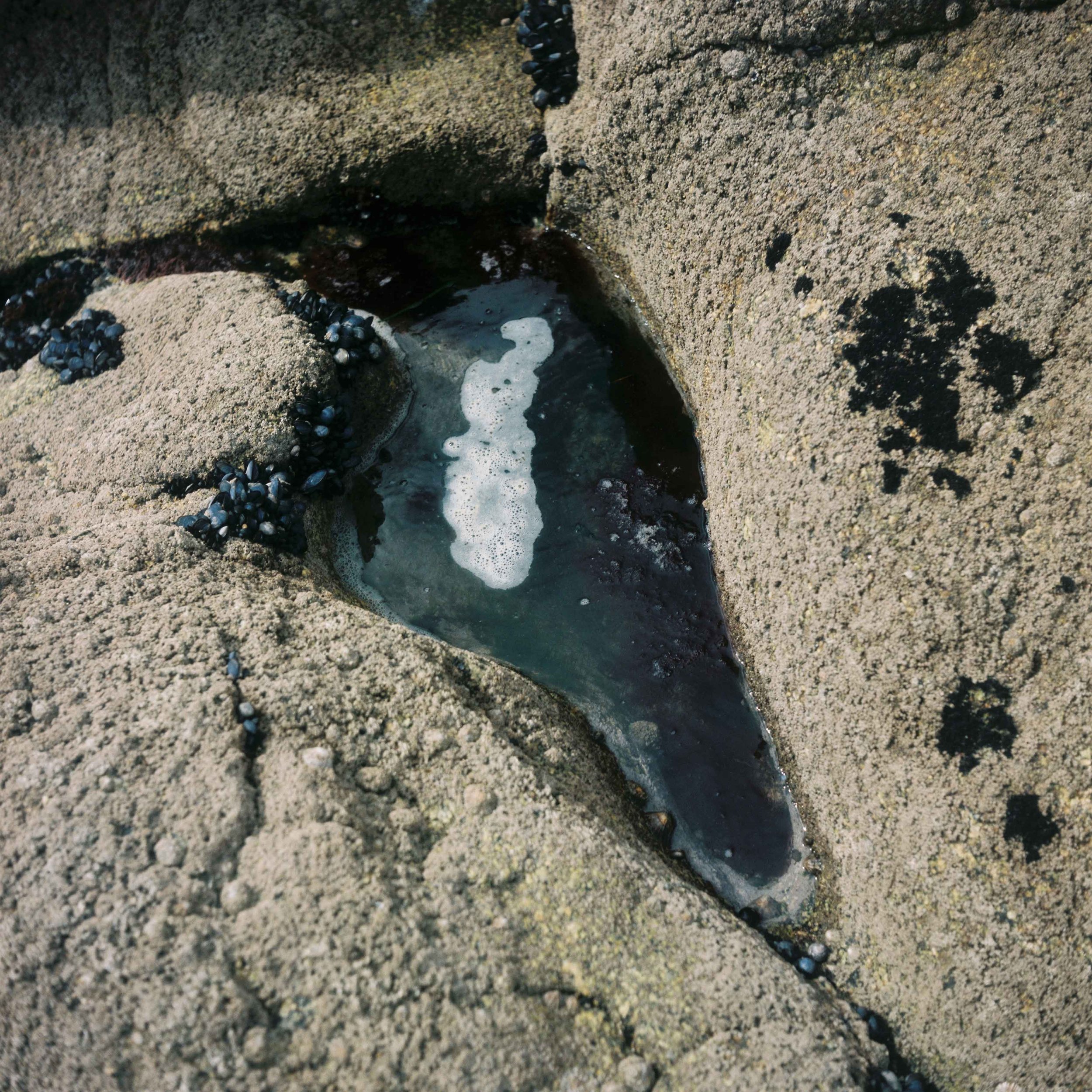

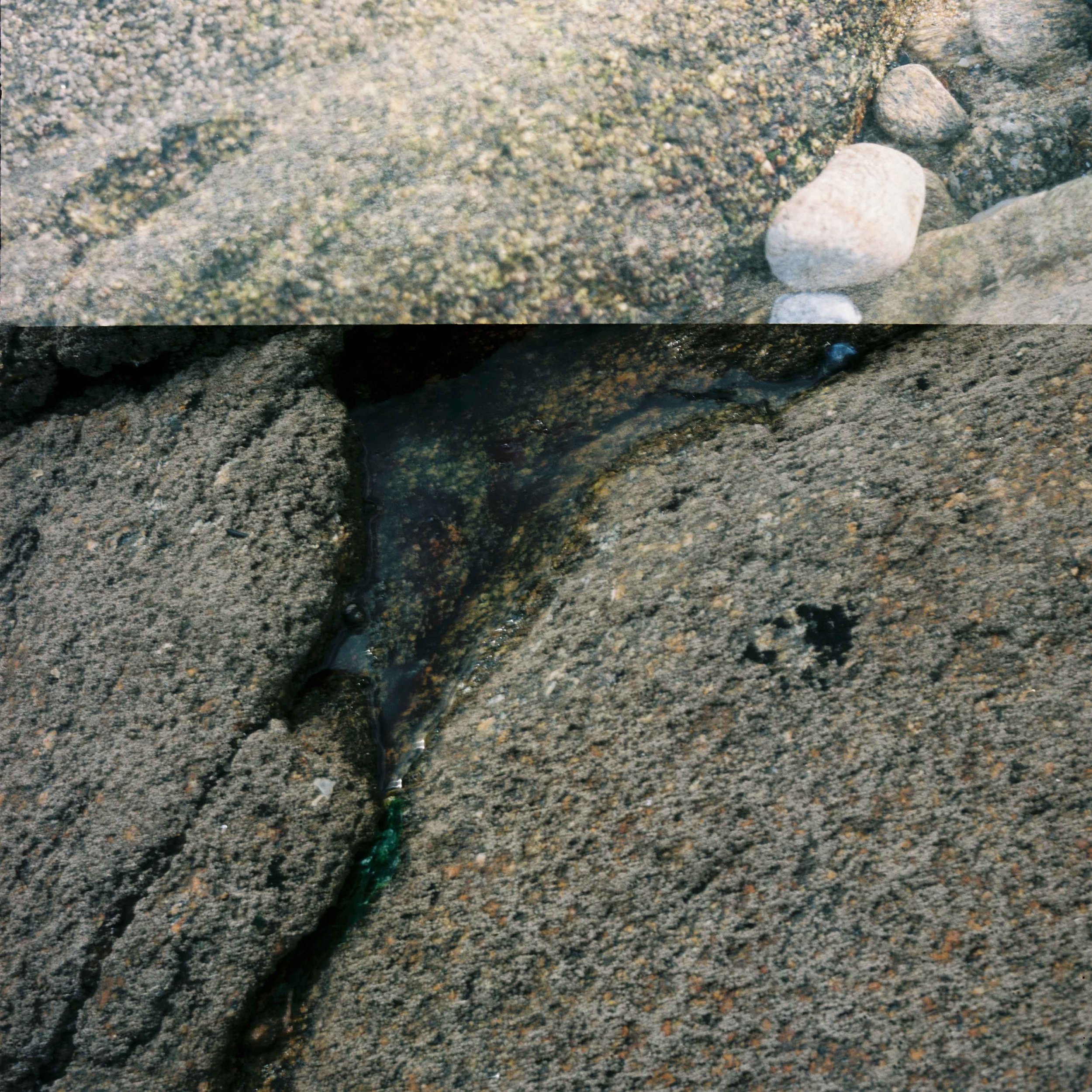

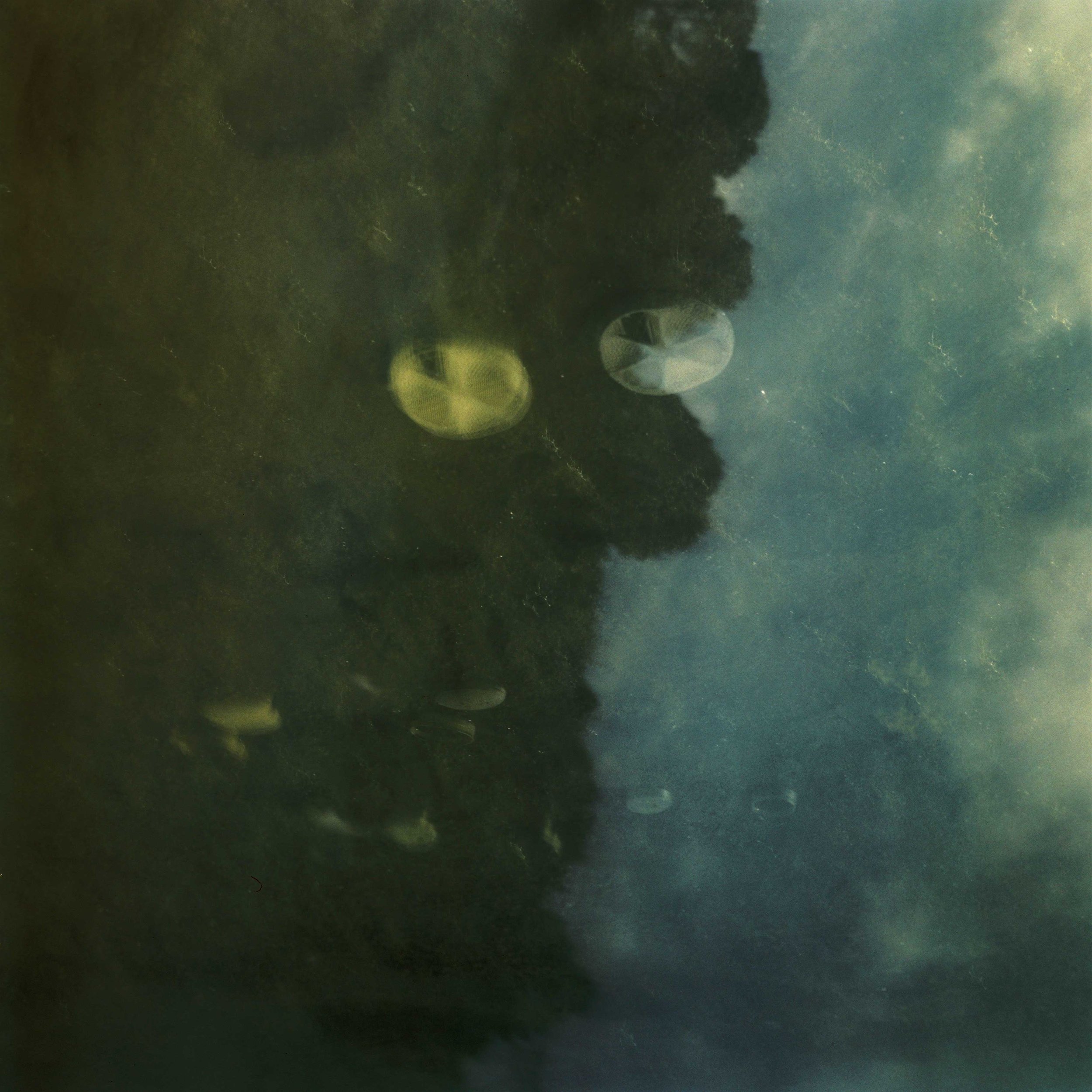
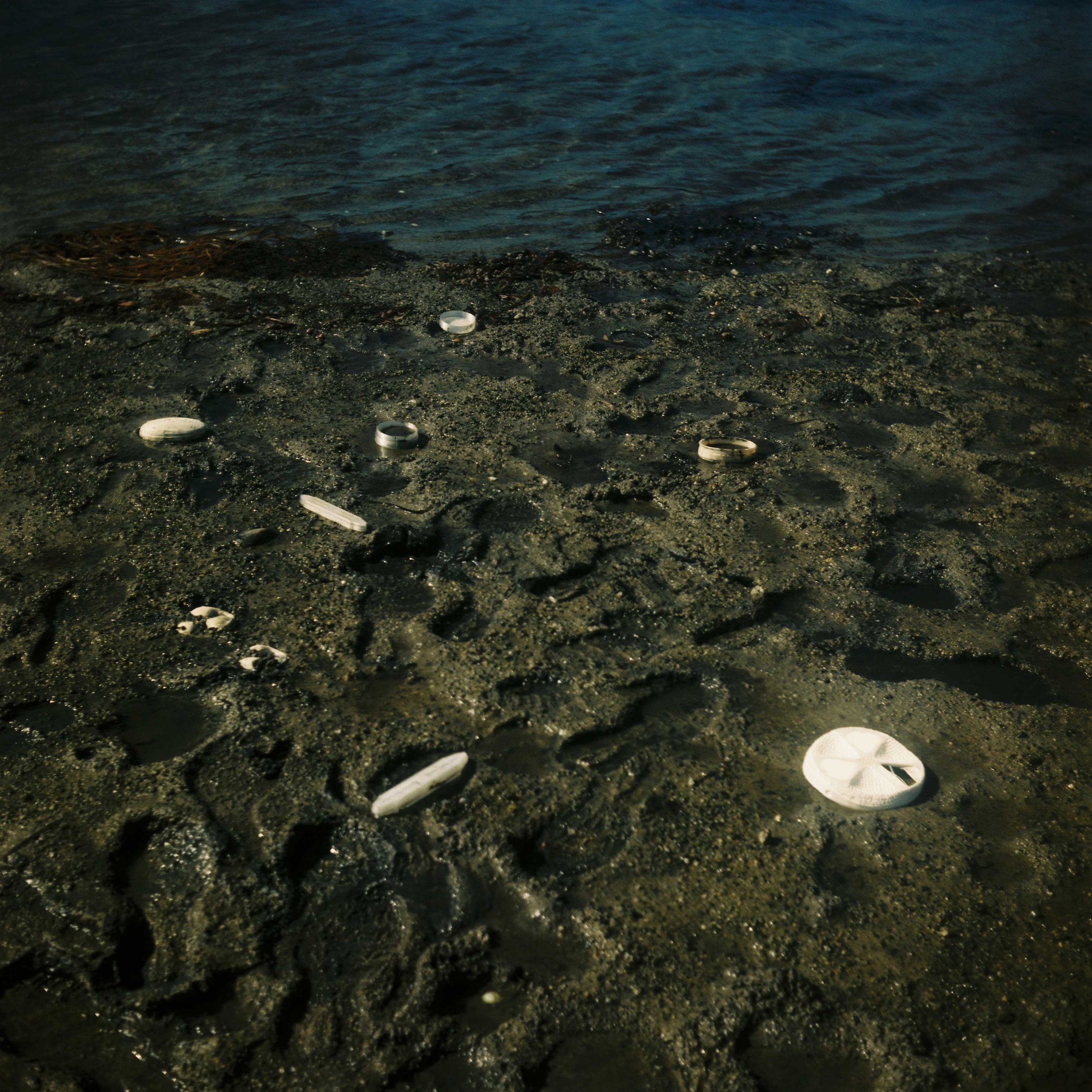
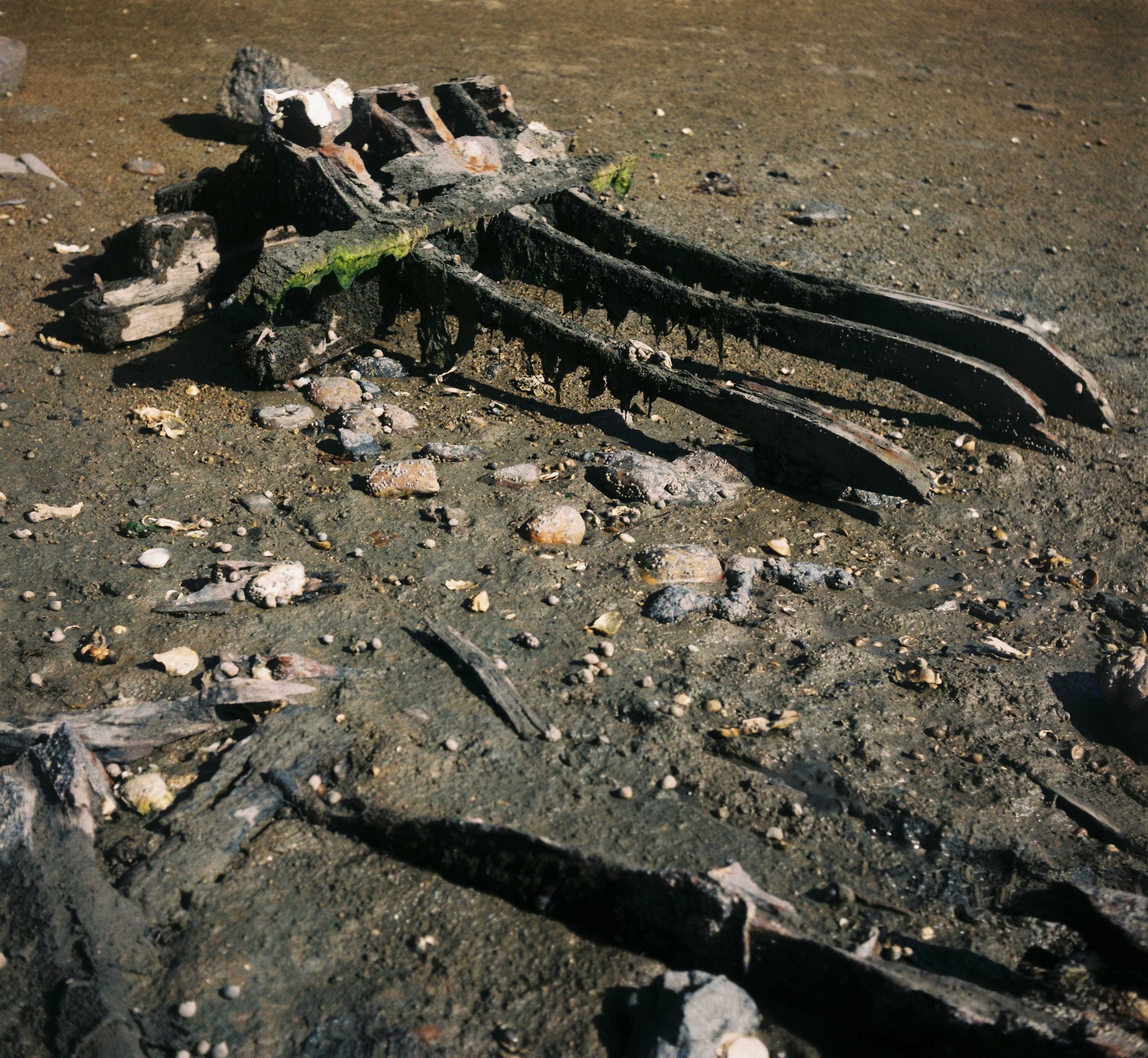

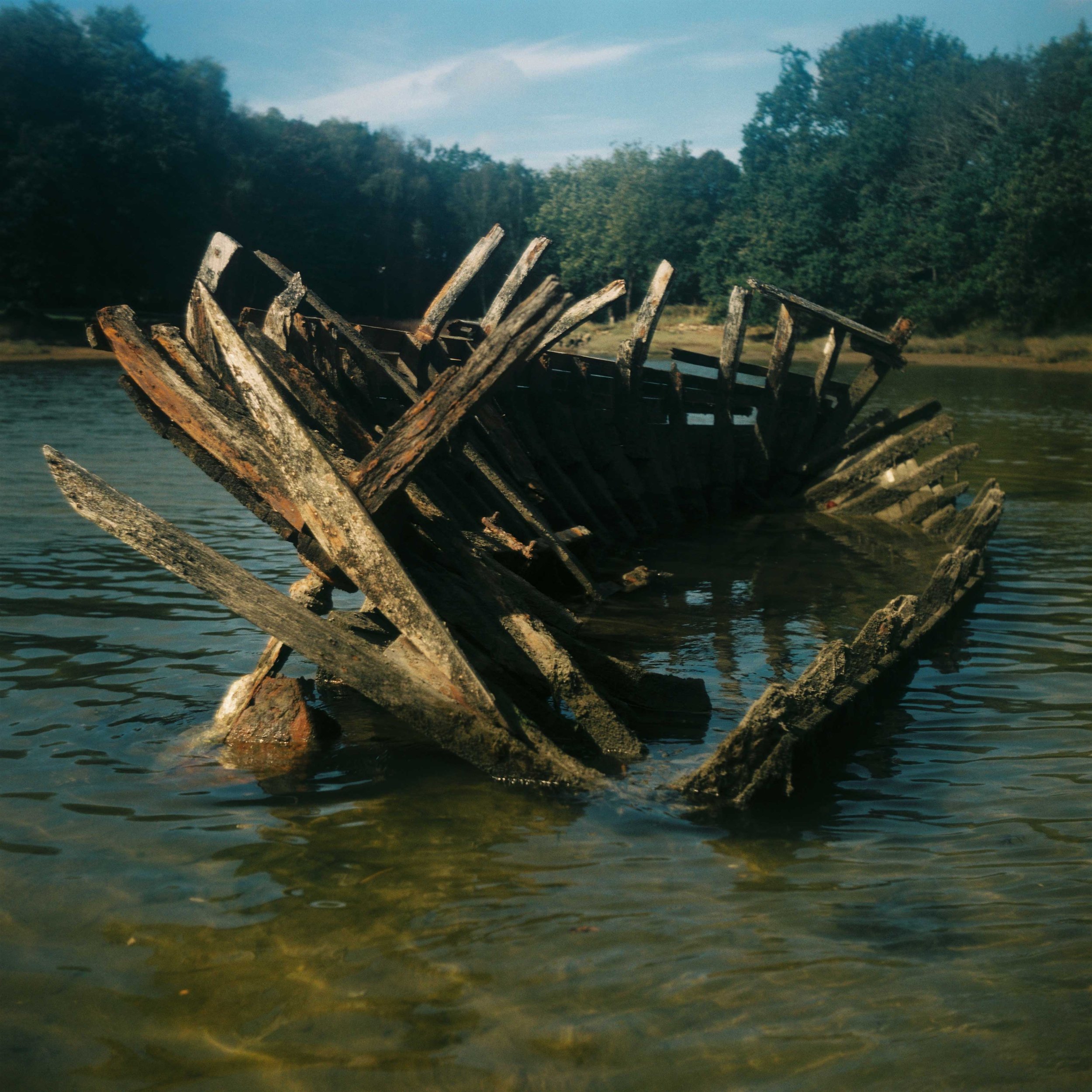
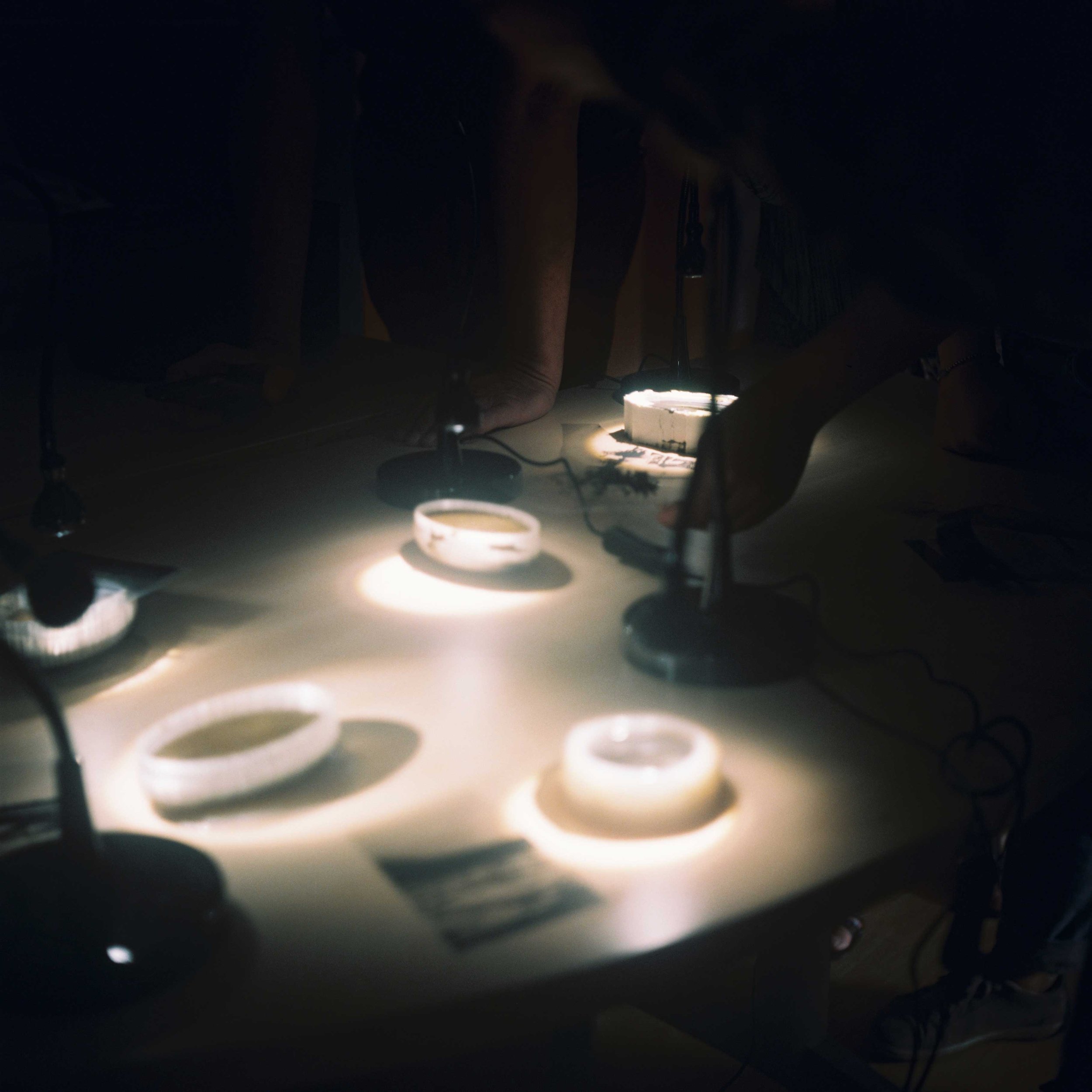
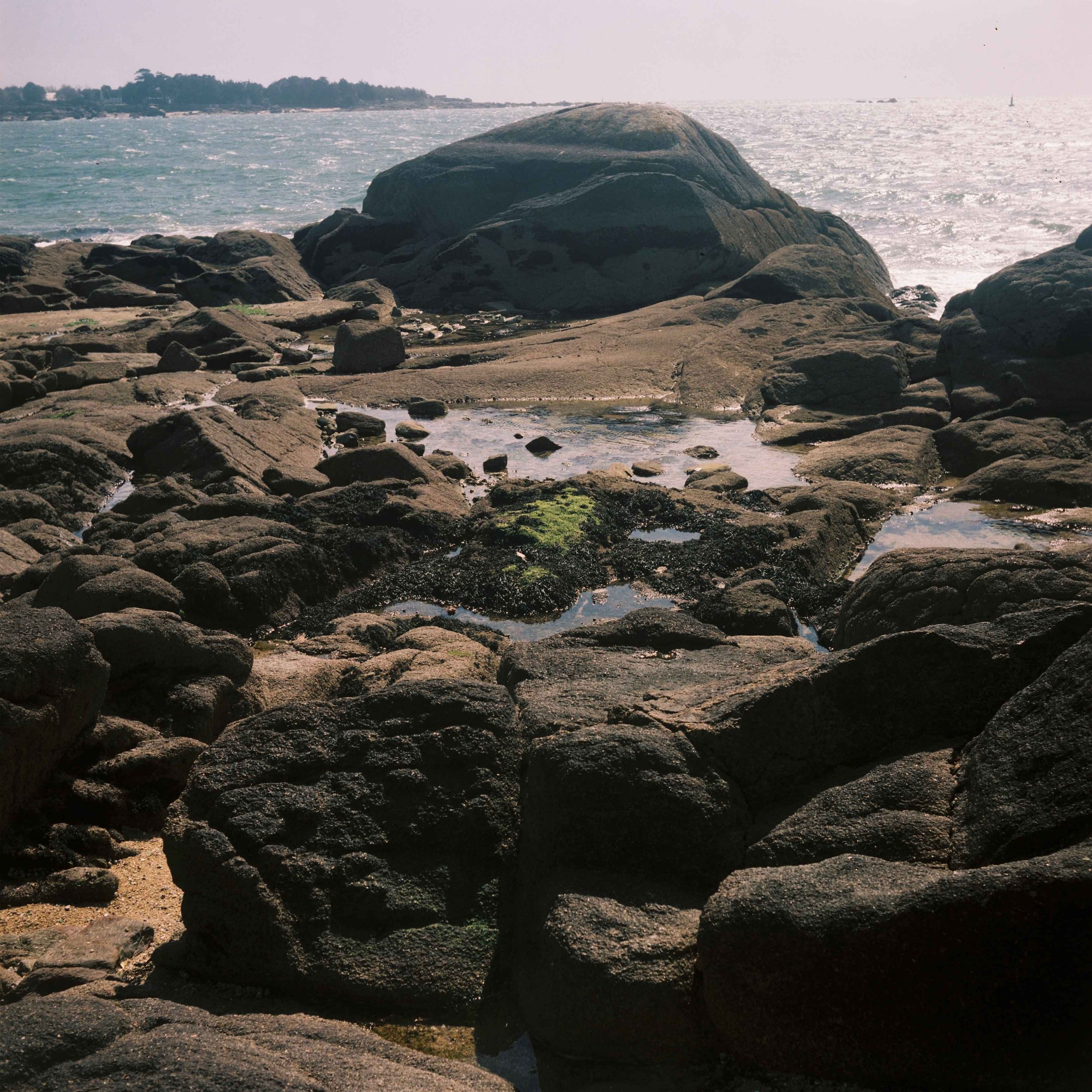
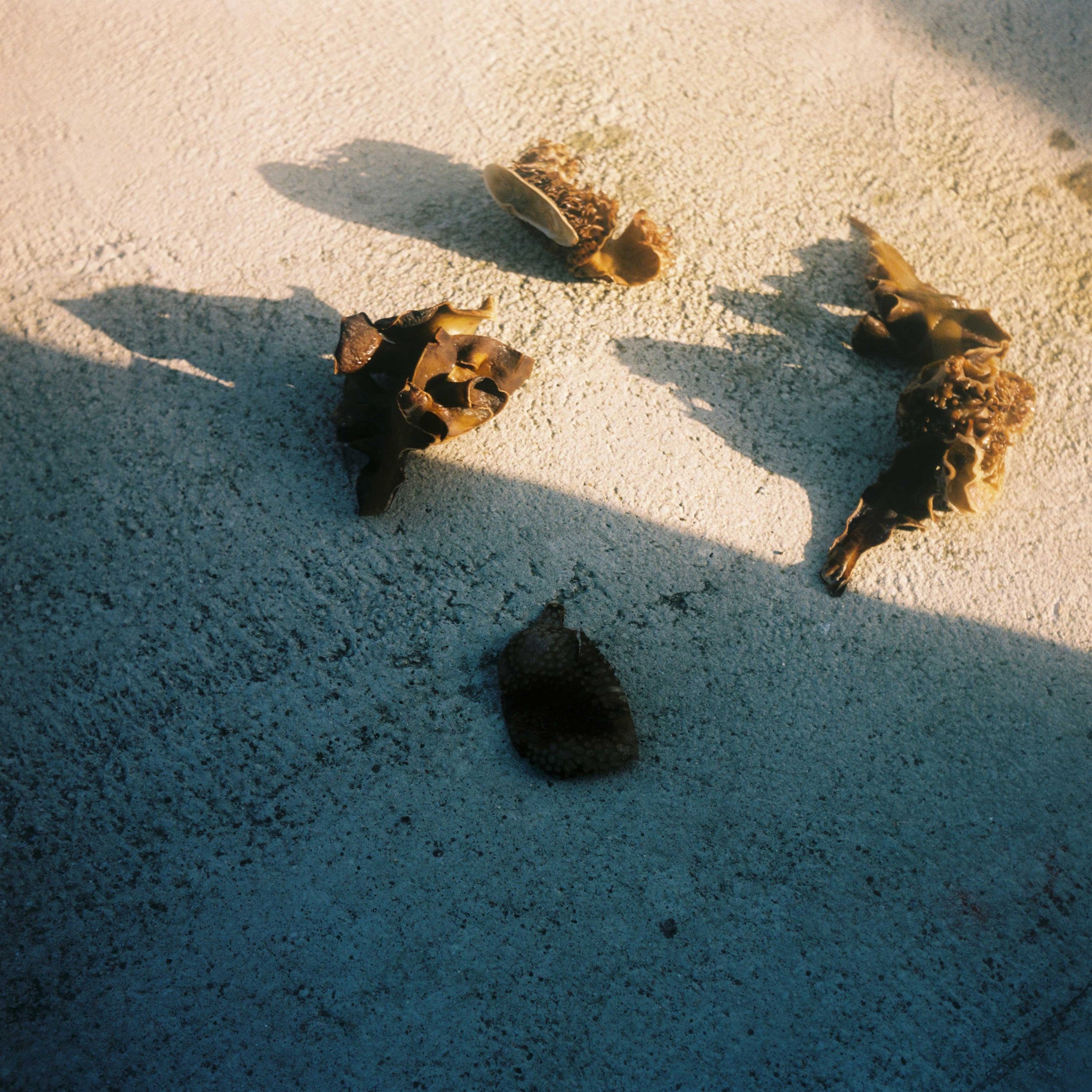
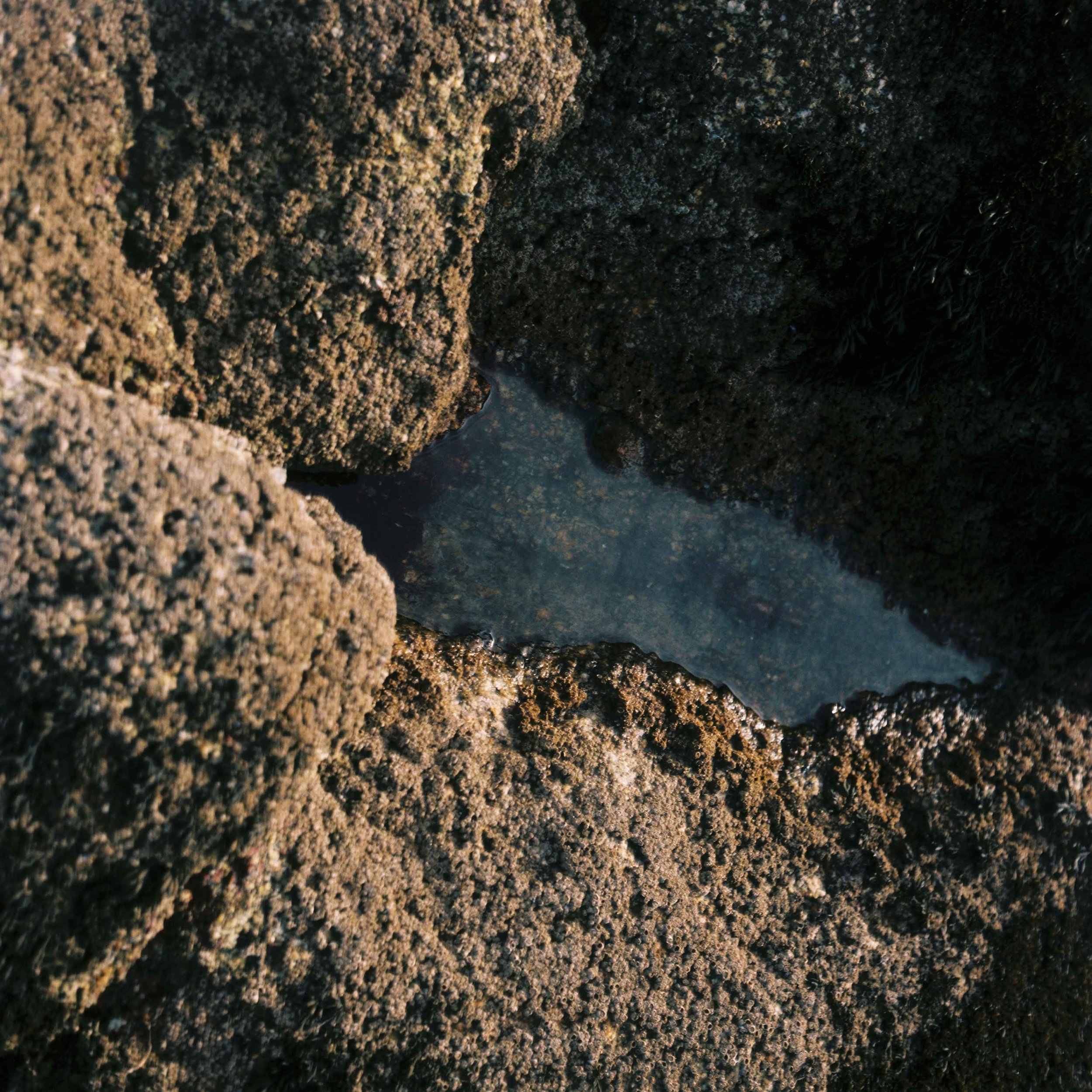
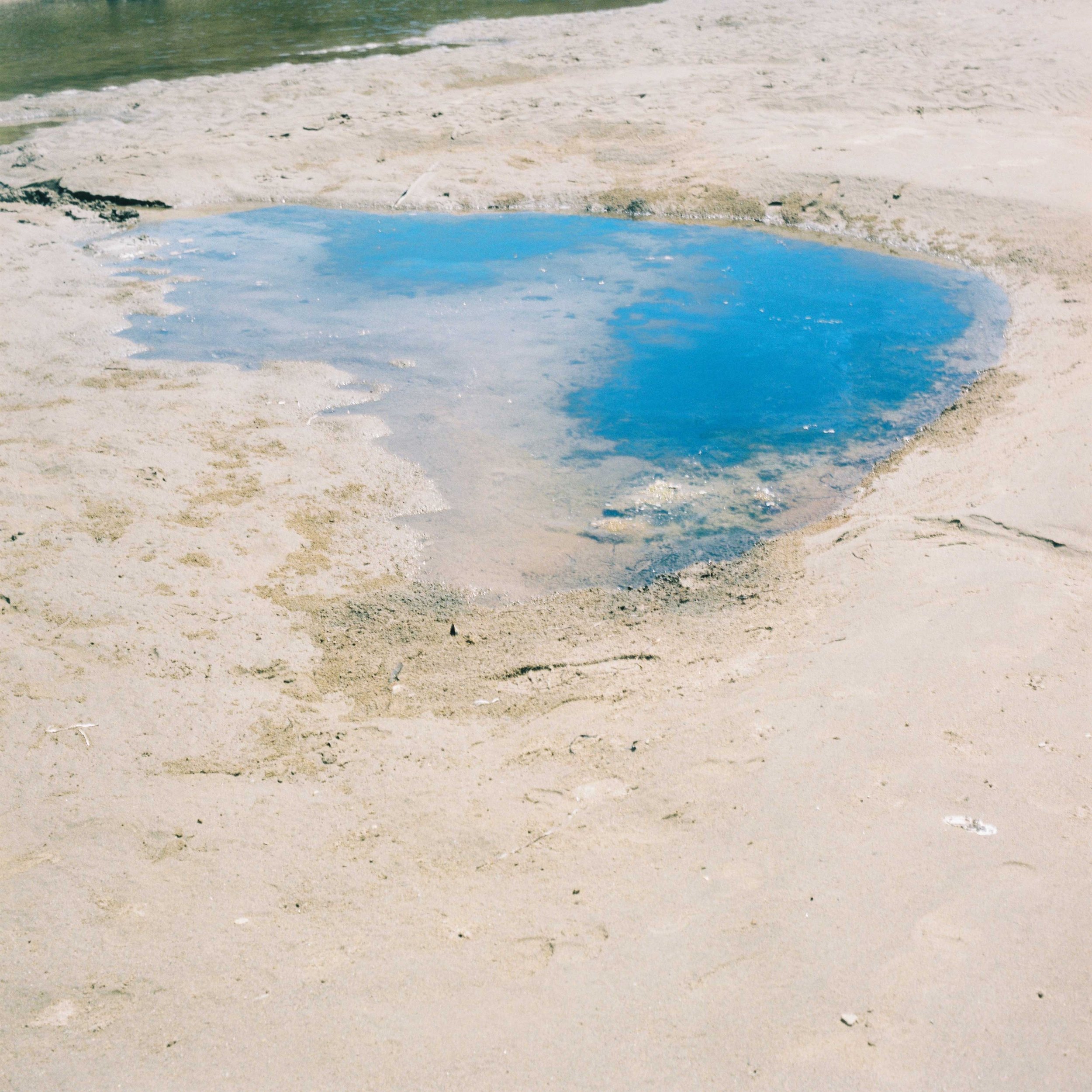

EN: Photographic archives of A familiar veil Part 1, 2021-2023, analog photographic series
This photographic series documents my artistic research in collaboration with Cédric Hubas, marine microbiologist, during a residency at the marine biology research station of the French National Natural History Museum in Concarneau, France, 2021-2023.
The images reveal different stages of developing living images in biofilm : sampling it from the marine station’s aquariums, exposing it to light, and watching the images appear and disappear within it.
The circular containers placed in tidal pools and exposed to light in the laboratory are memory holders : biodegradable containers I created for a series of “memory revelation workshops”, held with groups of both children and adults. The memory holders are entirely biodegradable objects, either molded in agar agar or 3D printed with a bacteria-generated bioplastic filament (PHA). In collaboration with Cédric Hubas and Élisabeth Riera (a researcher at the marine station studying artificial reef structures) and the KonKarLab, I drew on the microscopic SEM (scanning electron microscope) images of the frustules or silica (glass) shells of diatoms, or the photosensitive microorganisms that compose the biofilm. Since these frustules often take on the form of a transparent box, reminiscent of a sarcophagus or a small souvenir box, I decided to design the memory holders as mimetic objects, imitating these diatom frustule structures. This scaled-up mimesis enabled participants to see their memory revealed— thanks to the diatoms’ photosensitivity— within the (mimetic) body of this same organism. With Élisabeth Riera, we also 3D scanned several objects found in the mudflats surrounding the marine station— fragments of boats, rocks, etc. that the biofilm cling to. Mixing the agar agar with biofilm, I also molded the inverse shapes of tidal pools in-situ, as well as scientific tools such as beakers and petri dishes.
In preparation for the workshops, the biofilm was poured into these memory holders, and left in the dark until the diatoms migrated to the surface, forming a uniform brown layer on the surface of the sand. When exposed to light beneath a photographic negative (carrying a text or image produced by of one of the workshop participants) the diatoms beneath the transparent parts of the negative sunk back into the sand to avoid the light, whereas those underneath the black parts of the negative remained on the surface. When the negative was removed, the result was a floating, diatom-composed photographic image that receded gradually into the sand as the entire memory holder was exposed to light. Once the living images in each memory holder had disappeared, I returned them to the sea, by placing them in the tidal pools next to the marine biology station to naturally degrade.
FR : Archives photographiques de A familiar veil, Part I, 2021-2023, série de photographies argentiques.
Cette série photographique documente ma recherche artistique en collaboration avec Cédric Hubas, microbiologiste marin, au cours d’une résidence art-science à la station de biologie marine du Muséum National d’Histoire Naturelle à Concarneau France, 2021-2023.
Les images montrent les différentes étapes de recherche : la collecte du biofilm depuis les viviers de la station marine de Concarneau et les cuvettes sur le strand voisinant, son exposition à la lumière, et l’observation des images qui y apparaissaient et disparaissaient.
Cette série documente également les memory holders, ou les receptacles de la mémoire. Ce sont des conteneurs que j’ai fabriqués pour les ateliers de “révélation de la mémoire” au Marinarium à Concarneau grâce à deux matériaux biodégradables : de l’agar agar et du filament 3D PHA, un bioplastique issu des bactéries. En collaboration avec Cédric Hubas et Élisabeth Riera (chercheuse du MNHN spécialisé dans les structures des récifs artificiels) et le KonKarLab, je me suis inspirée des images microscopiques MEB (microscope électronique de balayage) des frustules, ou des corps en silice (verre) des diatomées, les micro-algues photosensibles qui constituent ce biofilm. Comme les frustules des diatomées prennent souvent des formes de boites, rappelant parfois un sarcophage ou une petite boite à souvenirs, j’ai décidé de concevoir ces “memory holders” comme des frustules agrandies. Cette mimesis a permis aux participants de voir leur souvenir révélé dans le “corps” d’une diatomée, le même organisme qui a généré le souvenir à une plus petite échelle grâce à sa photosensibilité. Avec Elisabeth Riera, nous avons également réalisé des scans 3D des objets qui émergent de la vase (restes de bateaux, pierres, etc.), soit le support-habitat du biofilm. En mélangeant de l’agar agar avec du biofilm, j’ai également moulé les cuvettes in-situ ainsi que des outils scientifiques (boites de petri, etc.).
Afin de préparer les ateliers, le biofilm a été versé au sein des “memory holders”, puis laissés dans le noir jusqu’à ce que les diatomées aient migré à la surface, formant ainsi un tapis brunâtre sur le sable. Une fois exposées à la lumière sous un négatif photographique (qui porte le texte ou image d’un participant), les diatomées positionnées en dessous des parties transparentes du négatif sont plongées dans le sable afin d’éviter la lumière, alors que celles positionnées en-dessous des parties noires du négatif sont restées sur la surface. Après le retrait du négatif, le participant aperçoit ainsi une image flottante composée de diatomées qui rétrécit petit à petit. Une fois que ces images éphémères aient disparues, j’ai rendu ces “memory holders” à la mer, en les plaçant dans les cuvettes à côté de la station marine pour se dégrader naturellement.
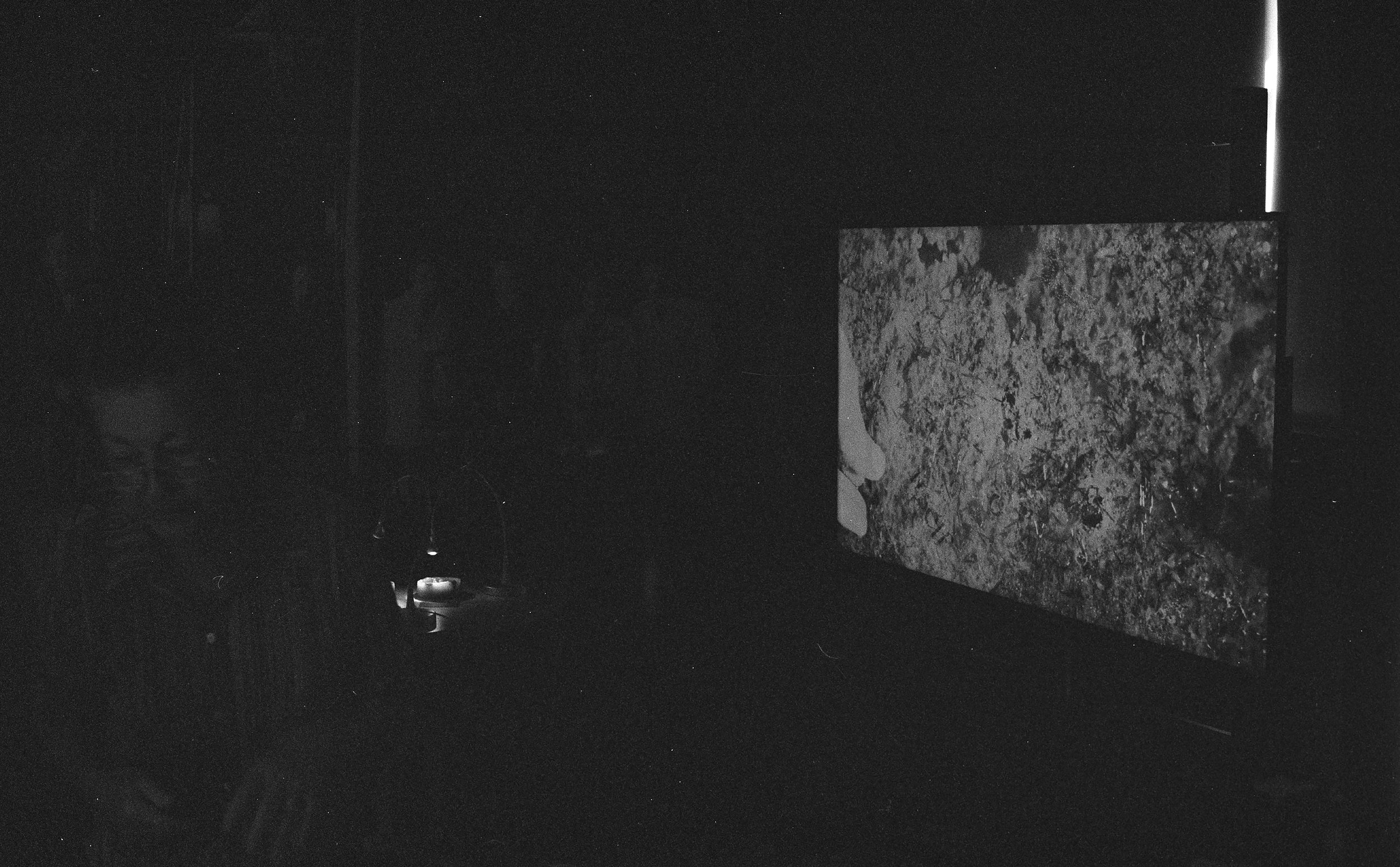
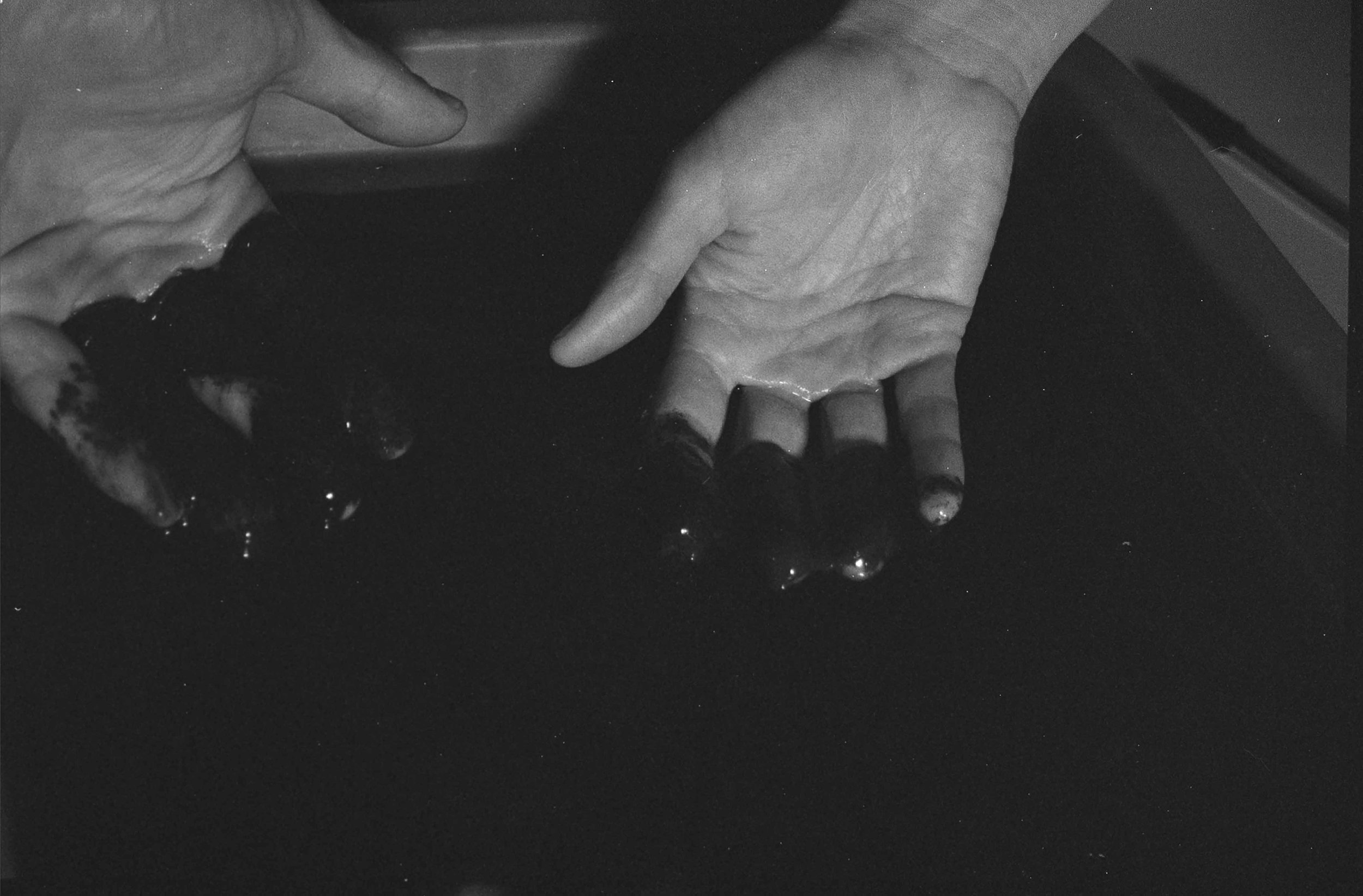
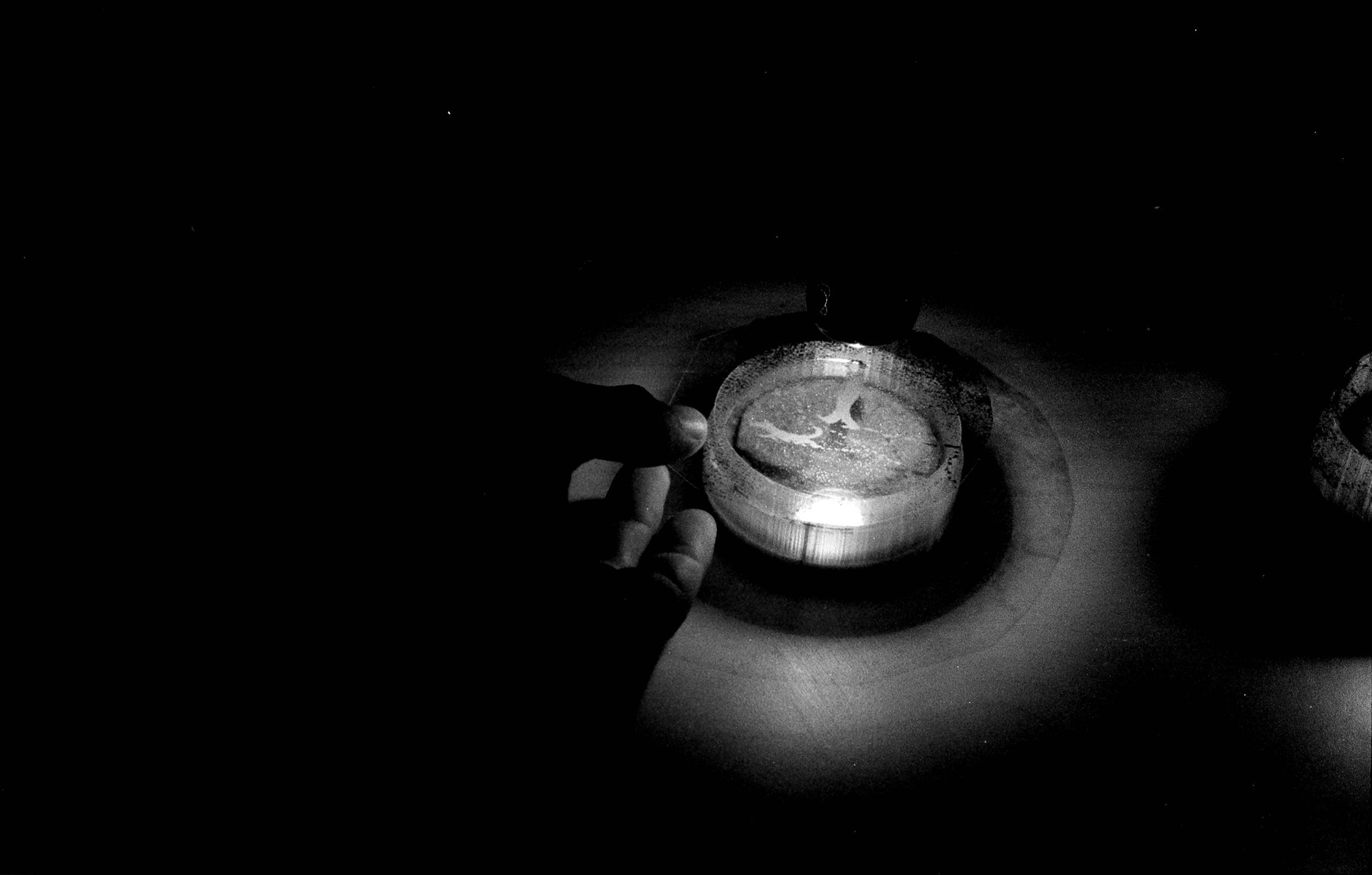
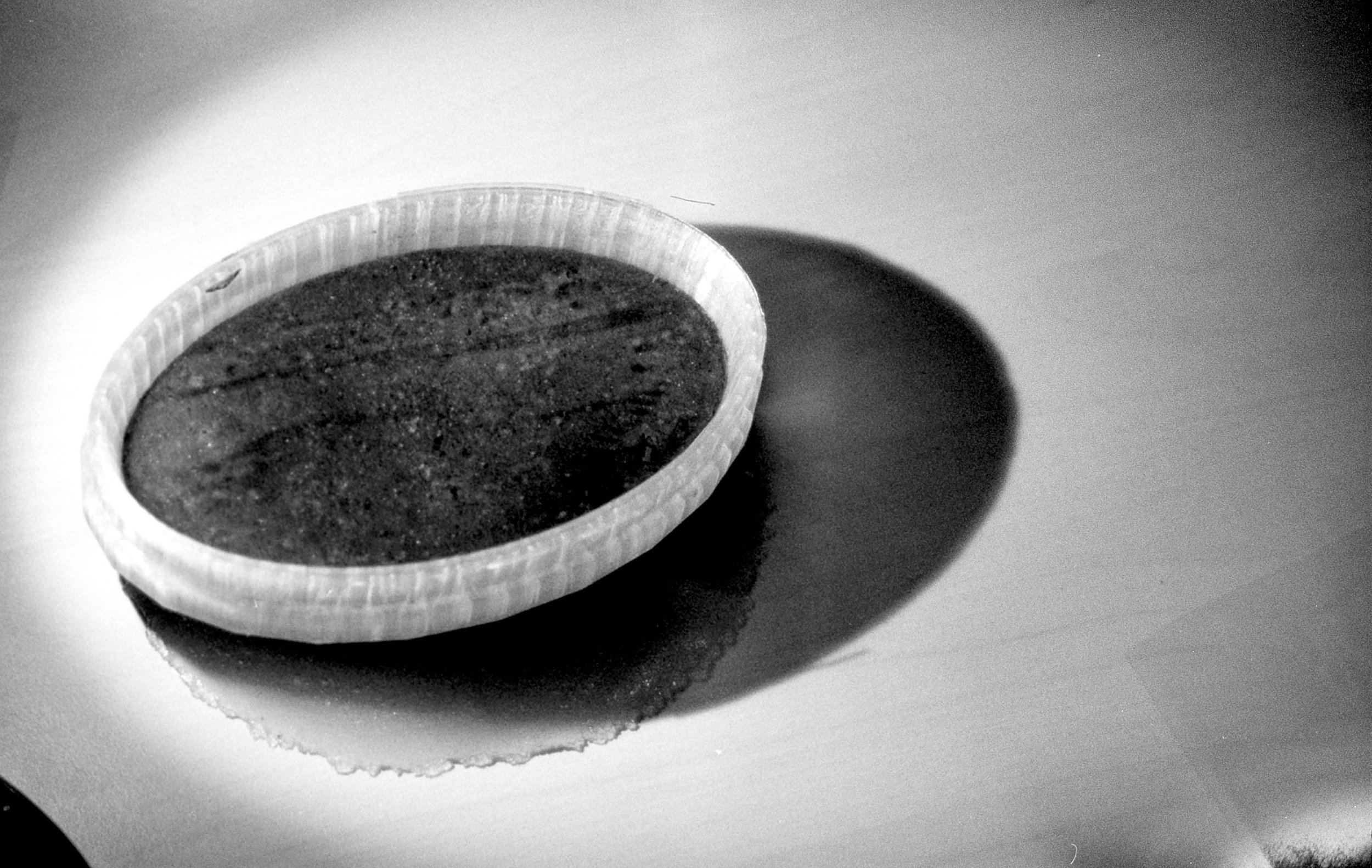
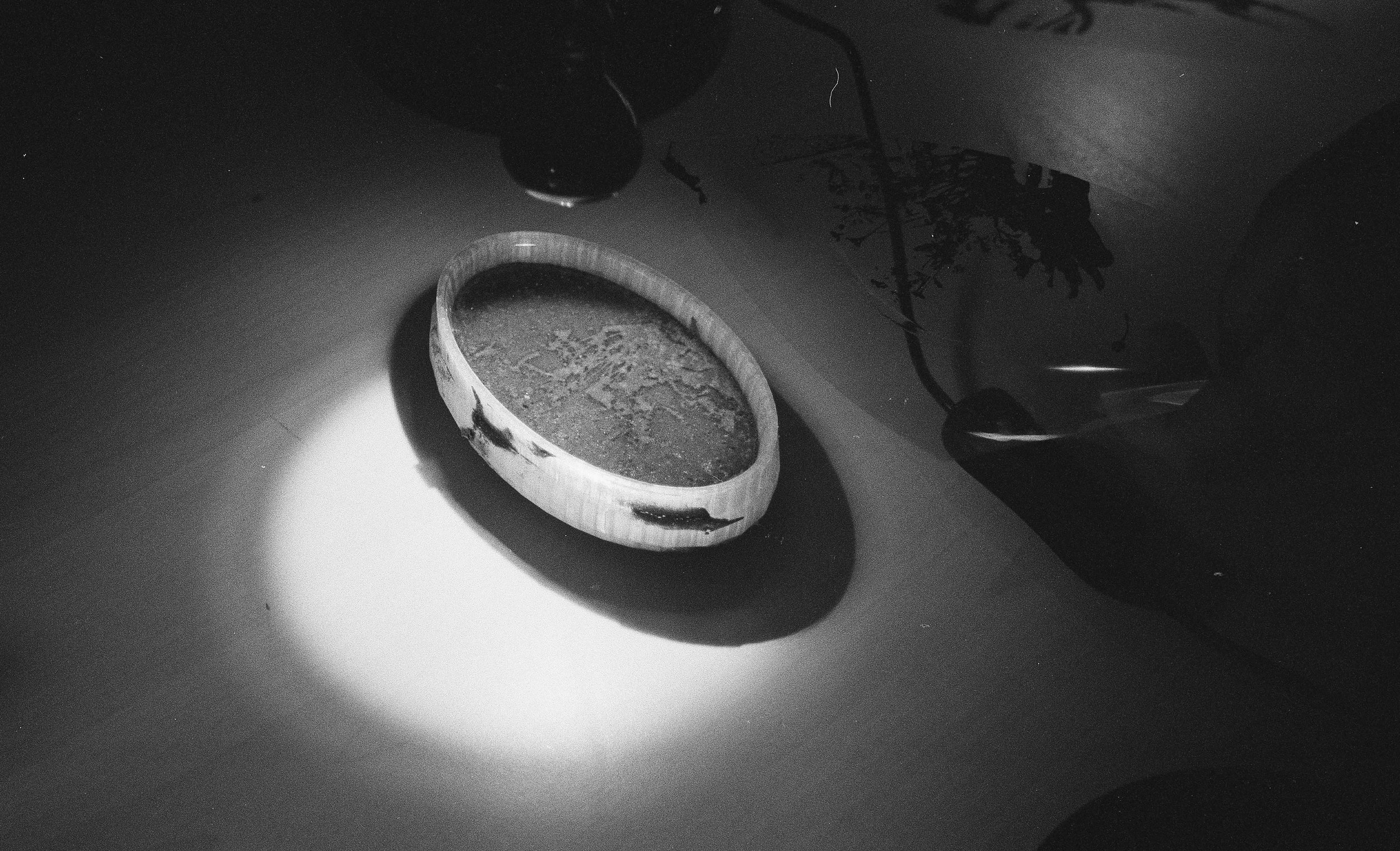
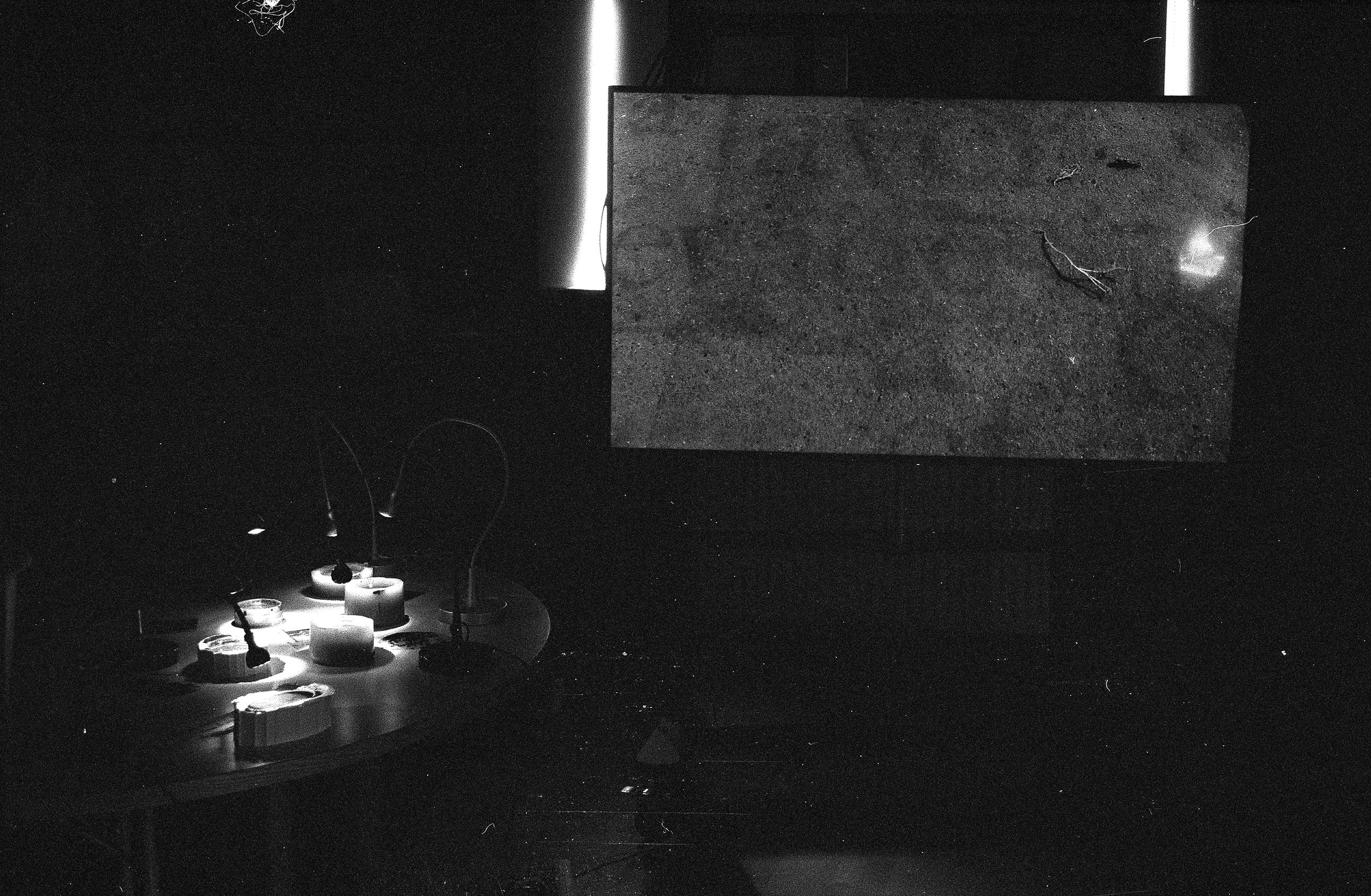
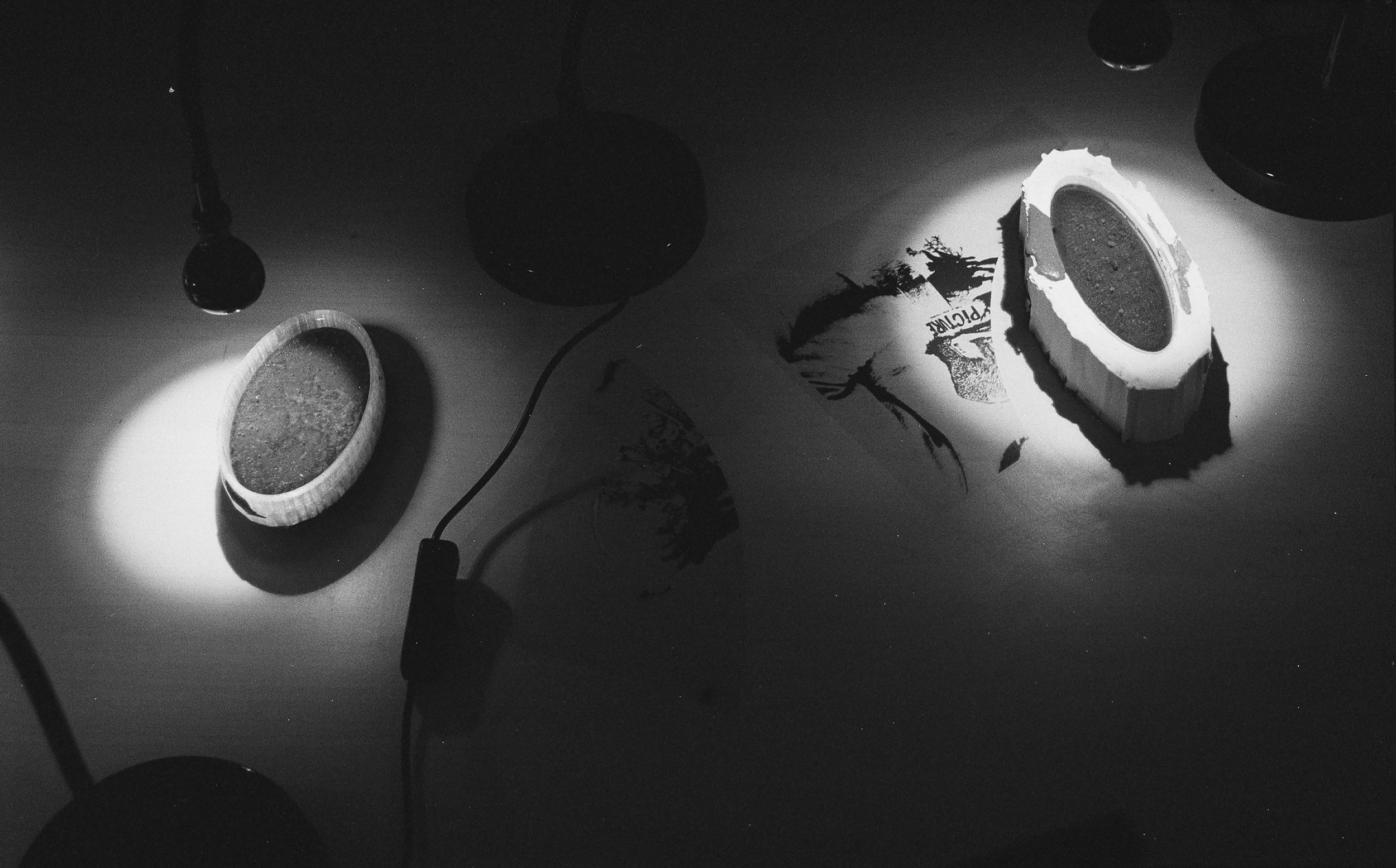
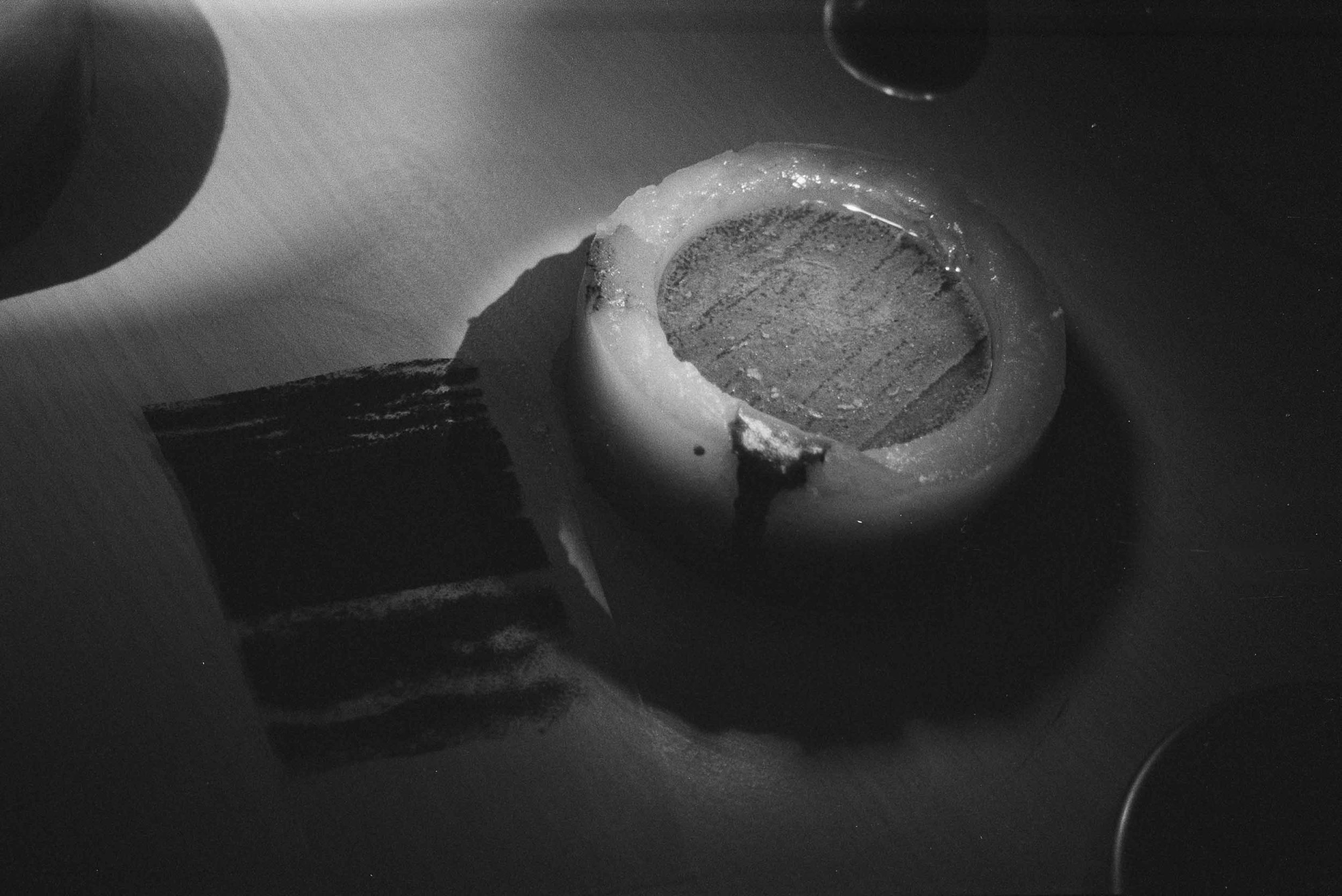
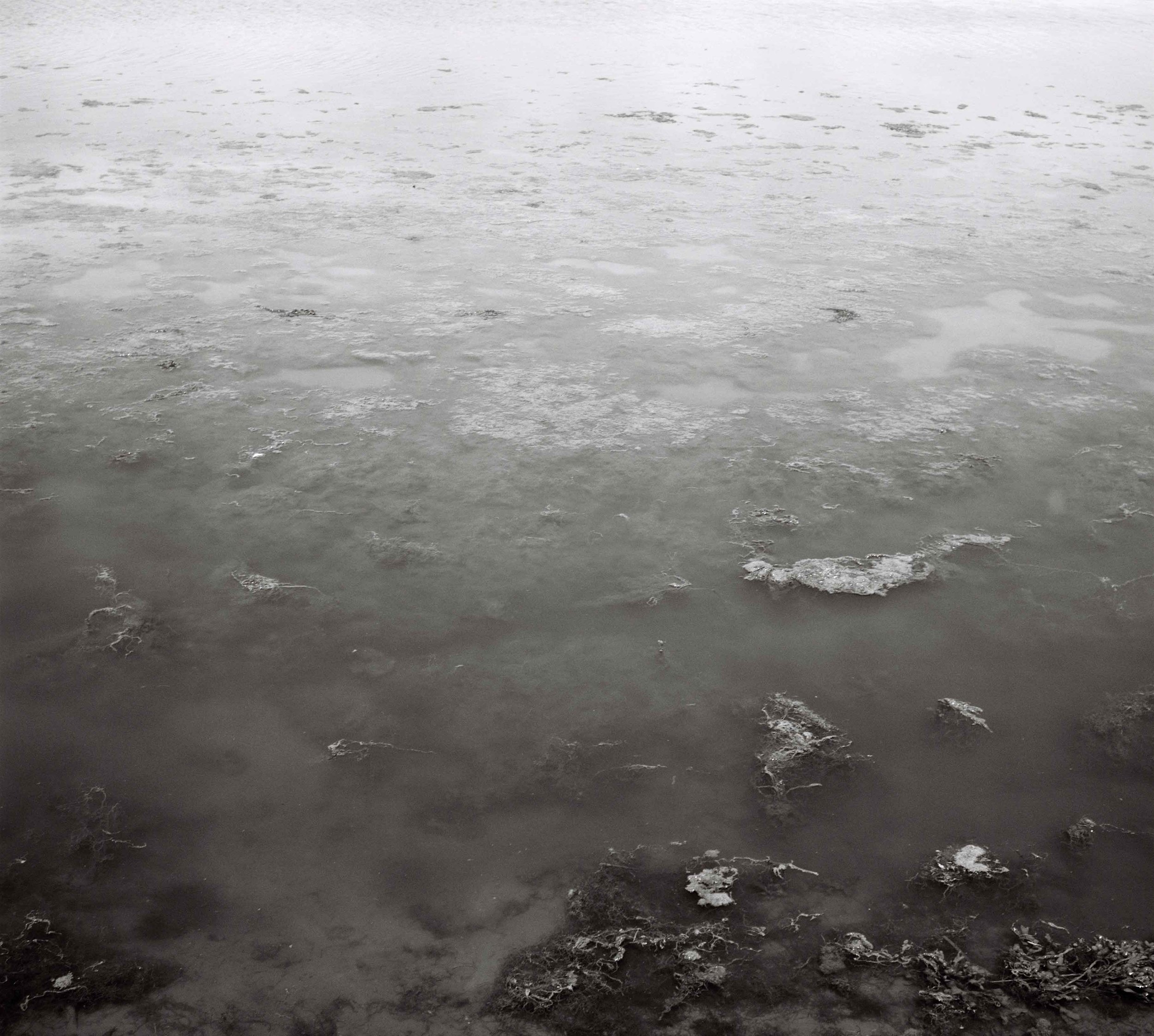
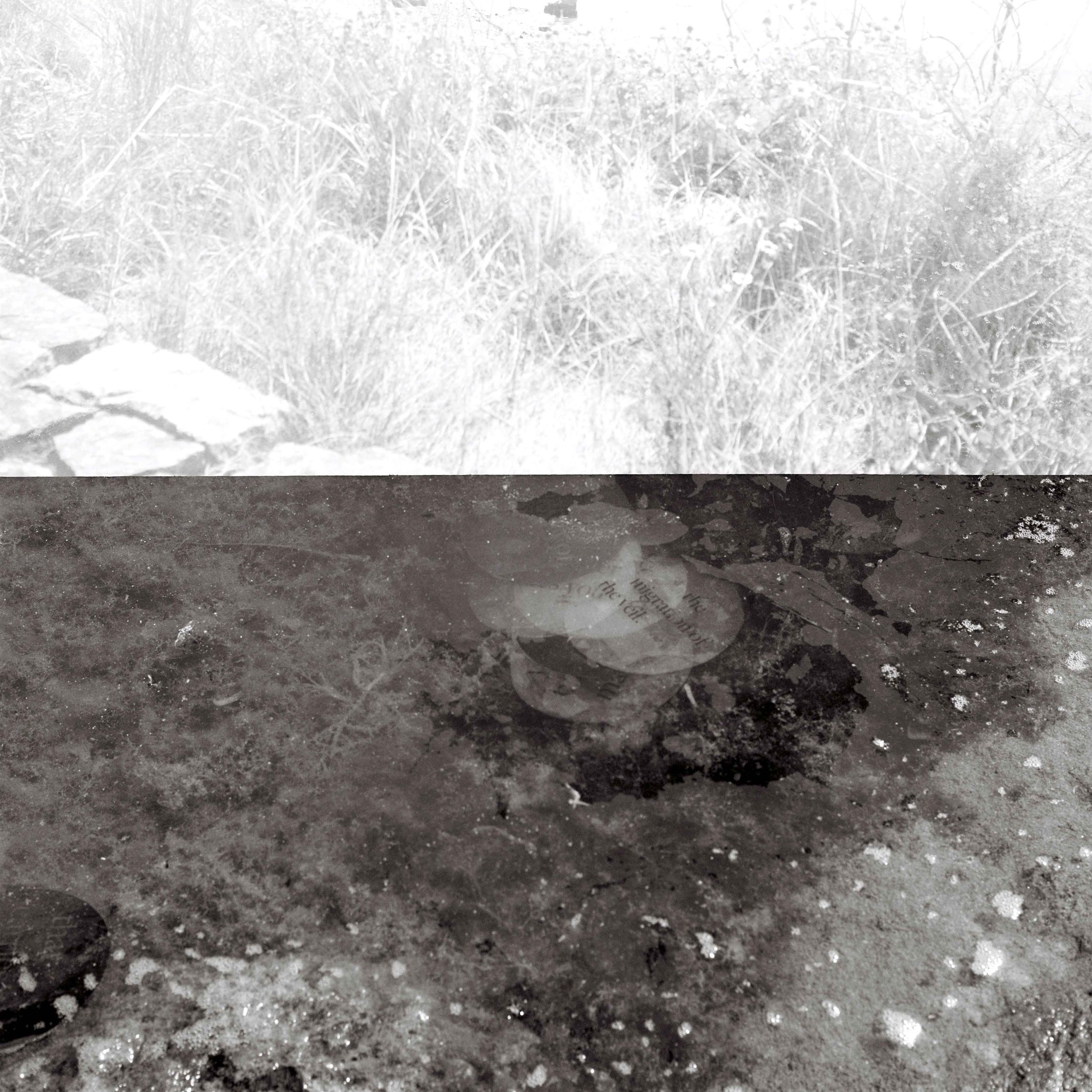
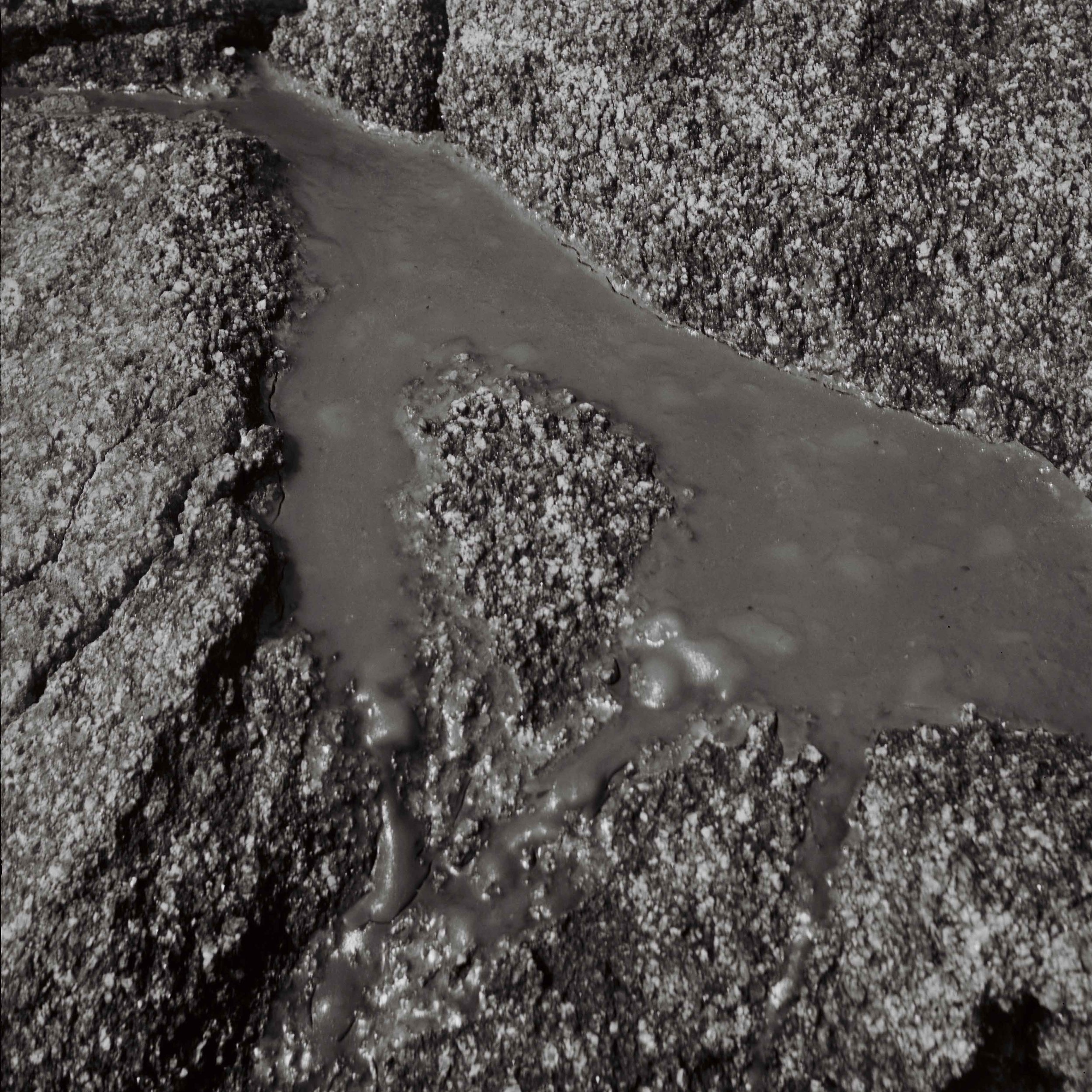

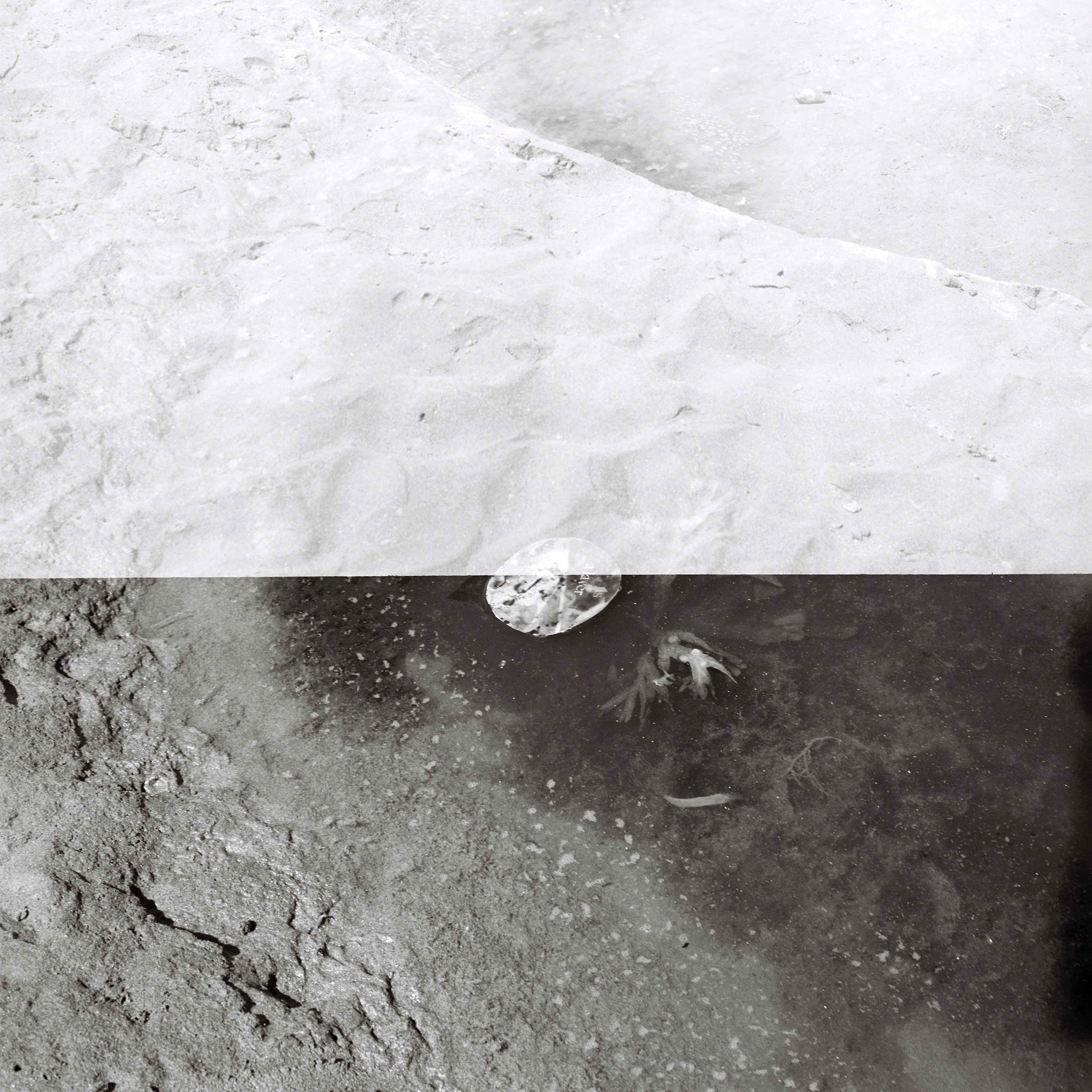
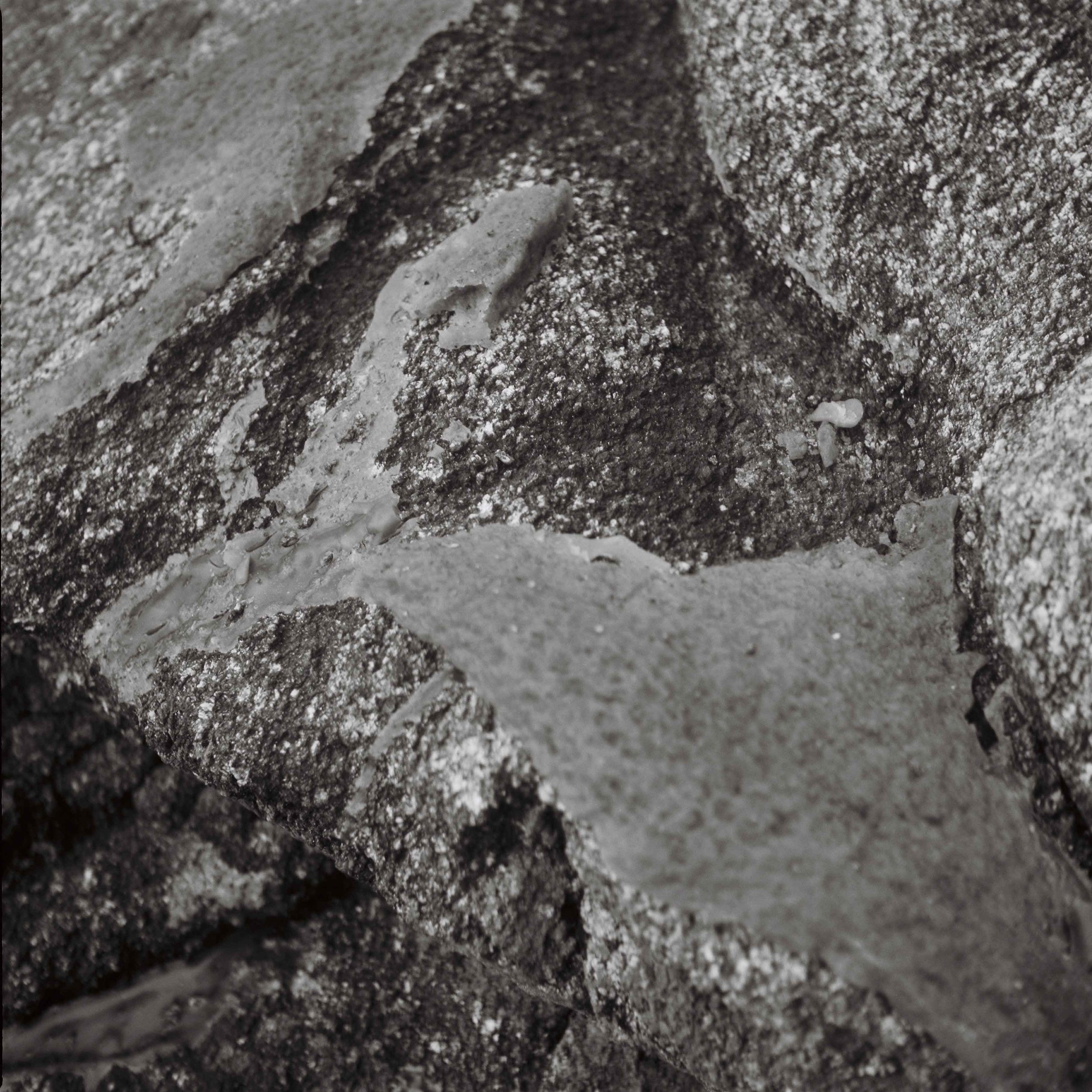
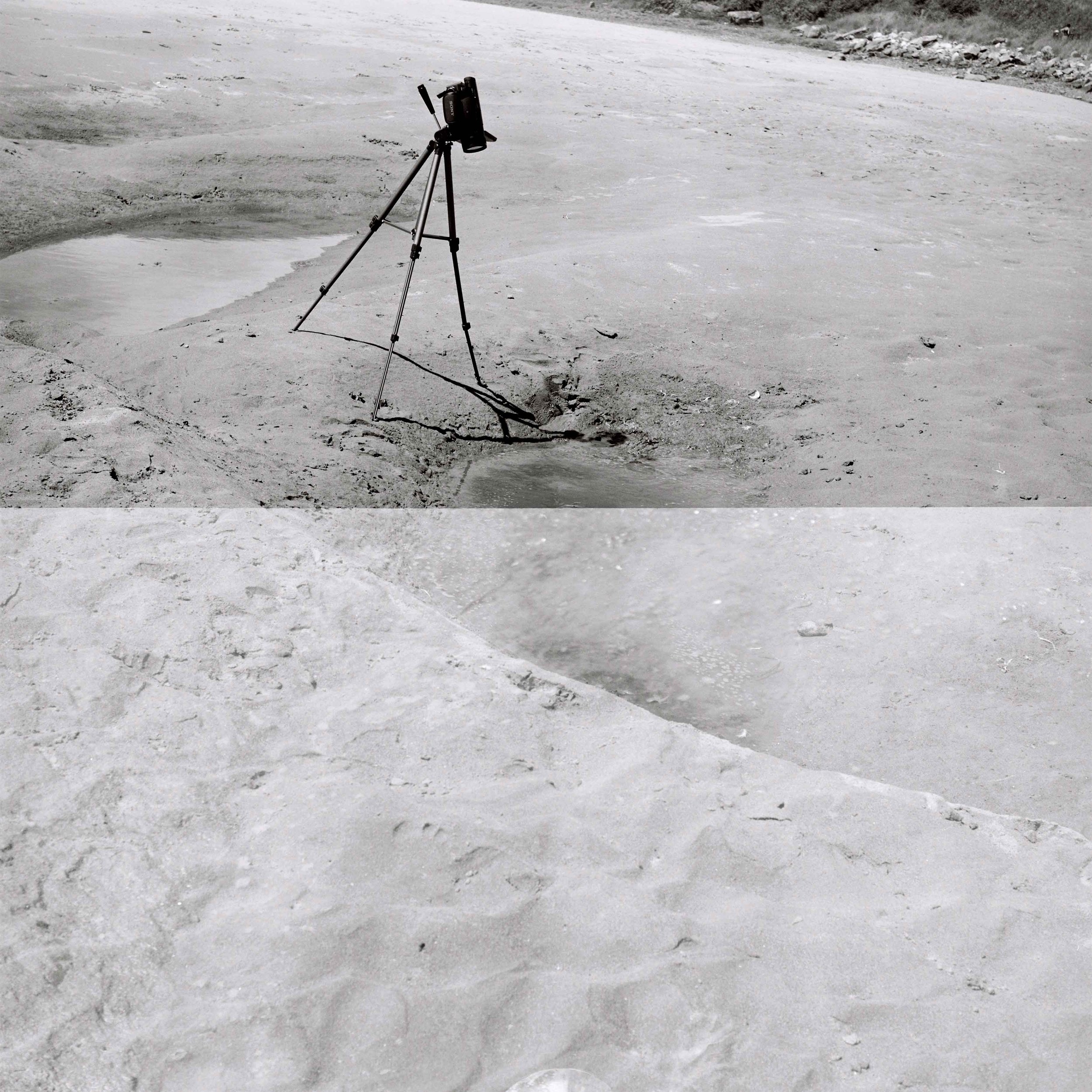
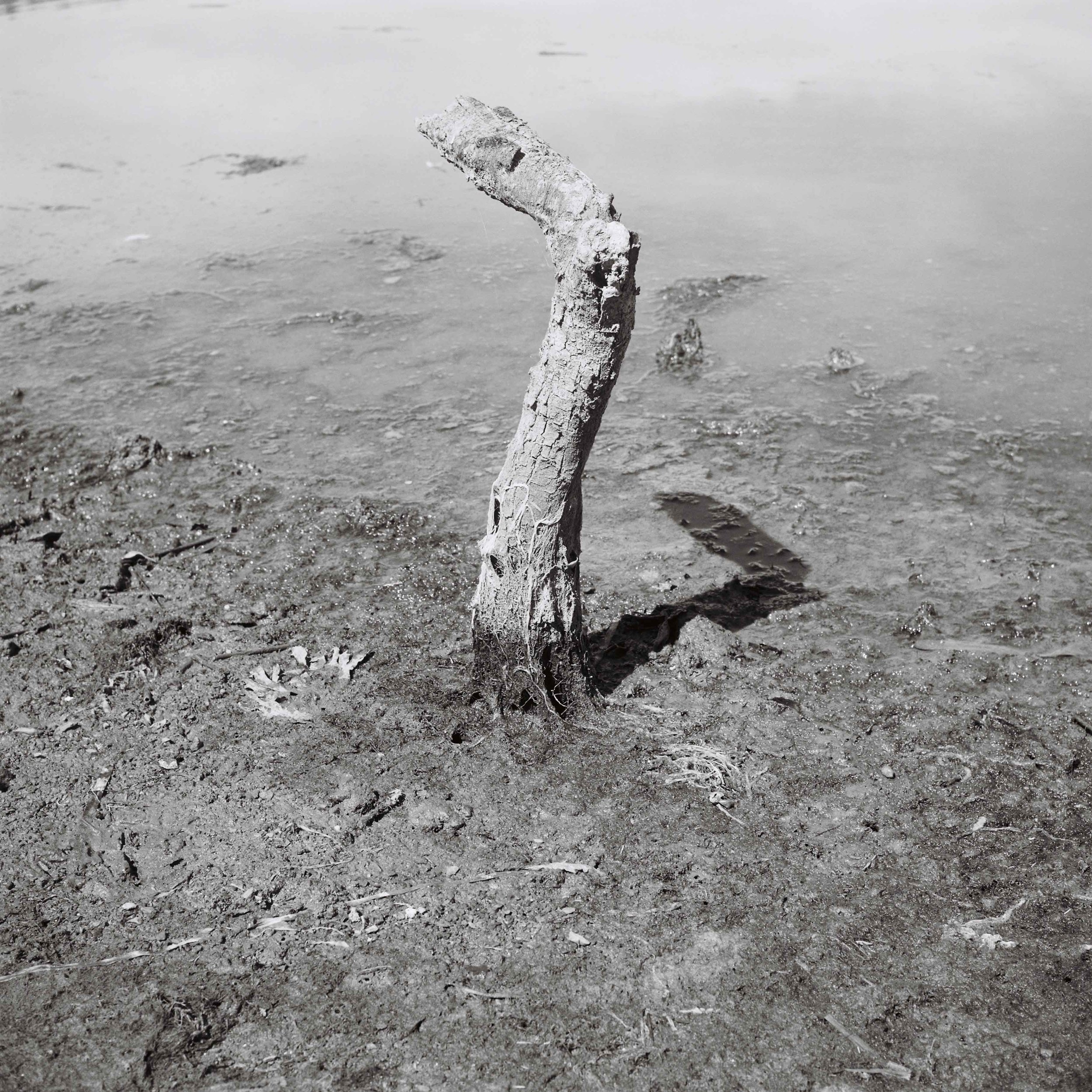
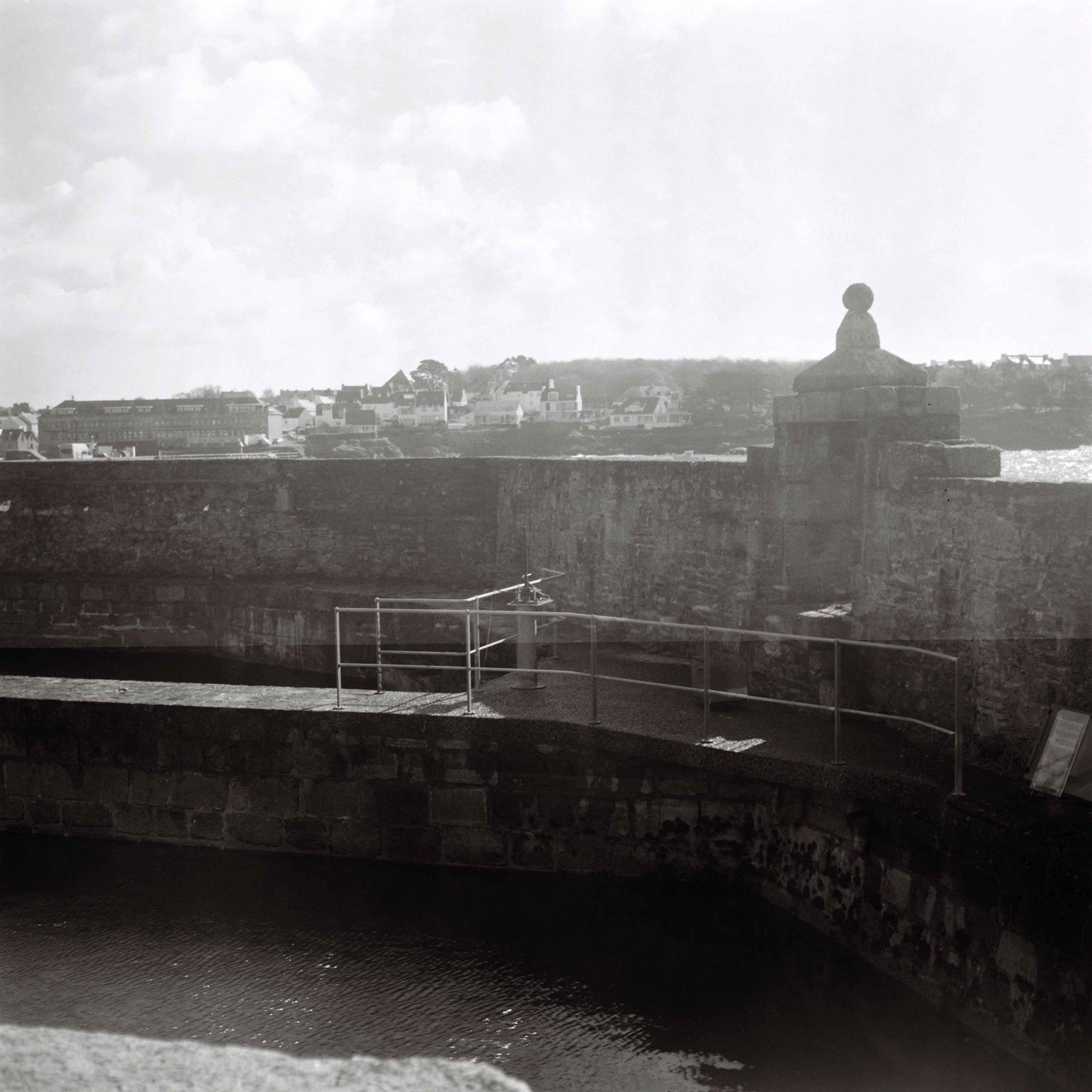

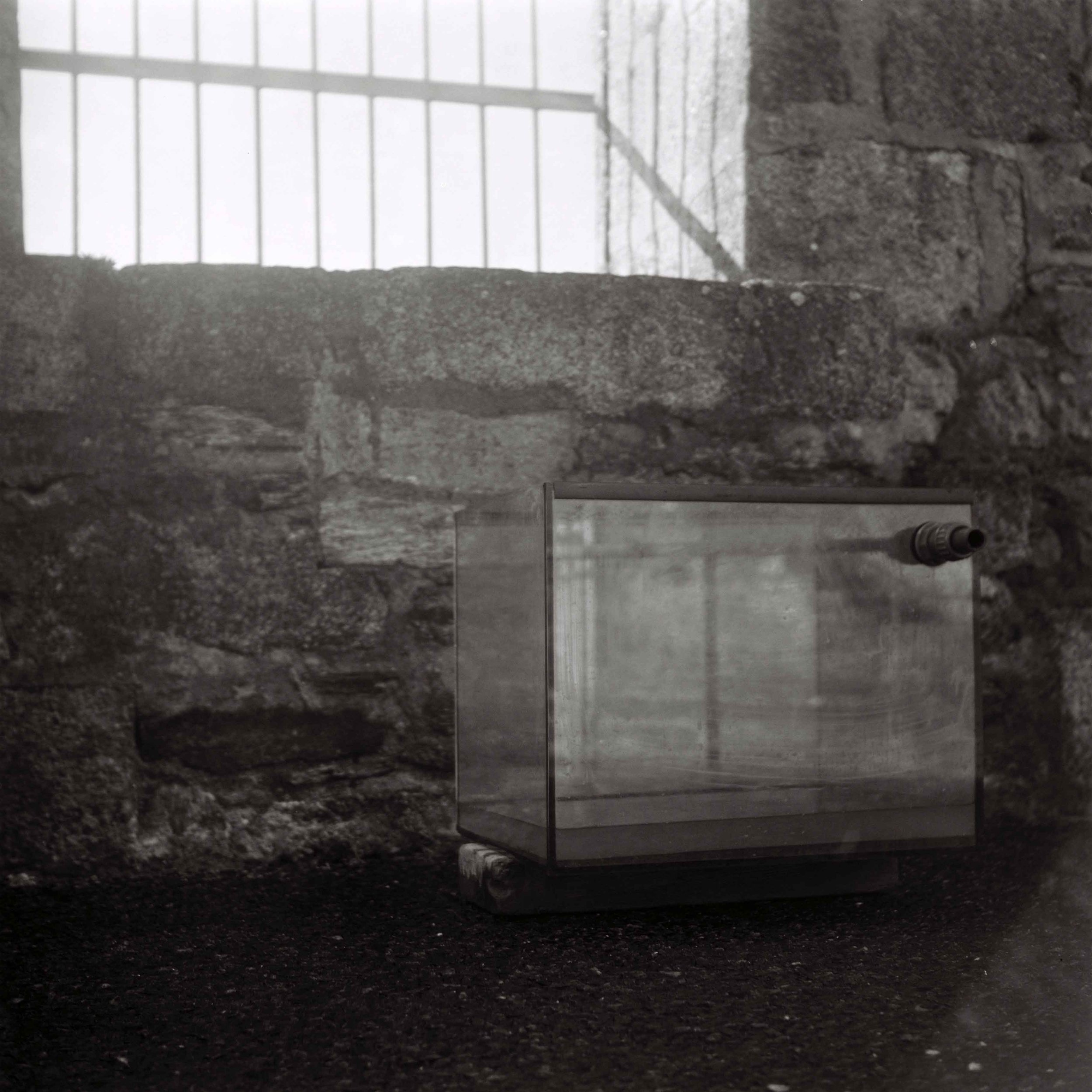
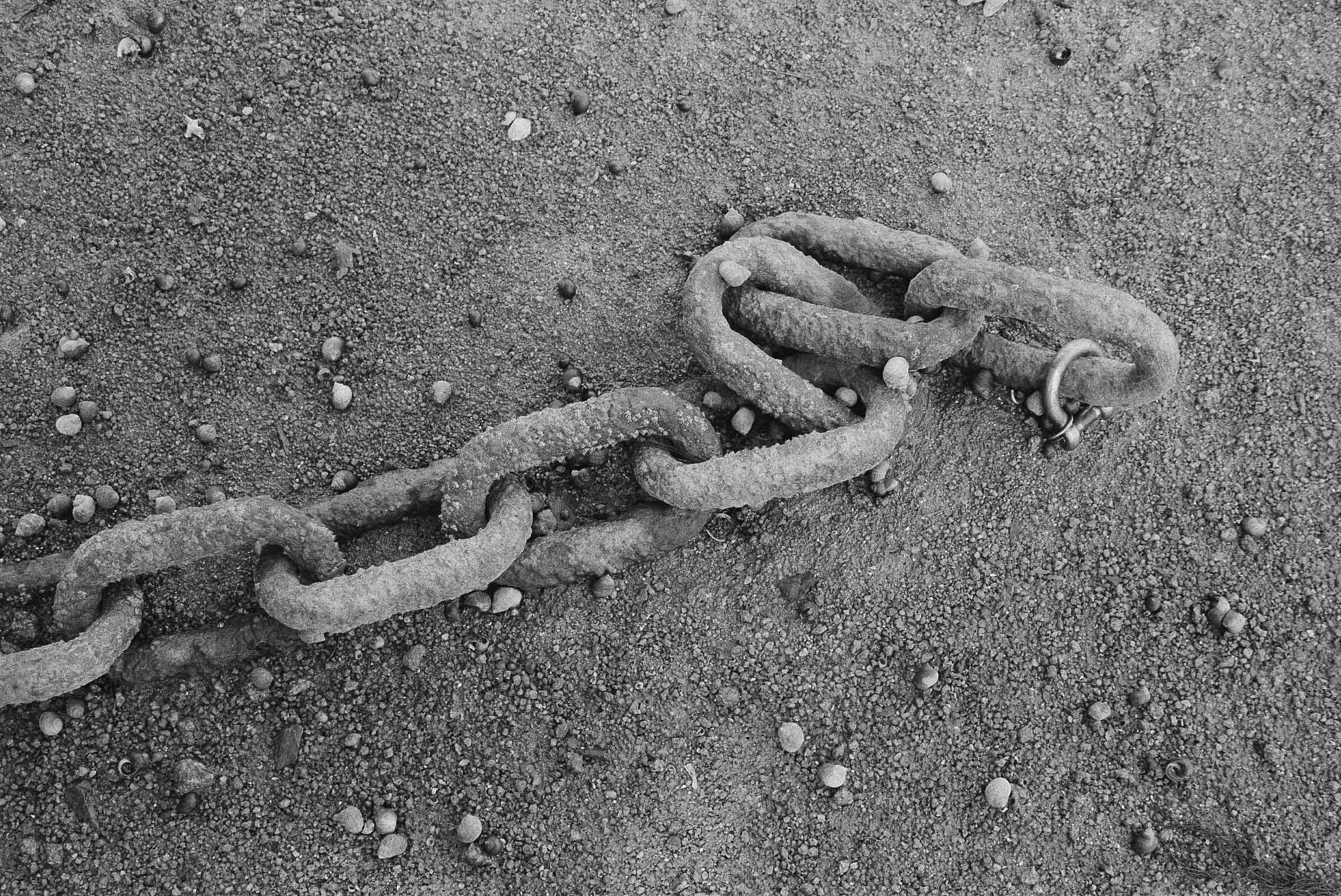
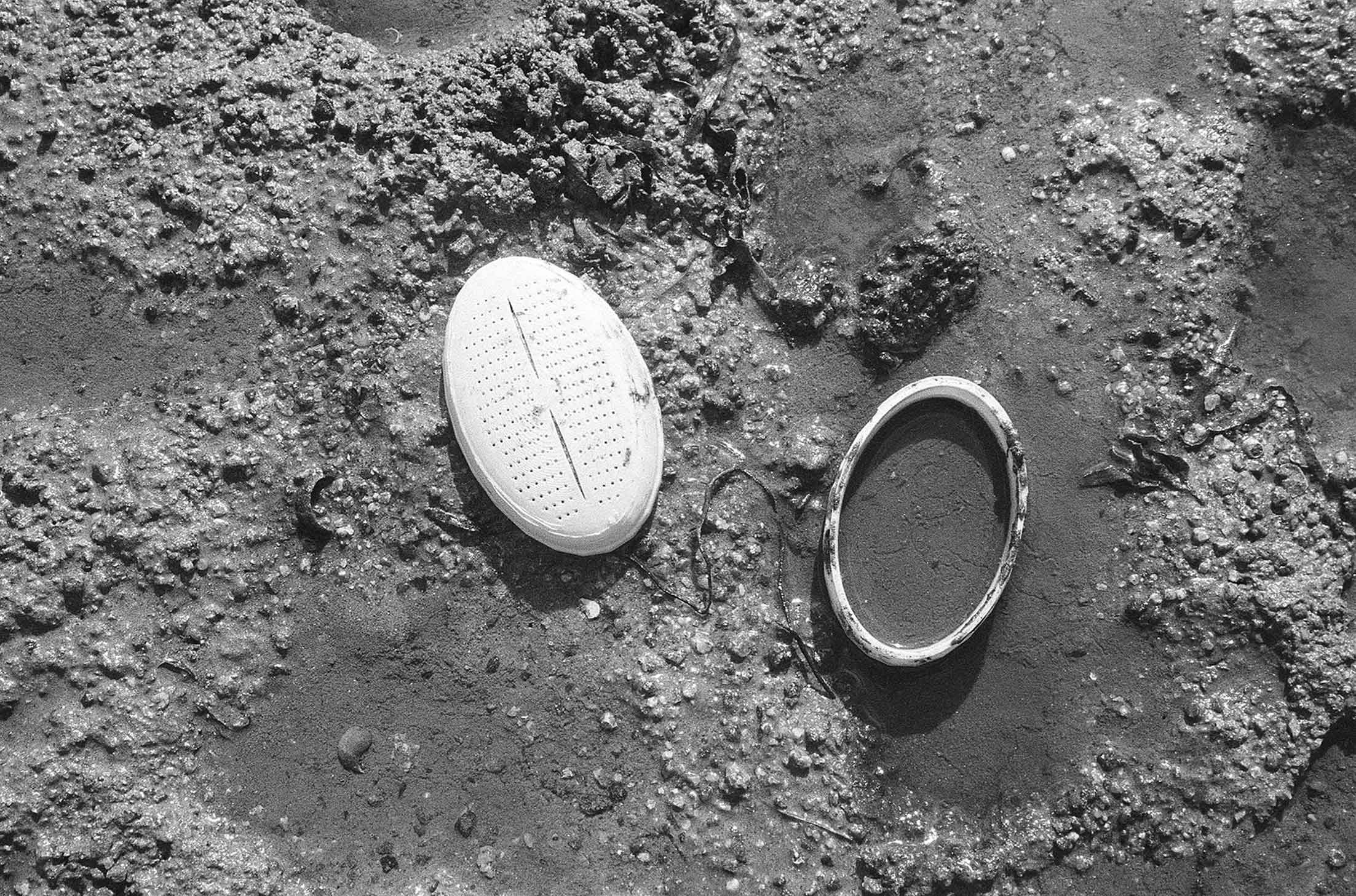
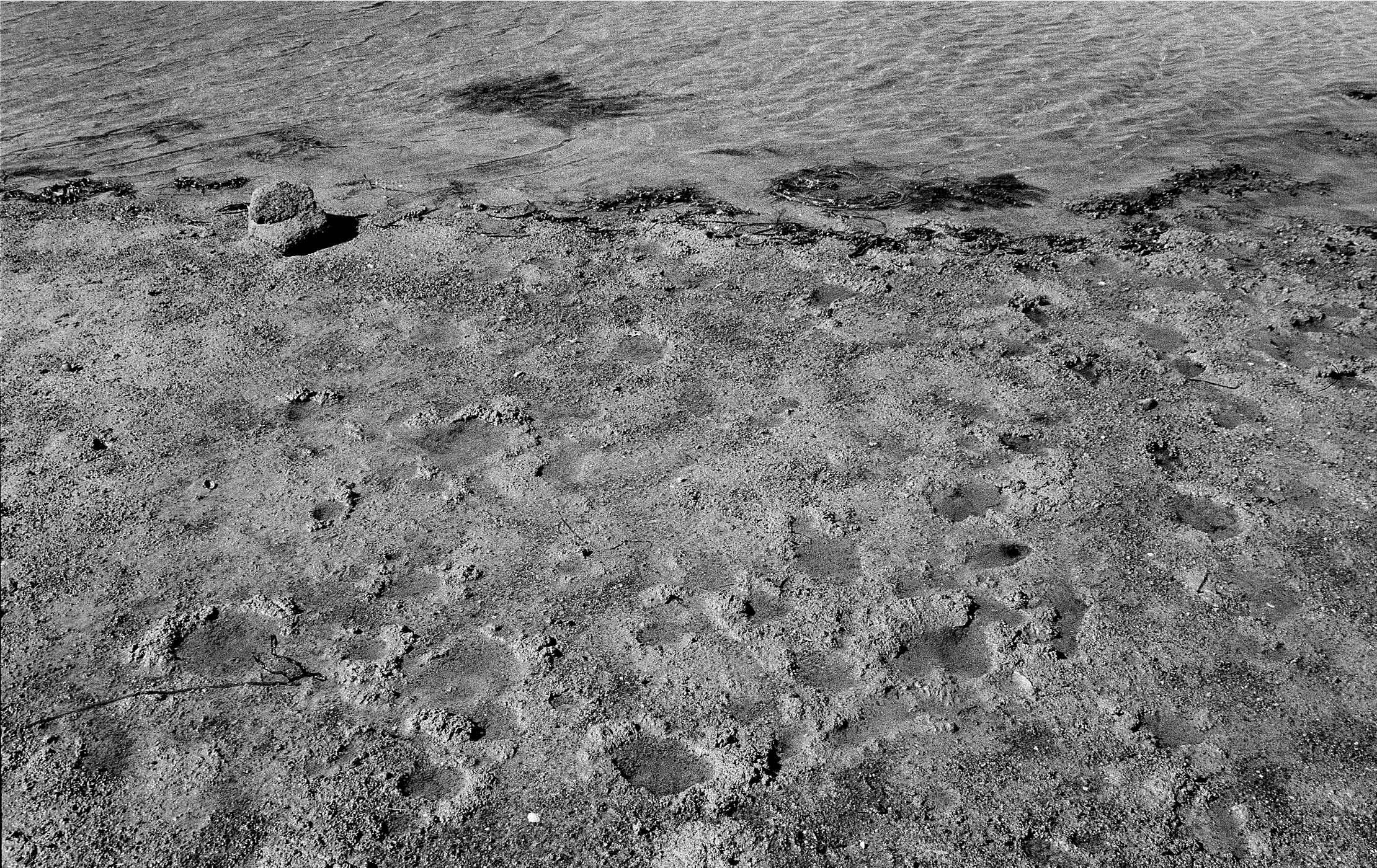

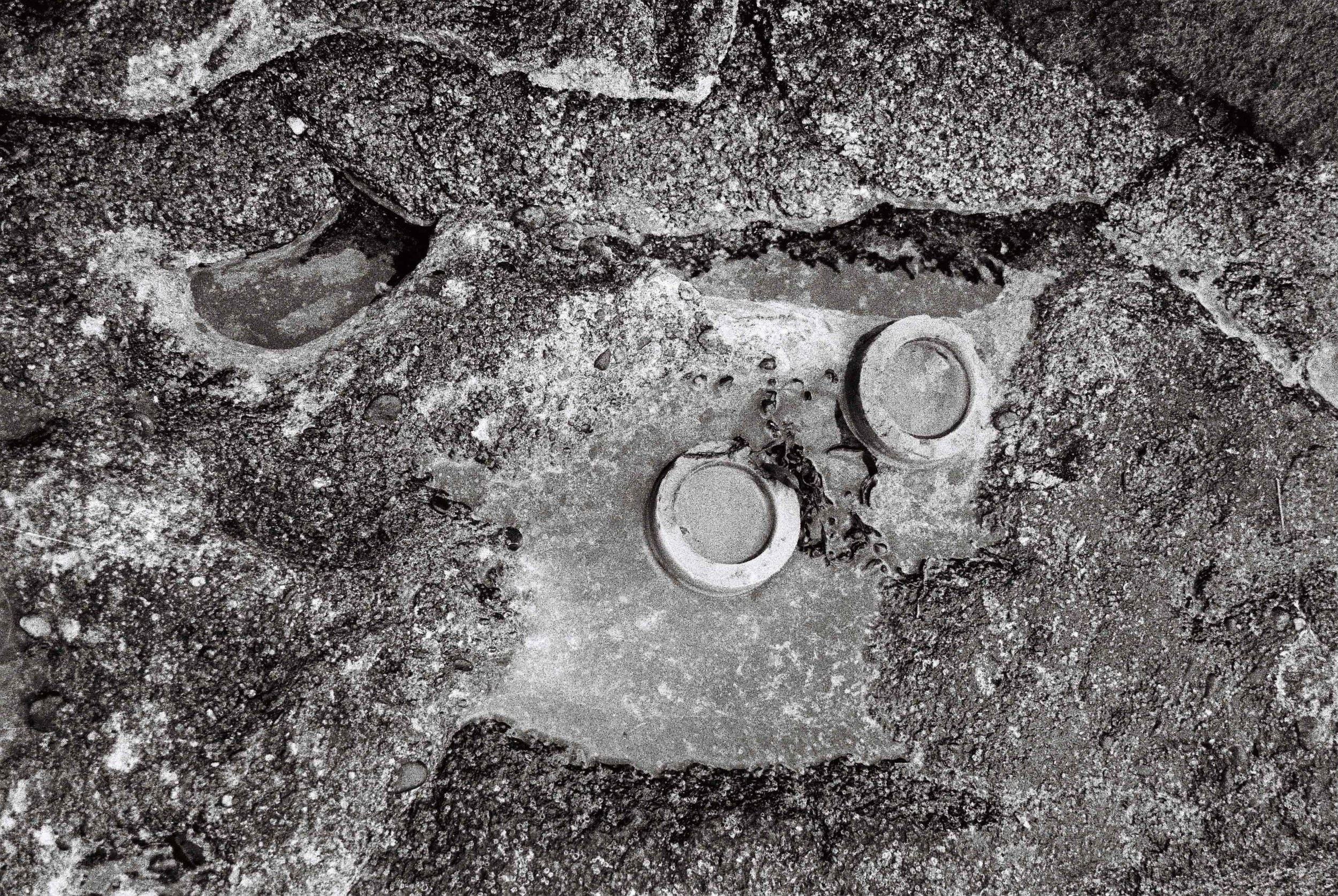
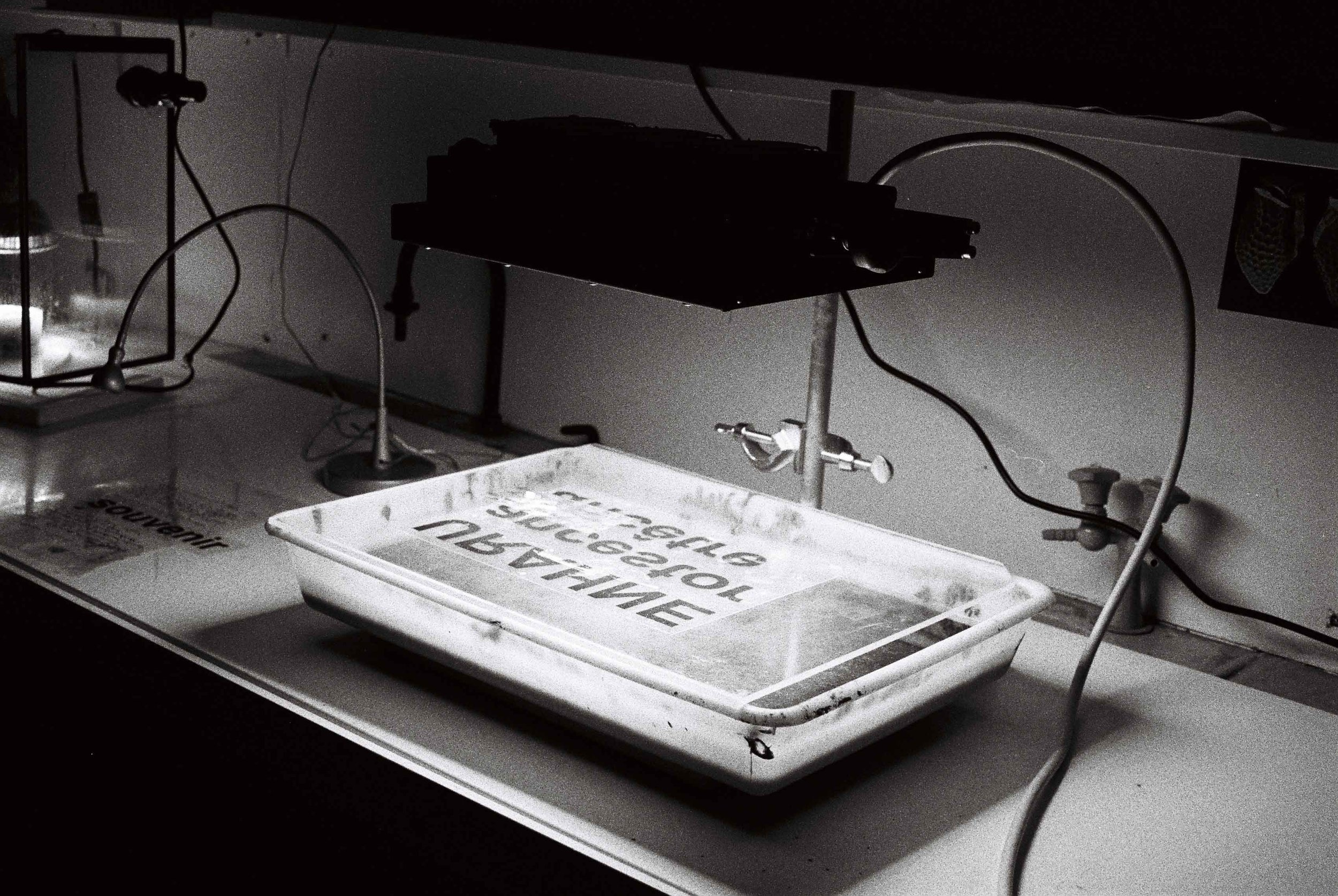
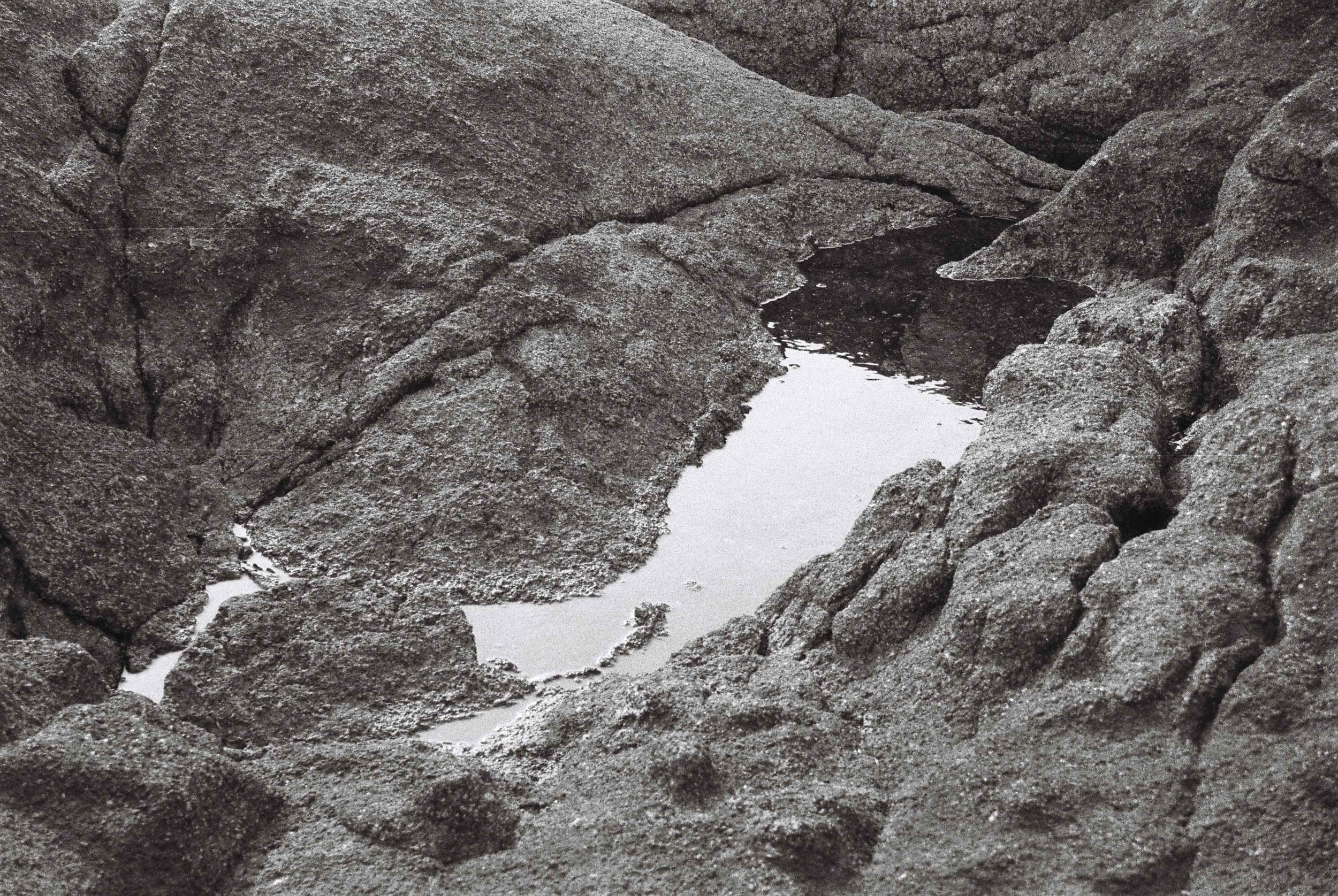
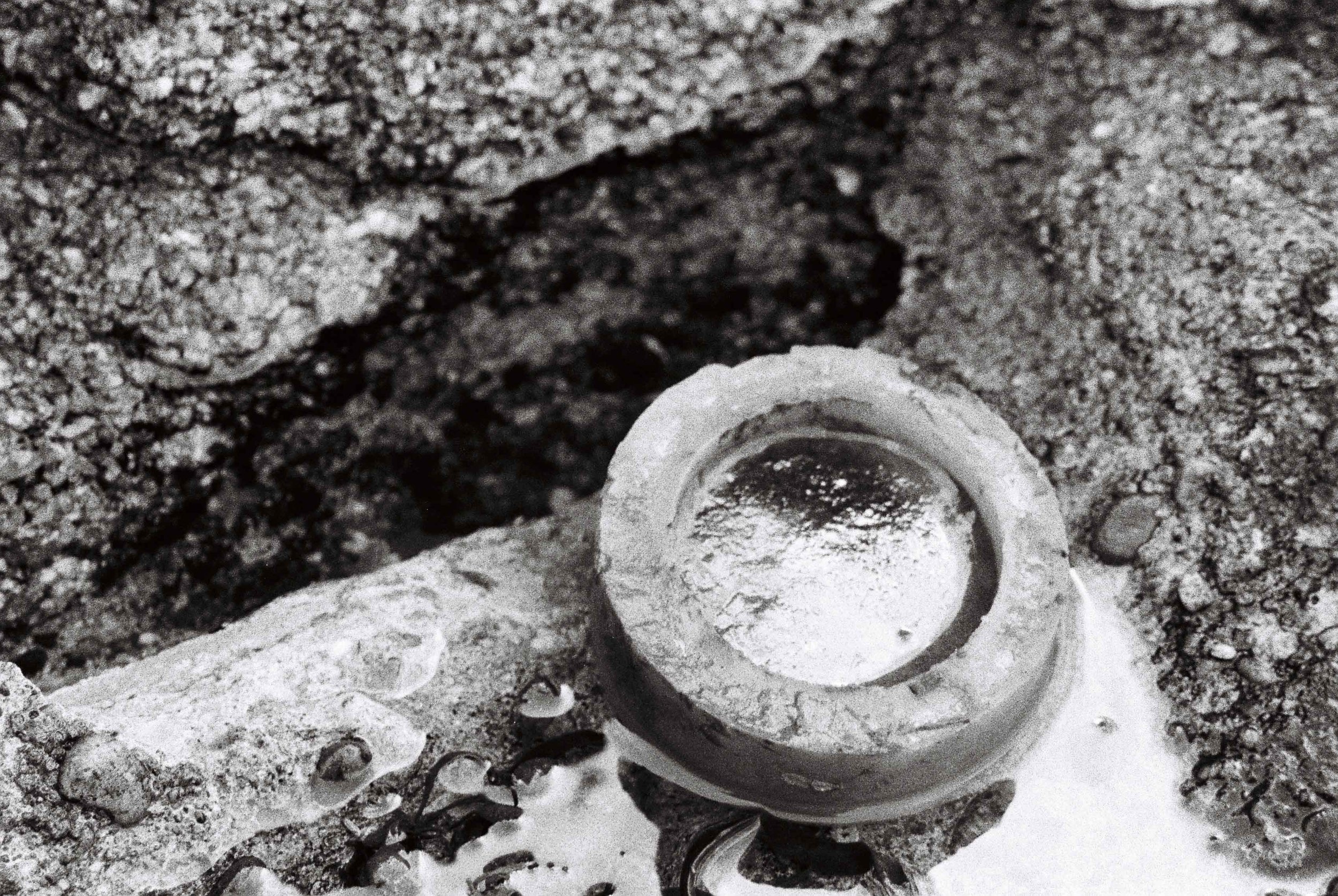
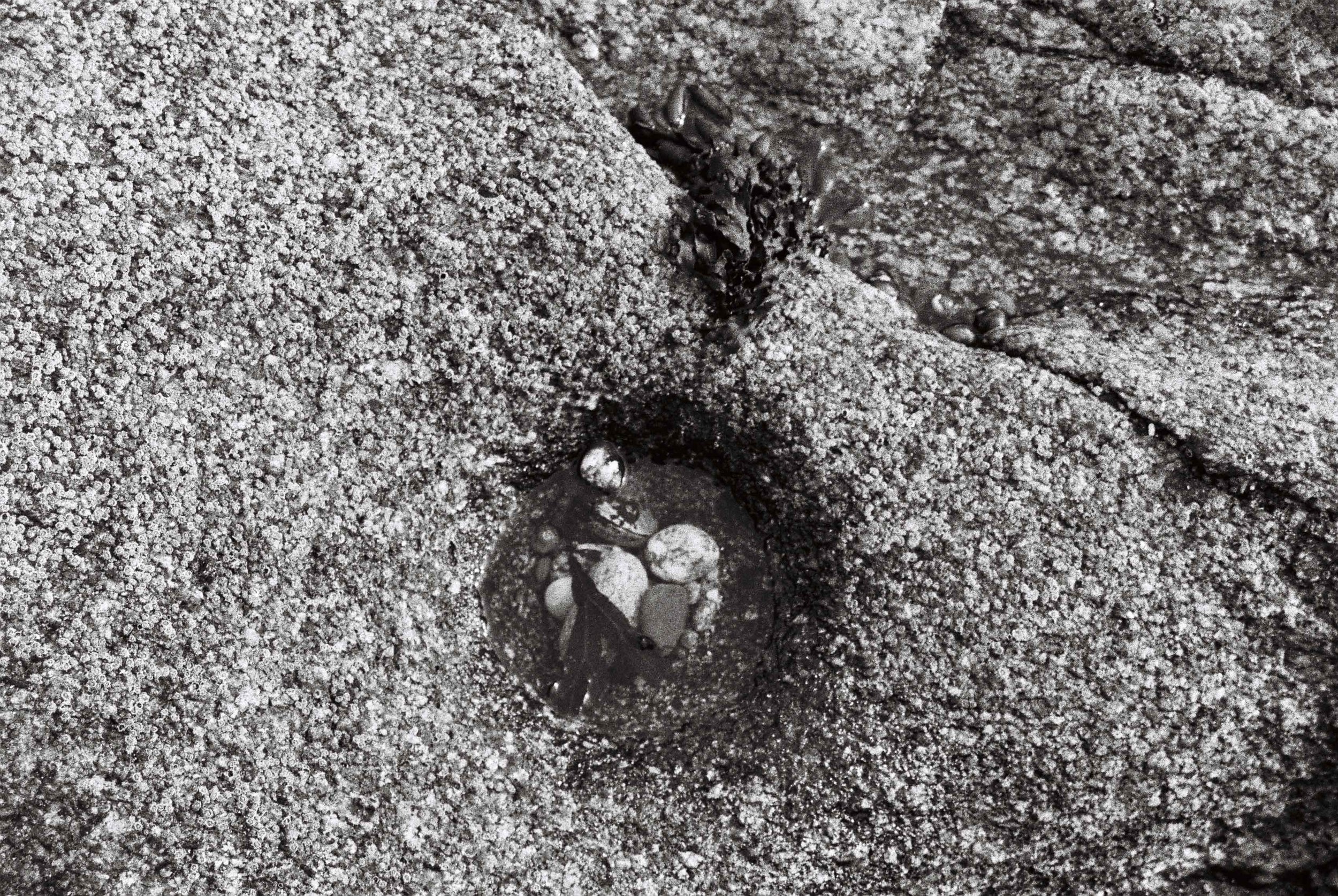
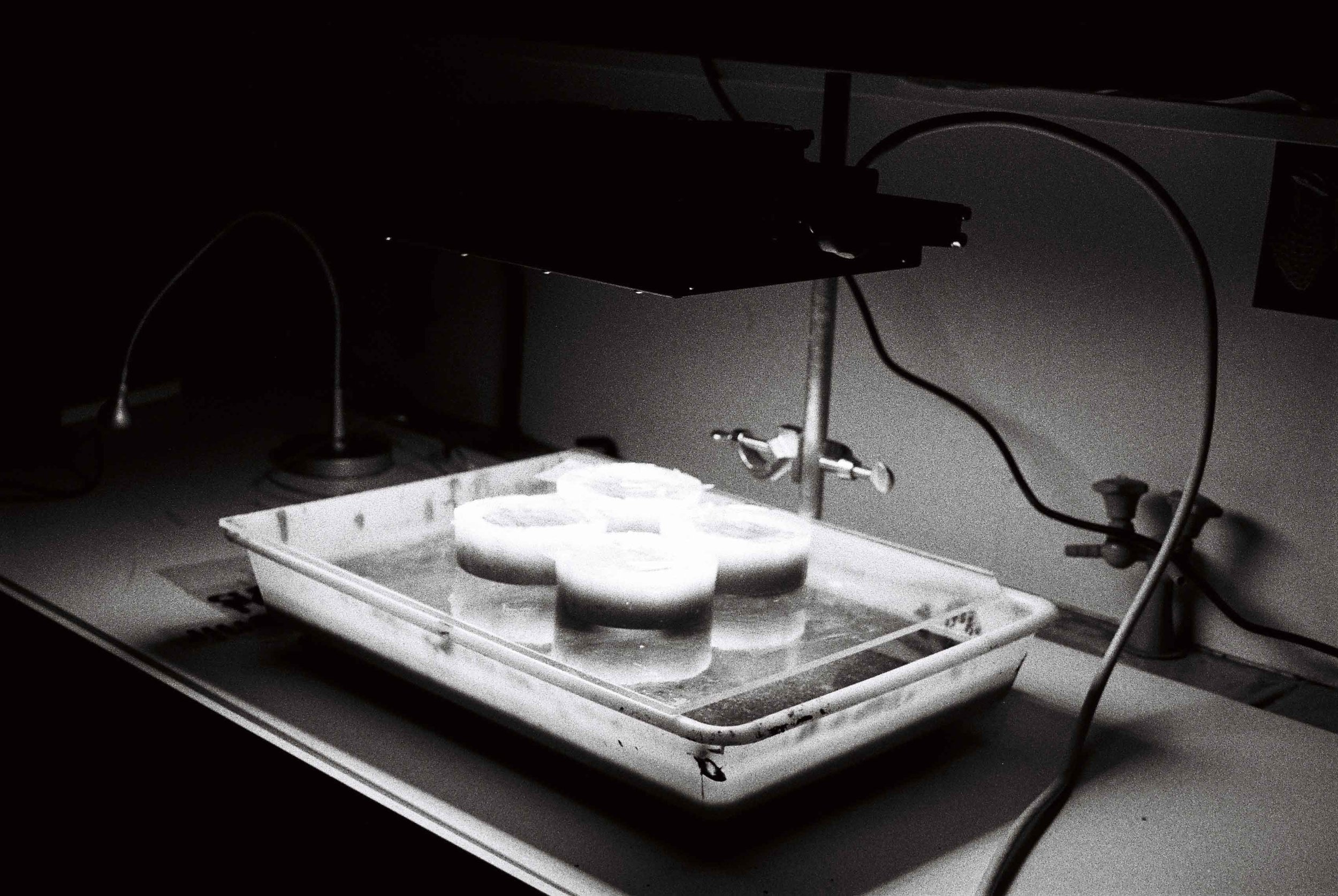
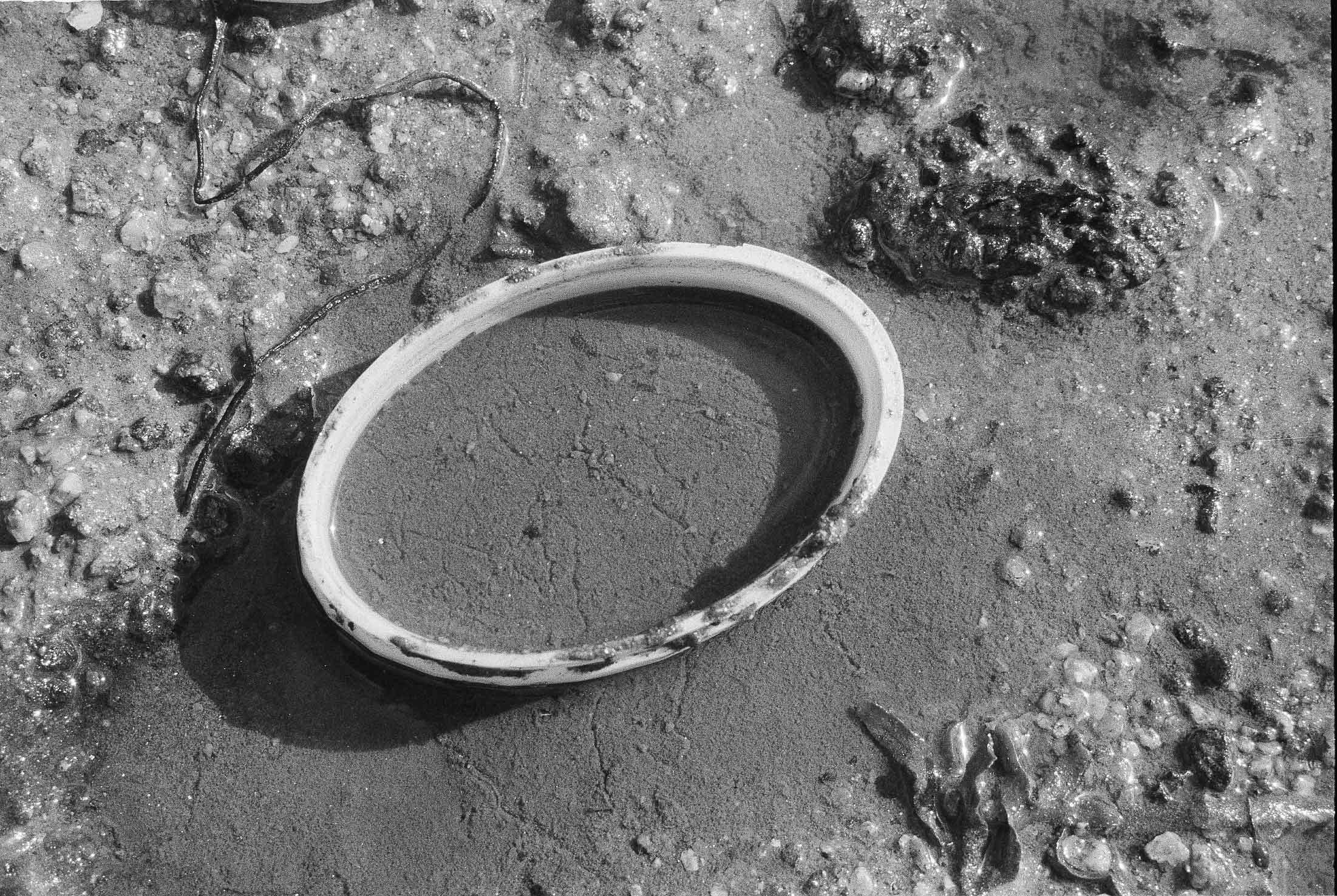
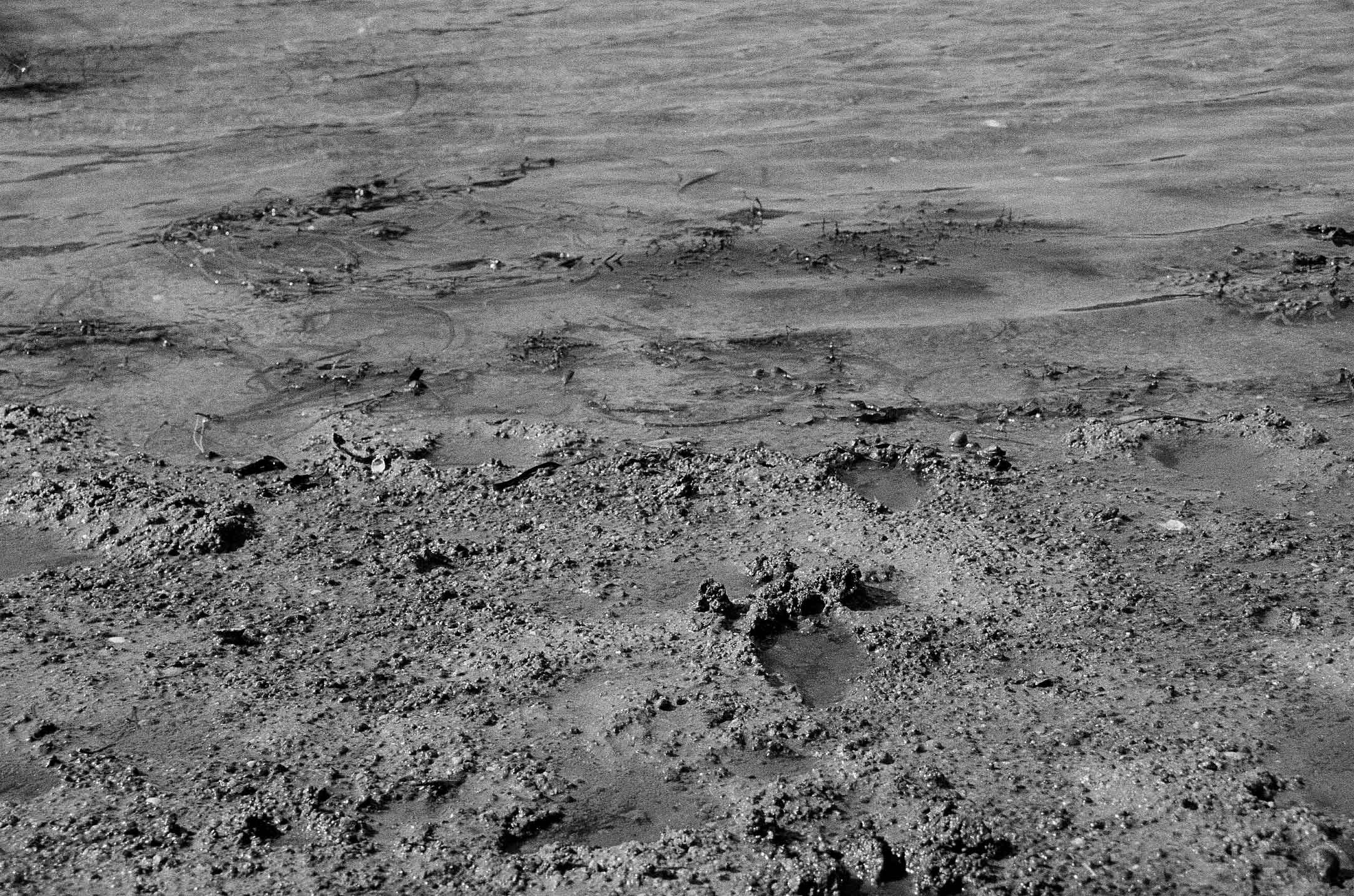

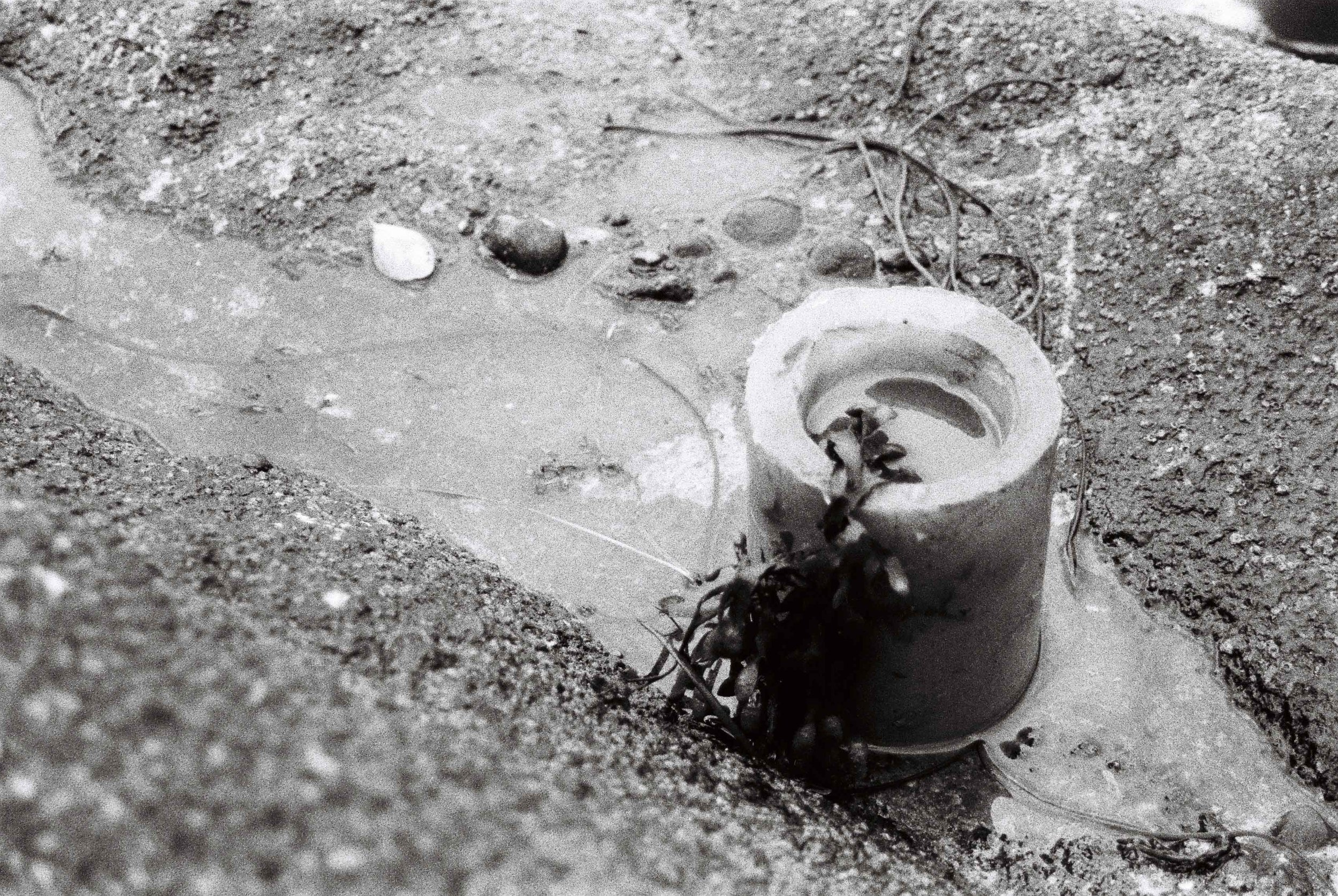
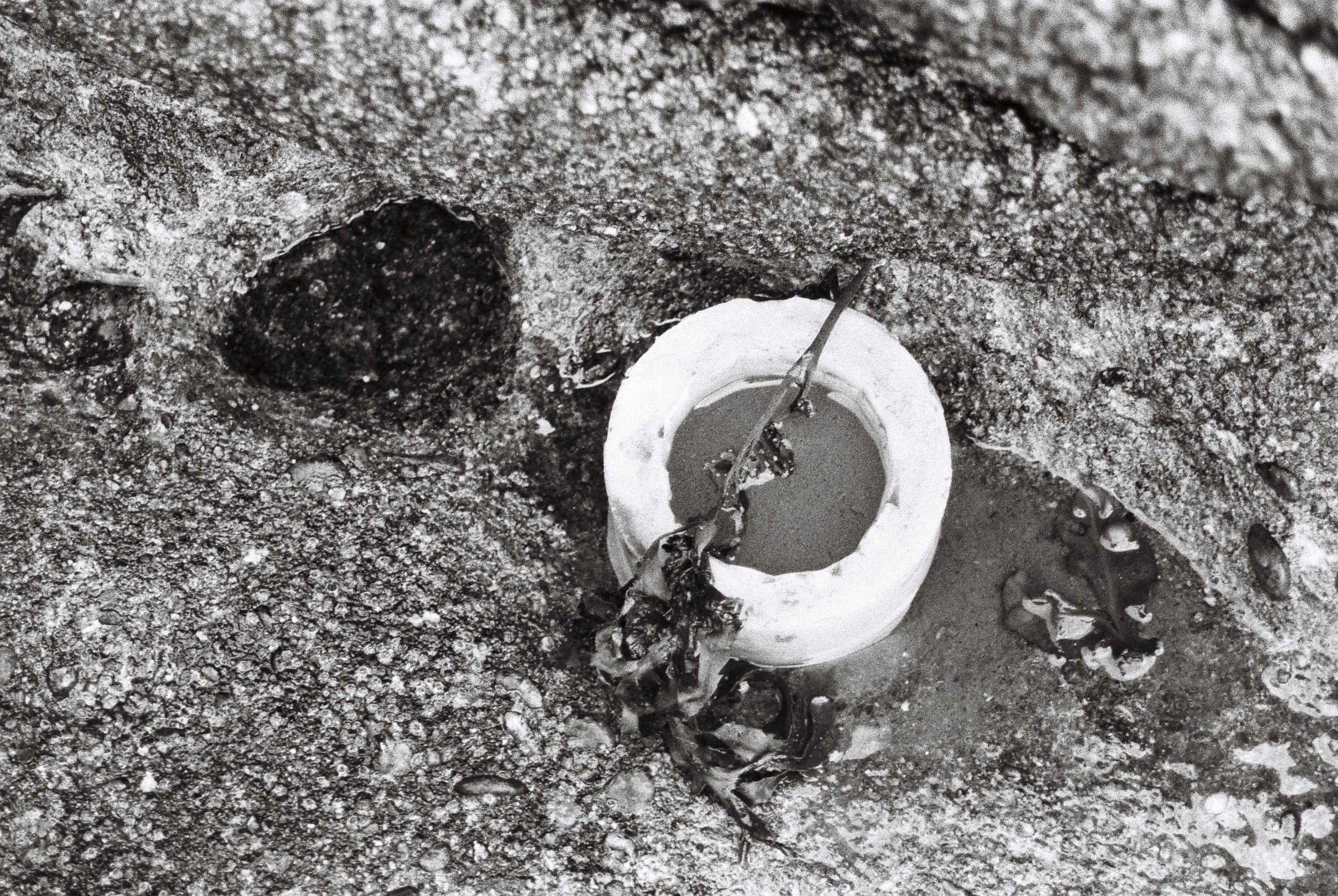

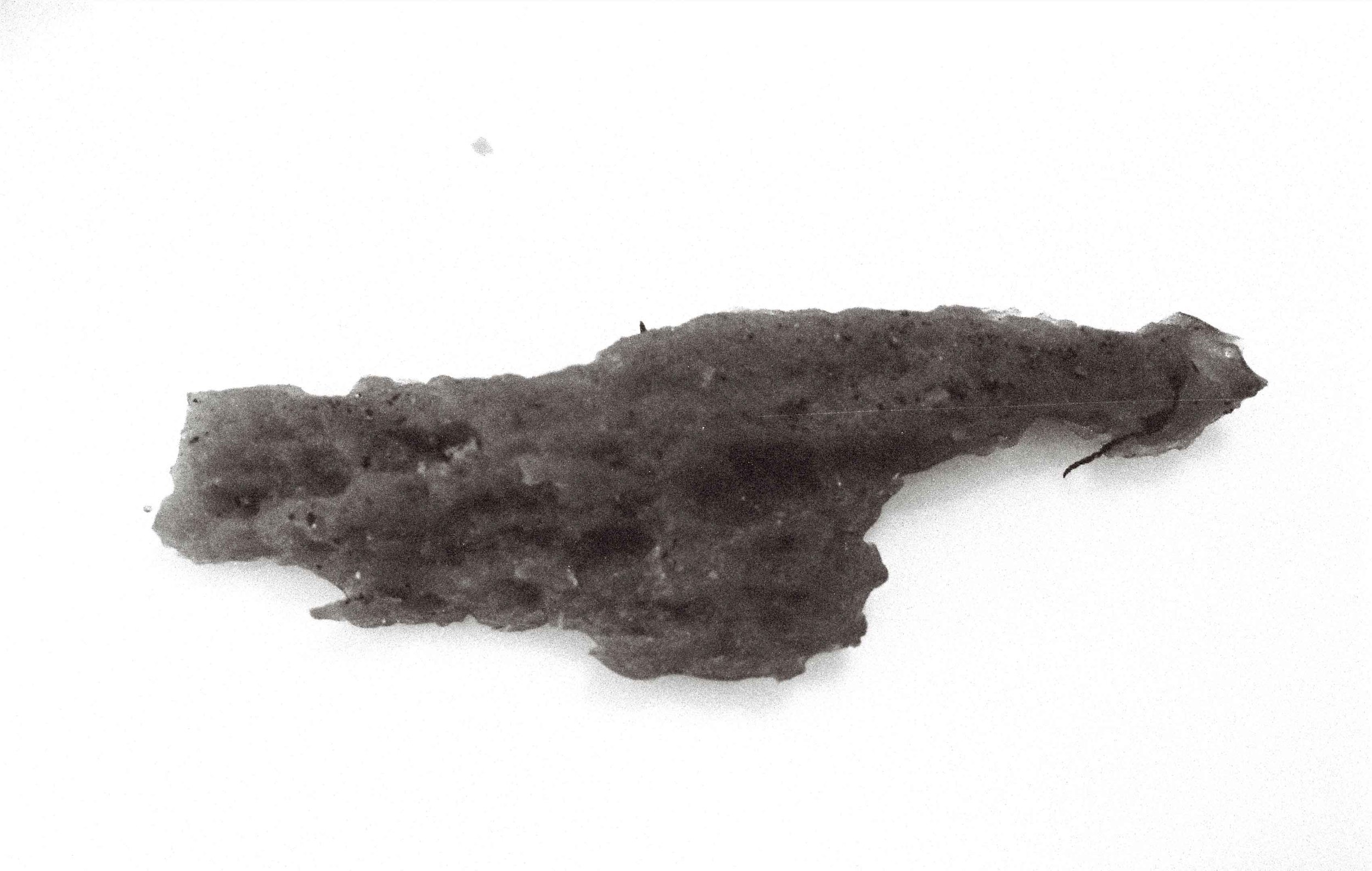
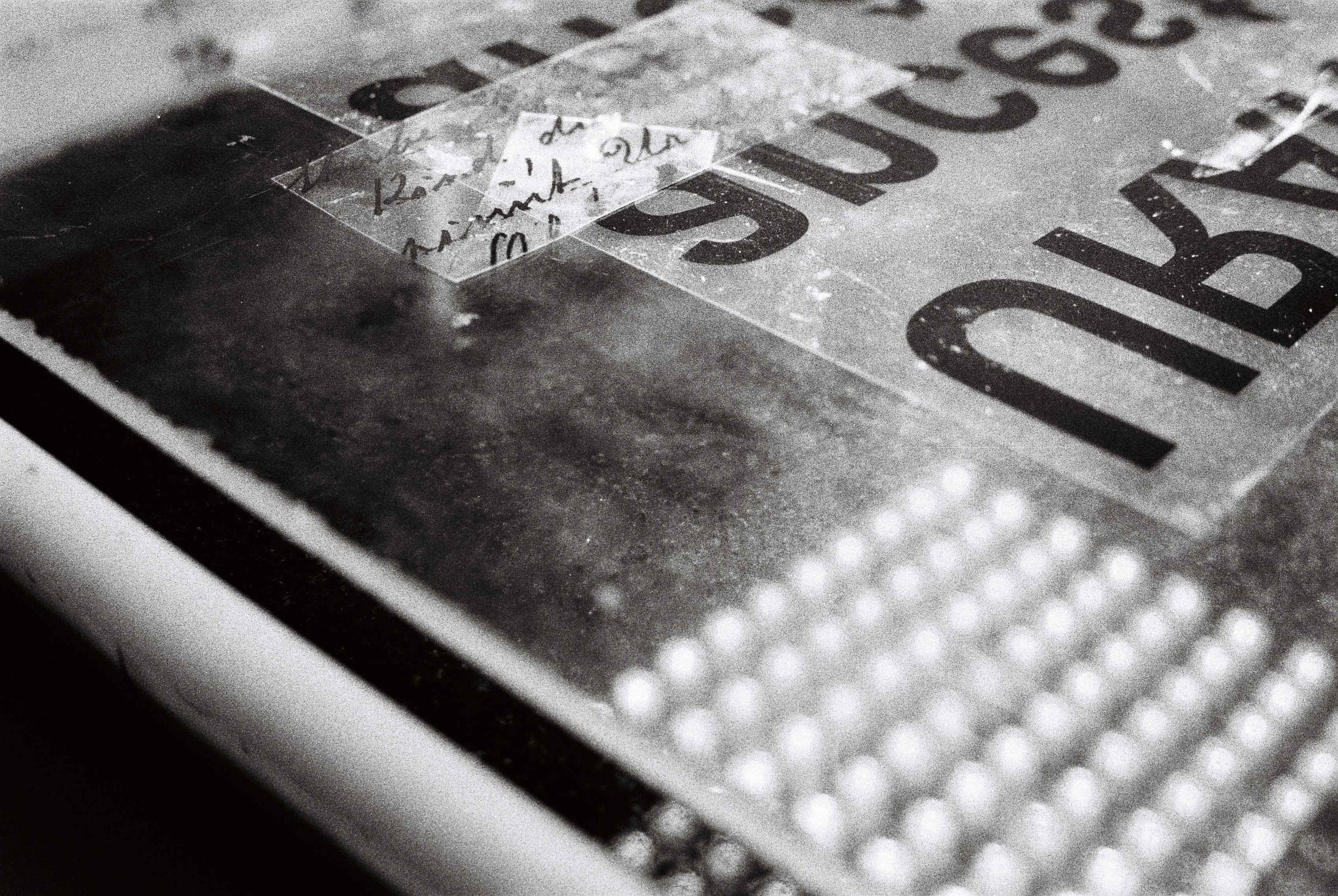
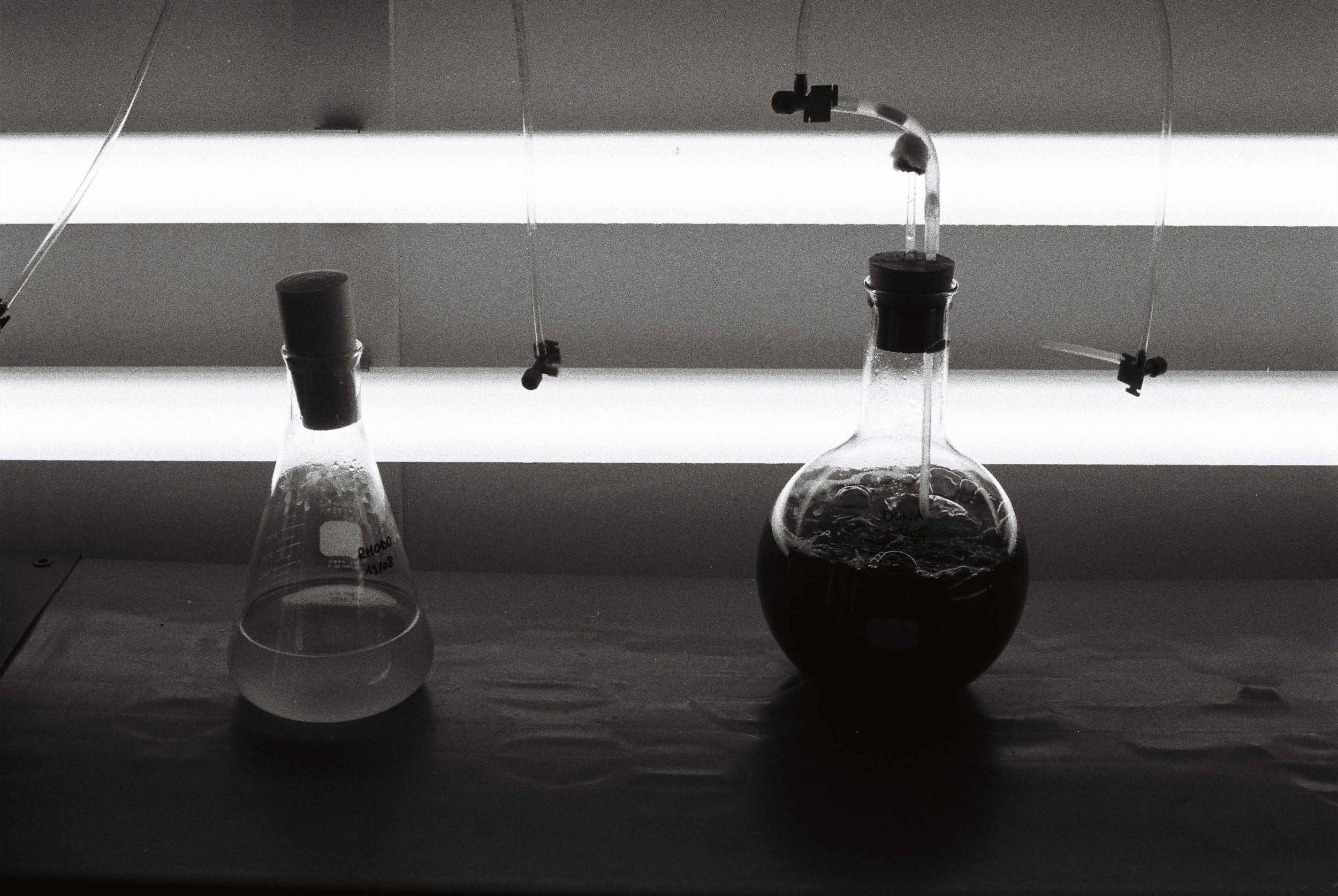
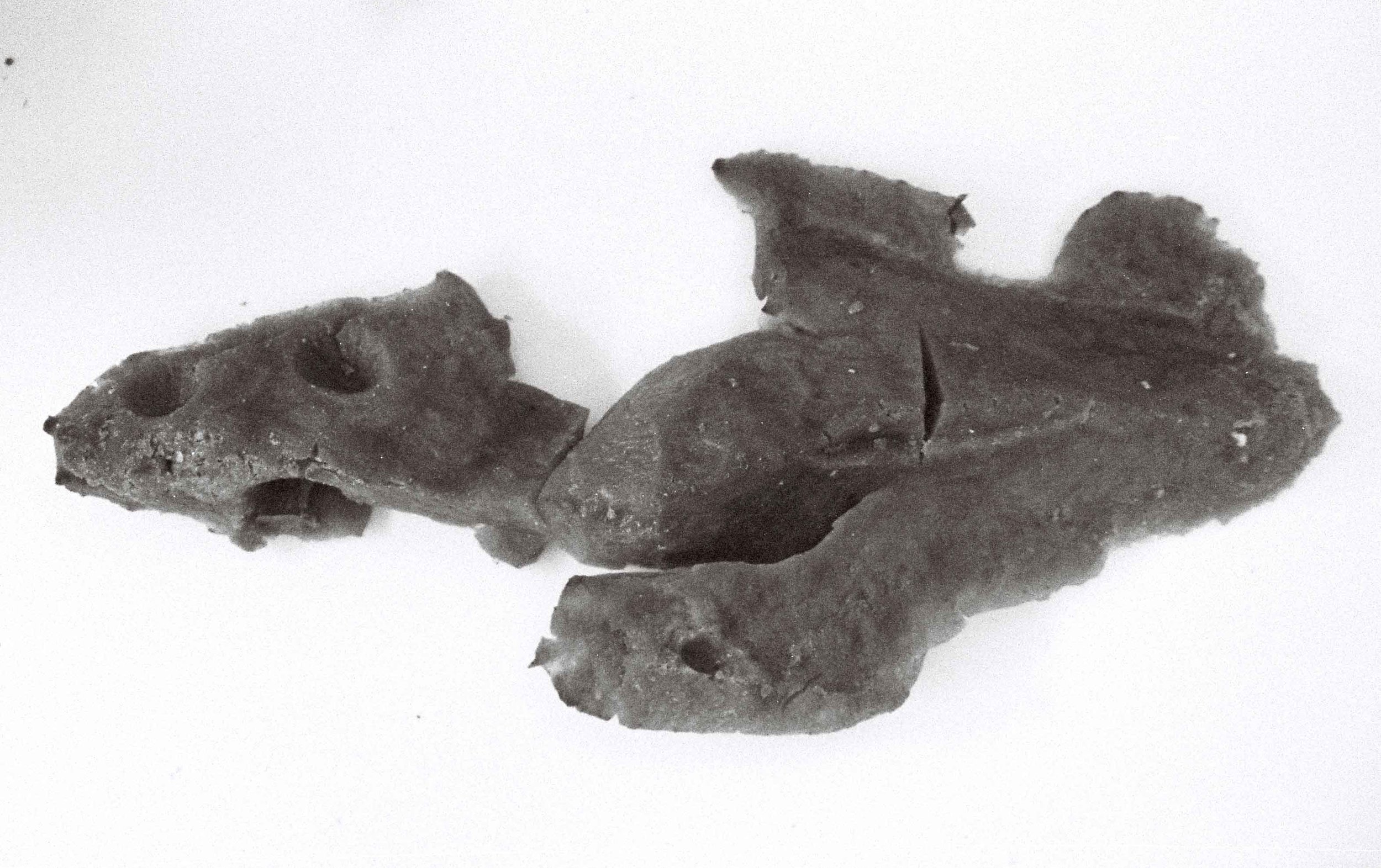
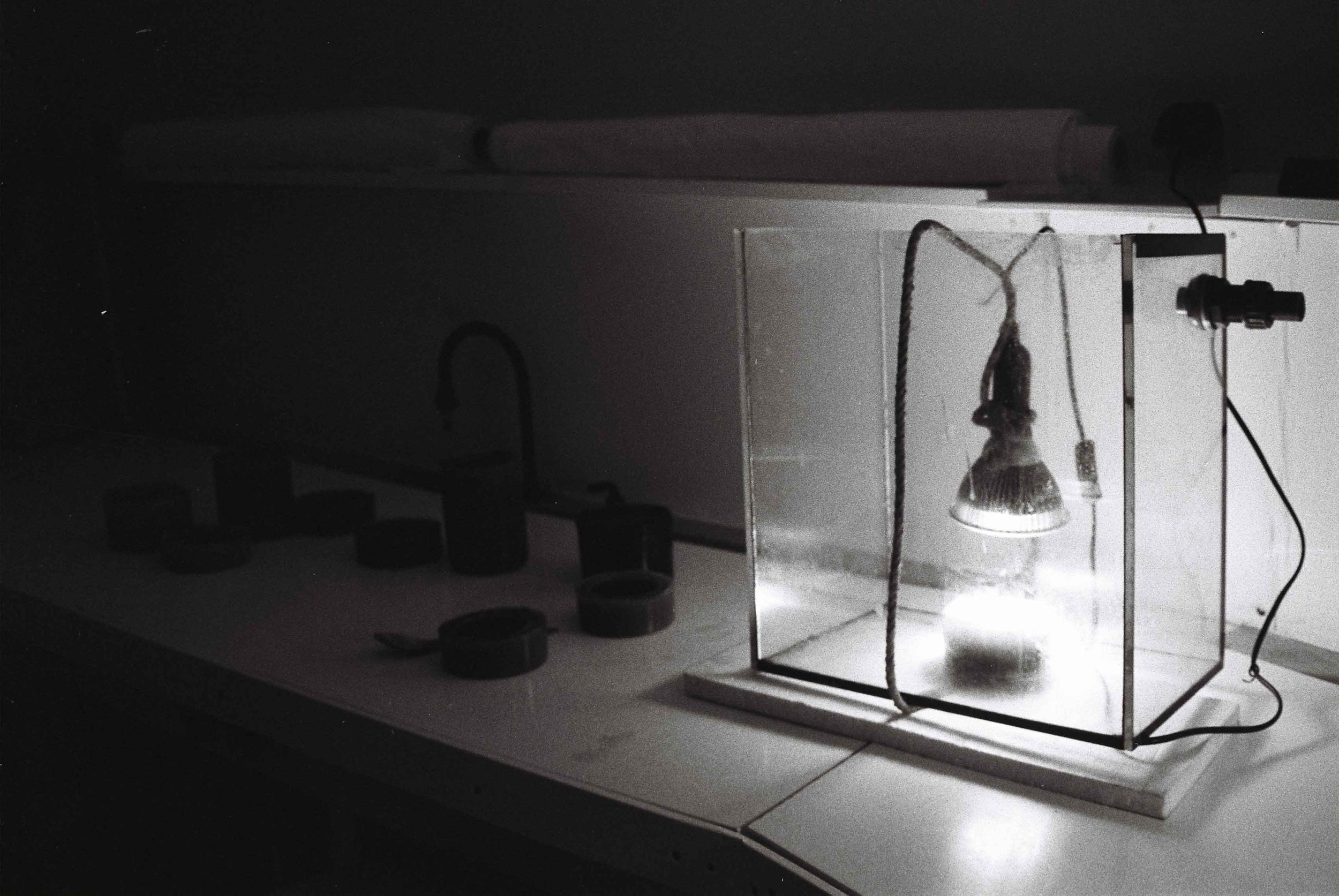
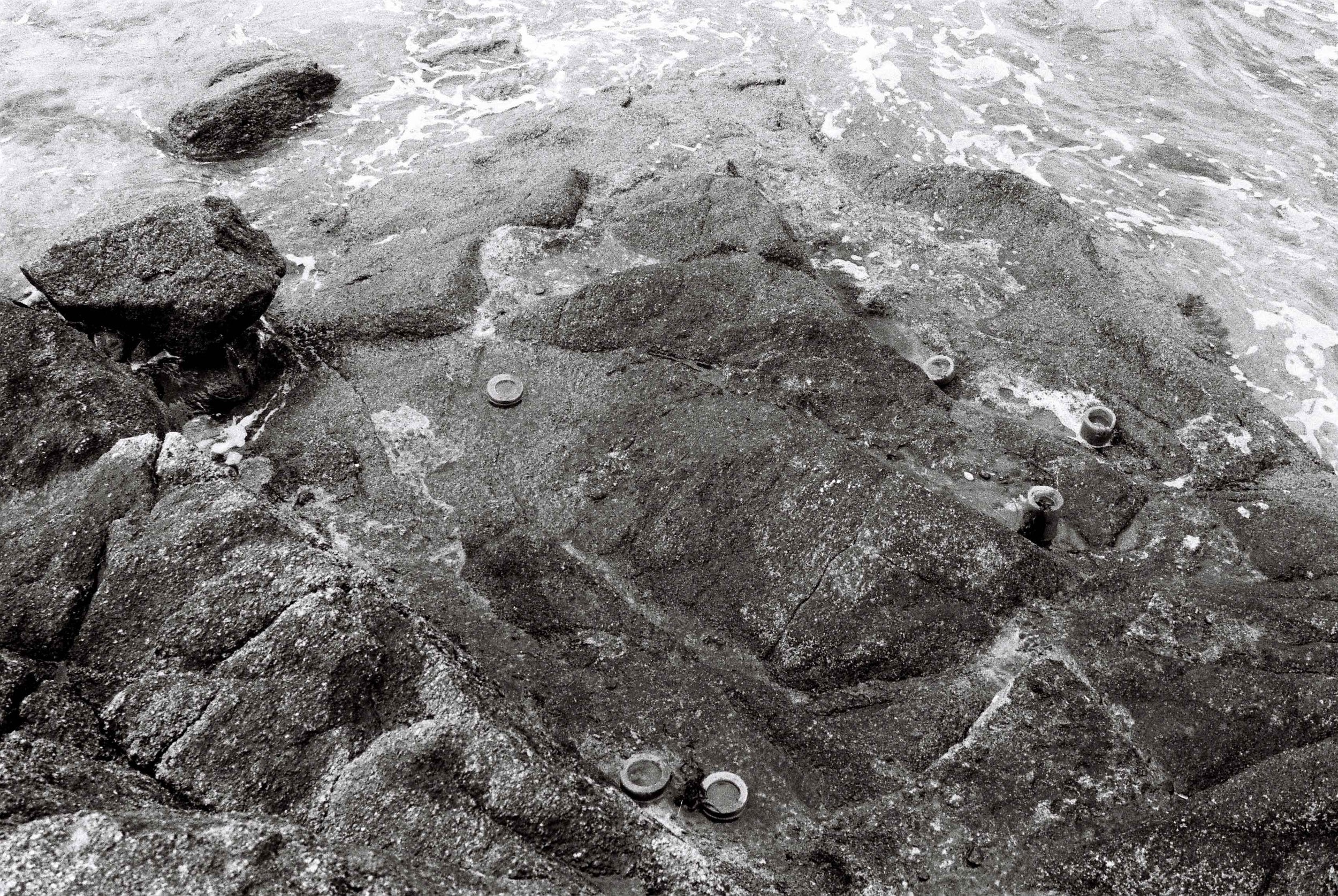
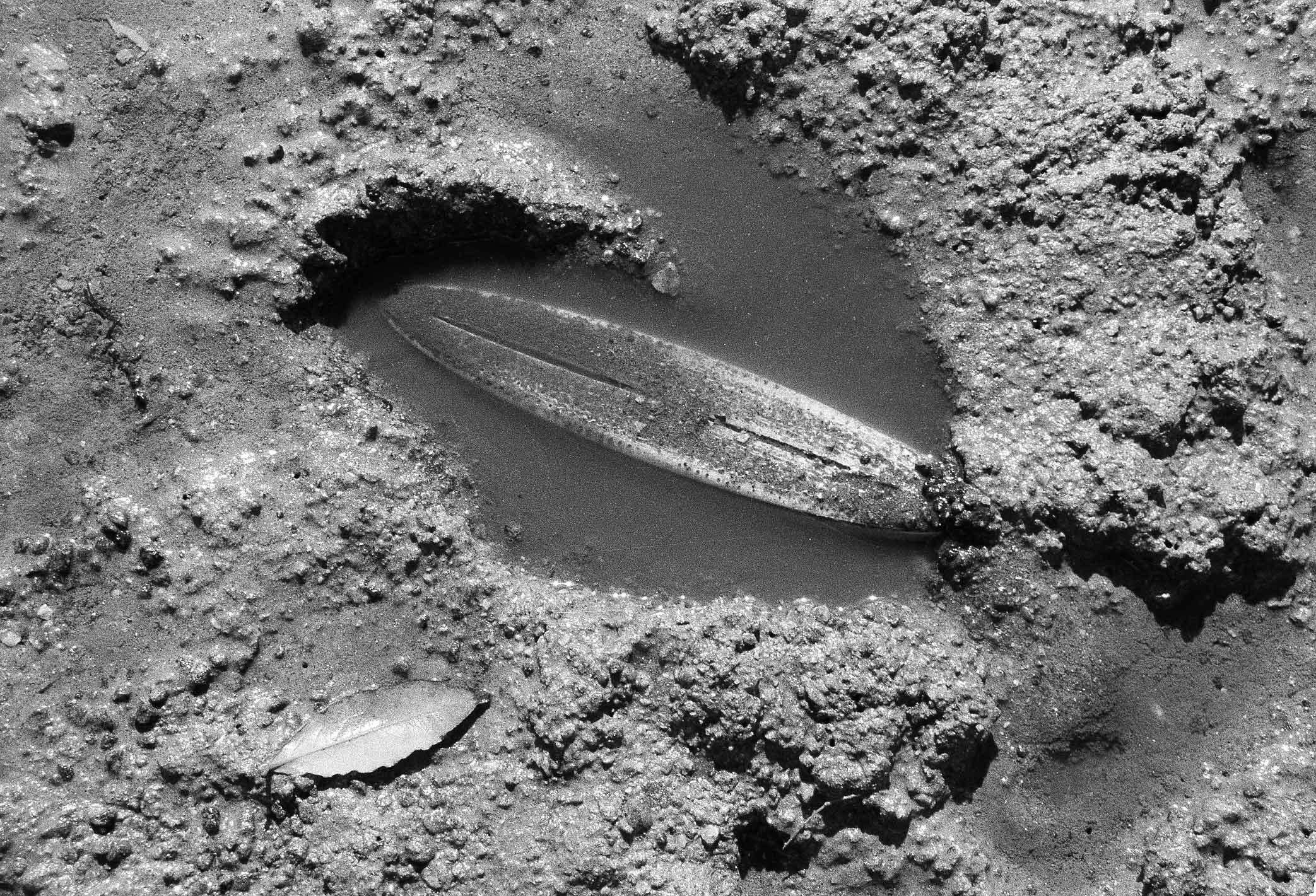
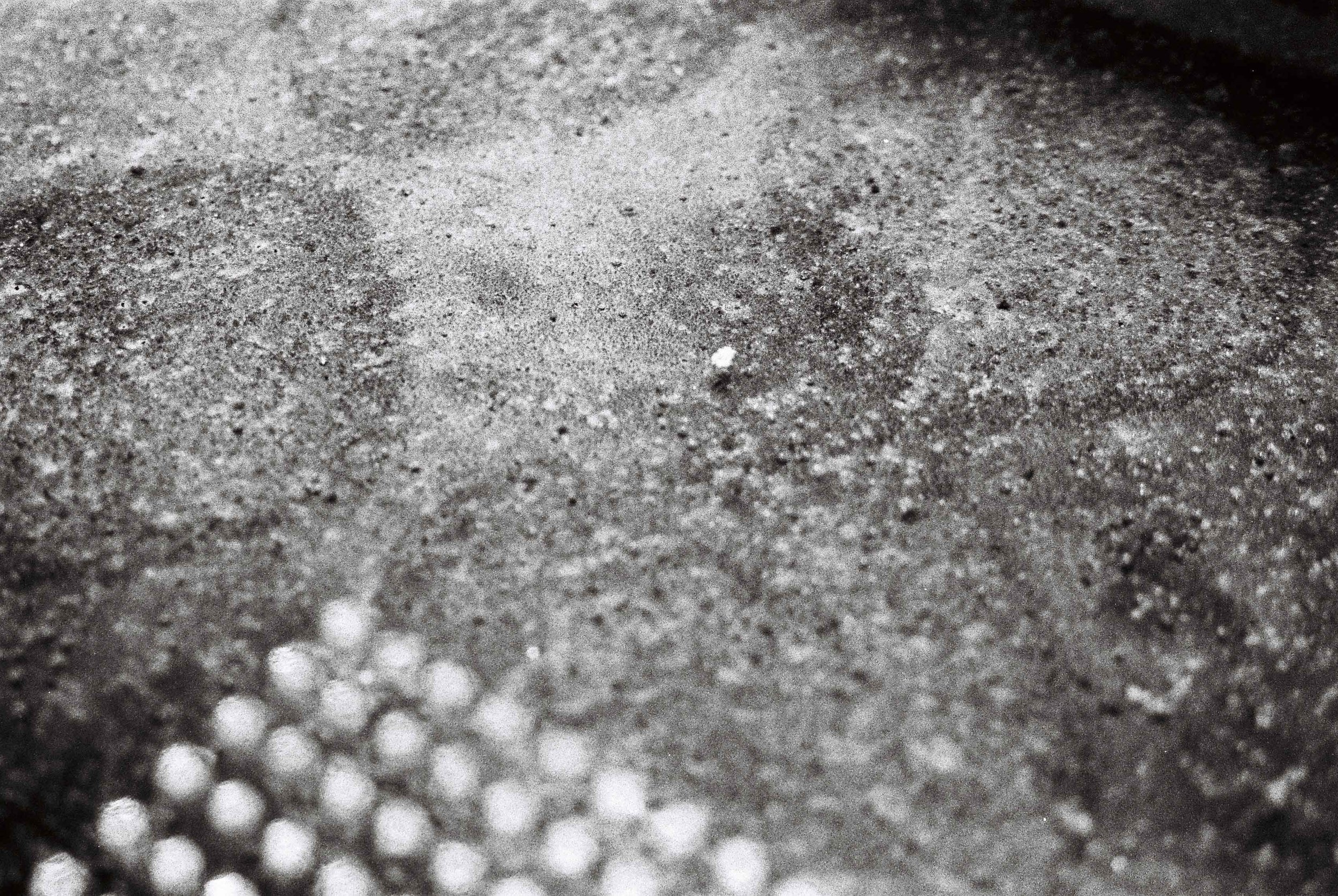
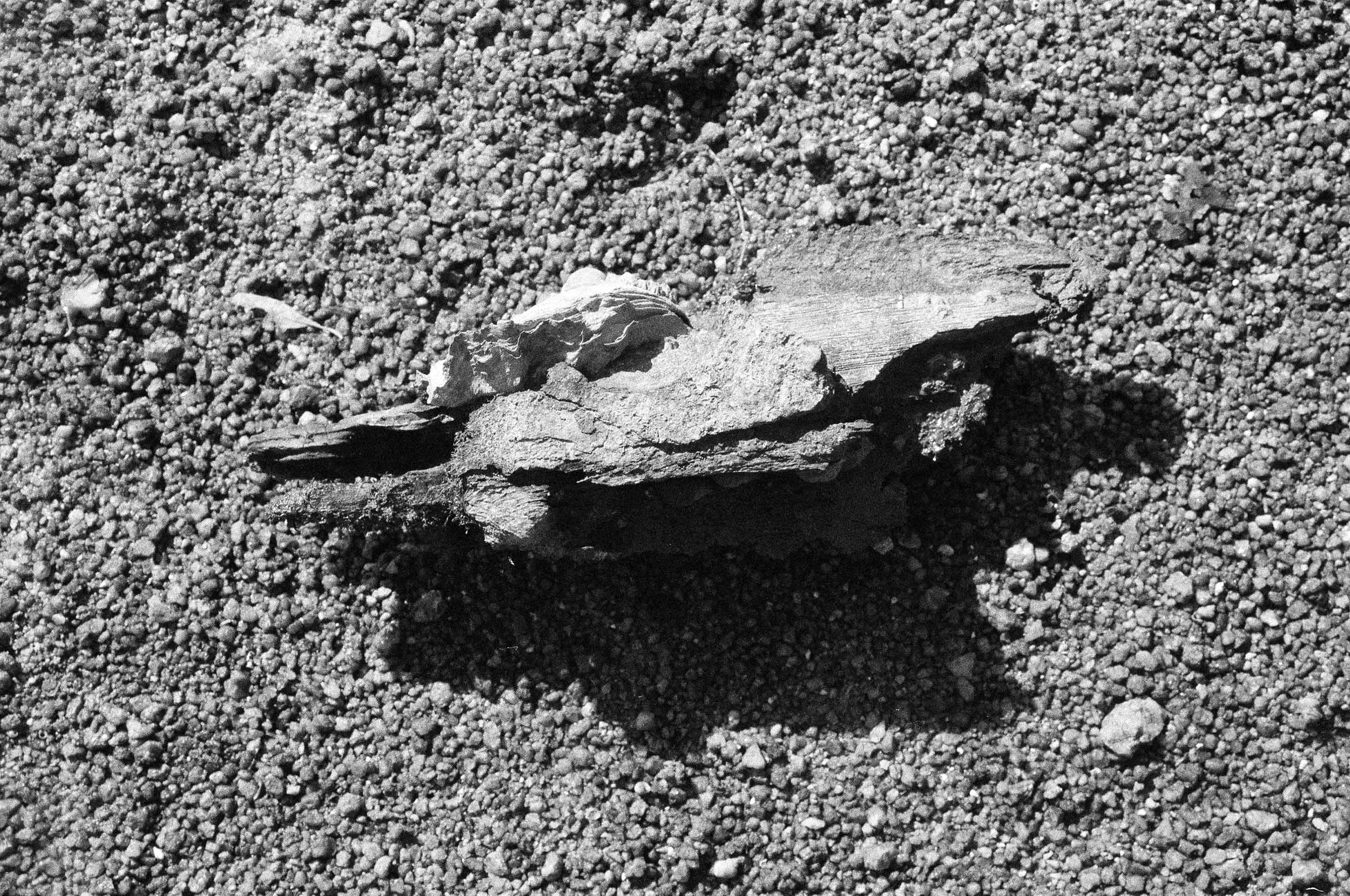
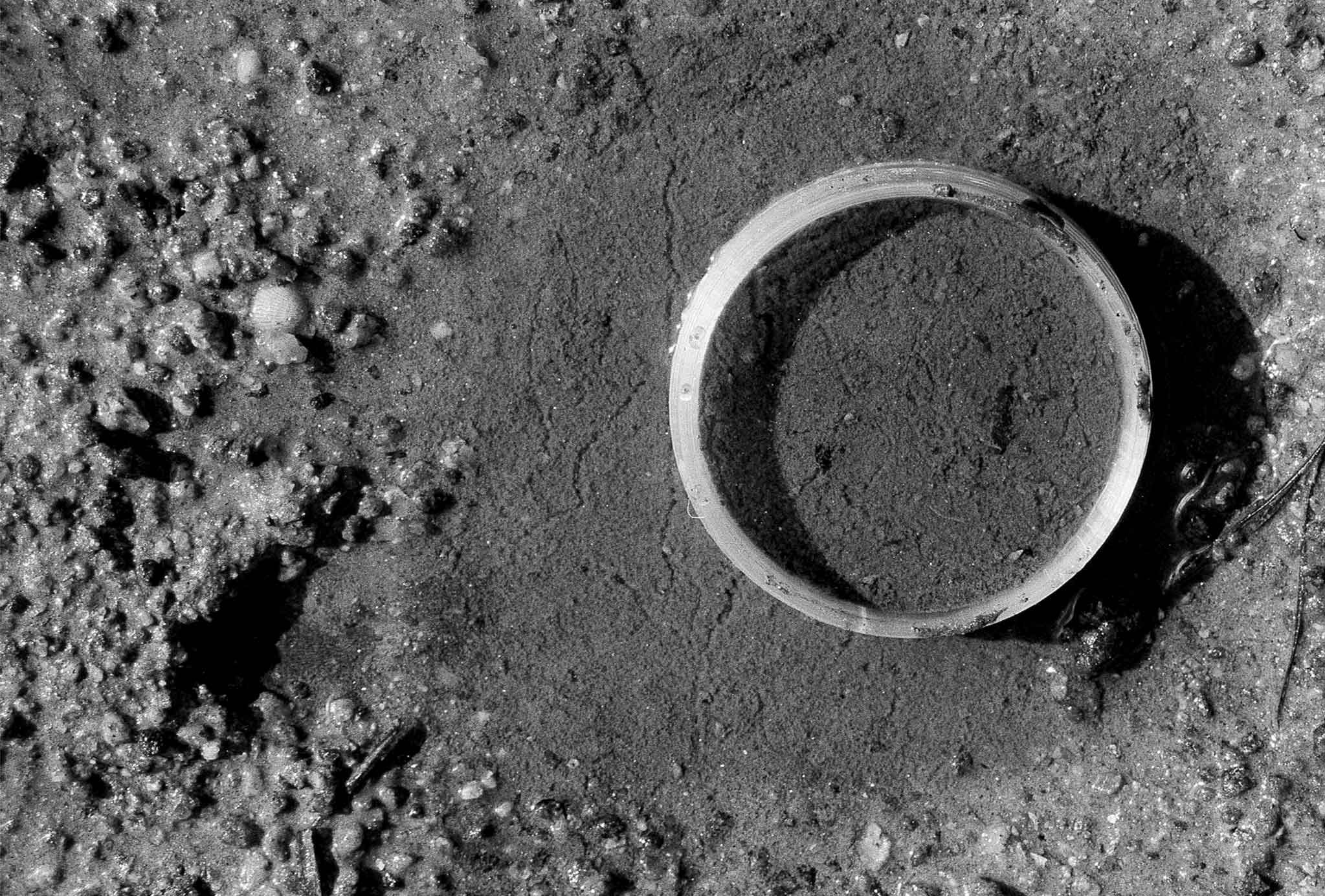

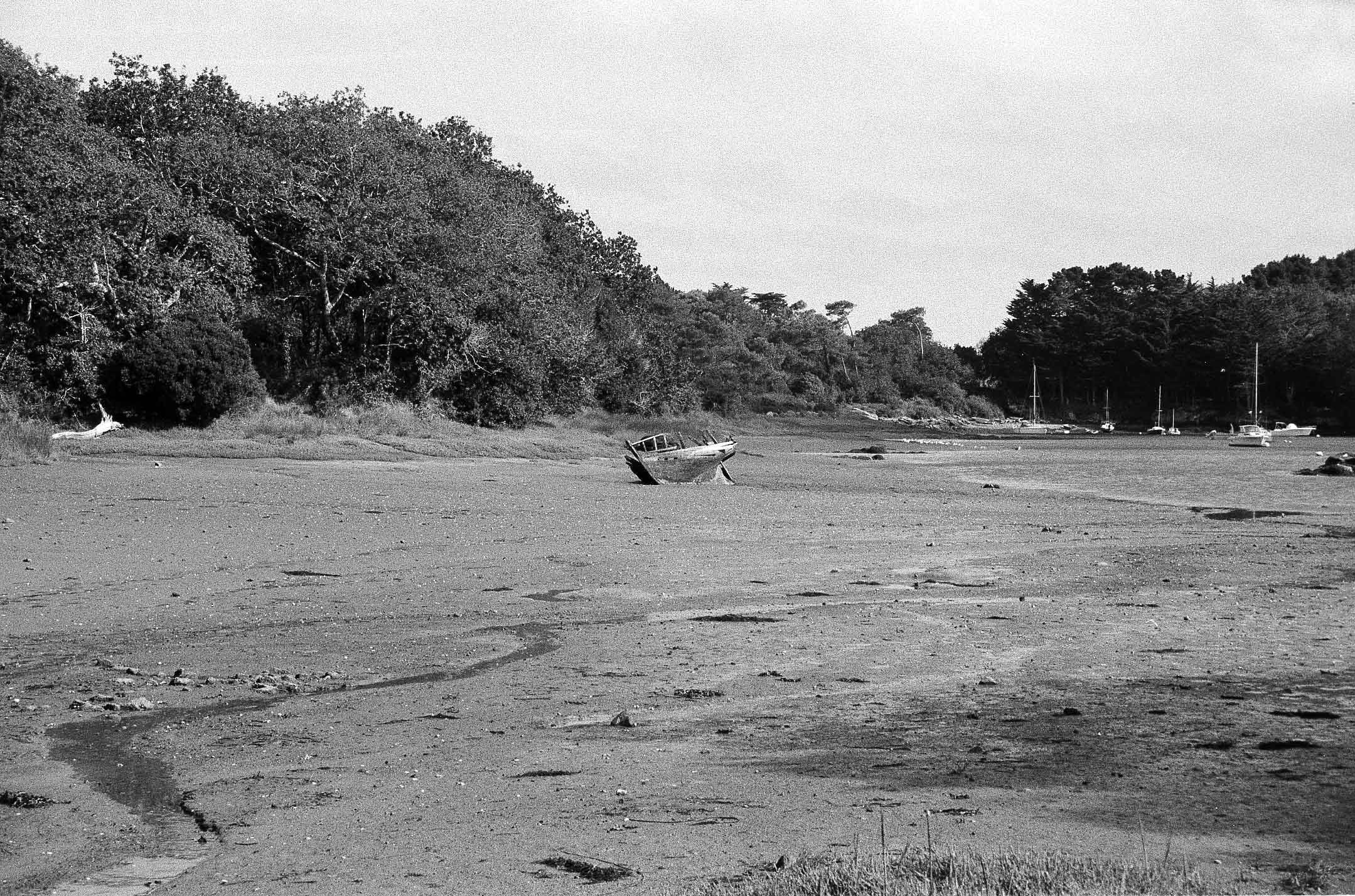

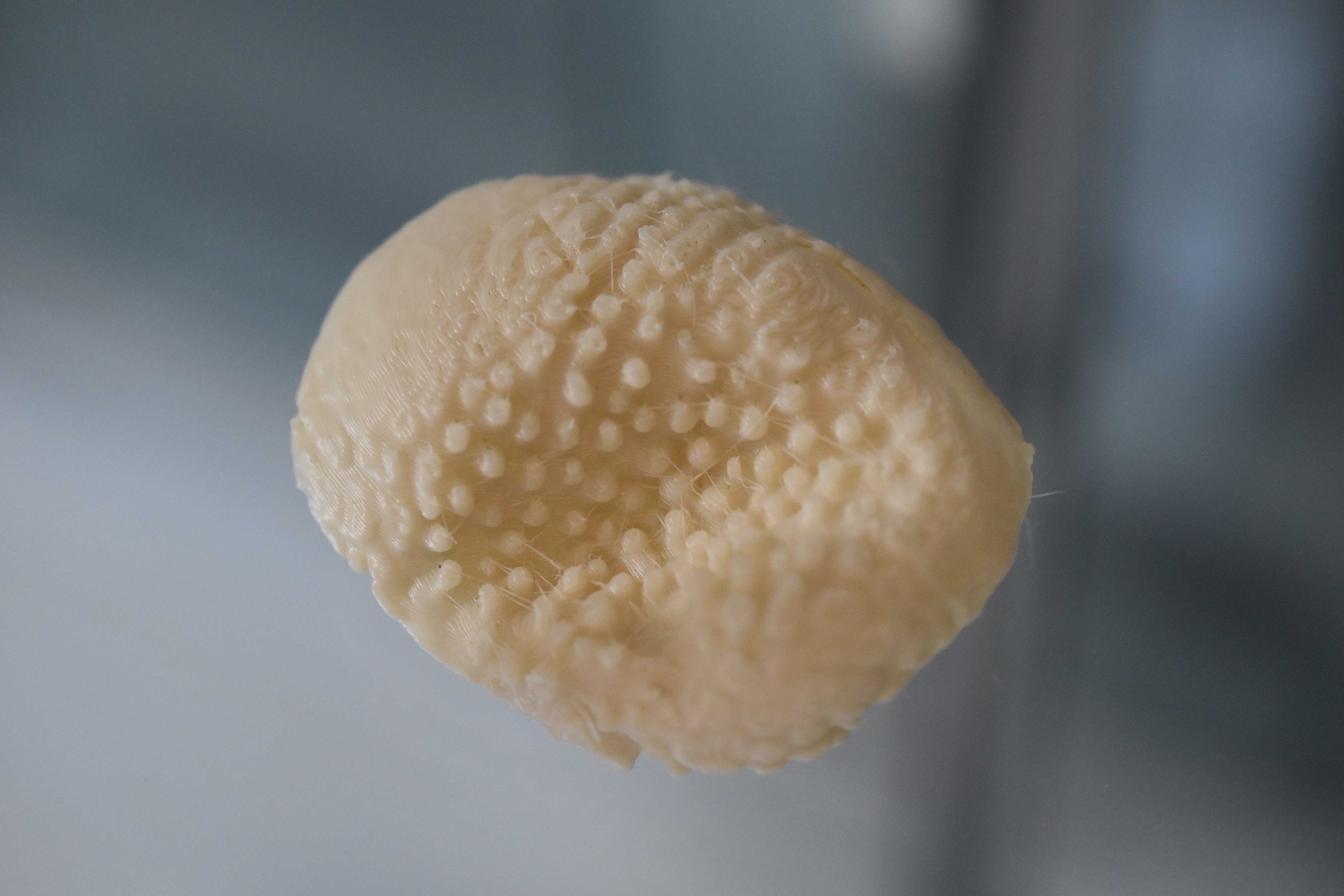
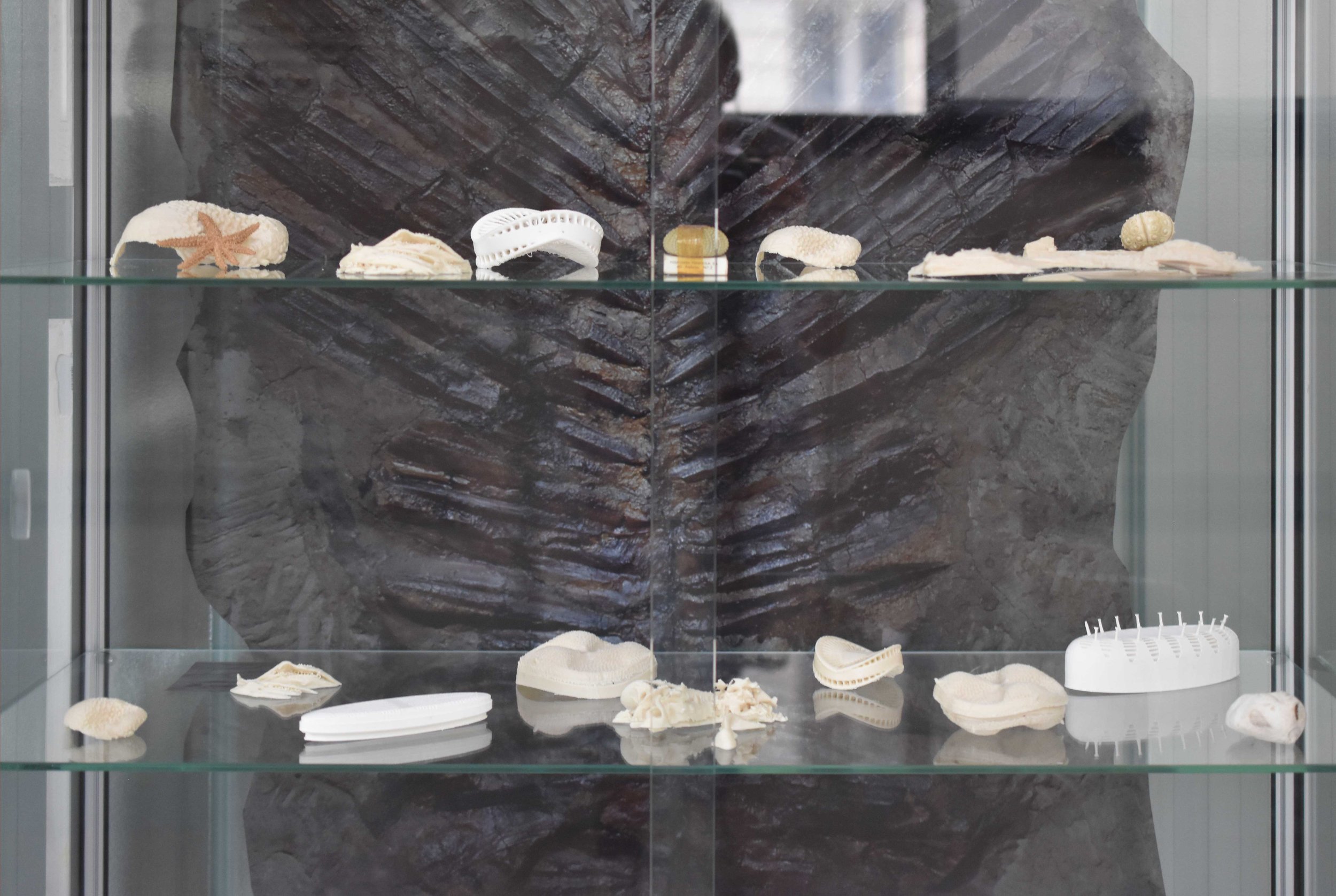

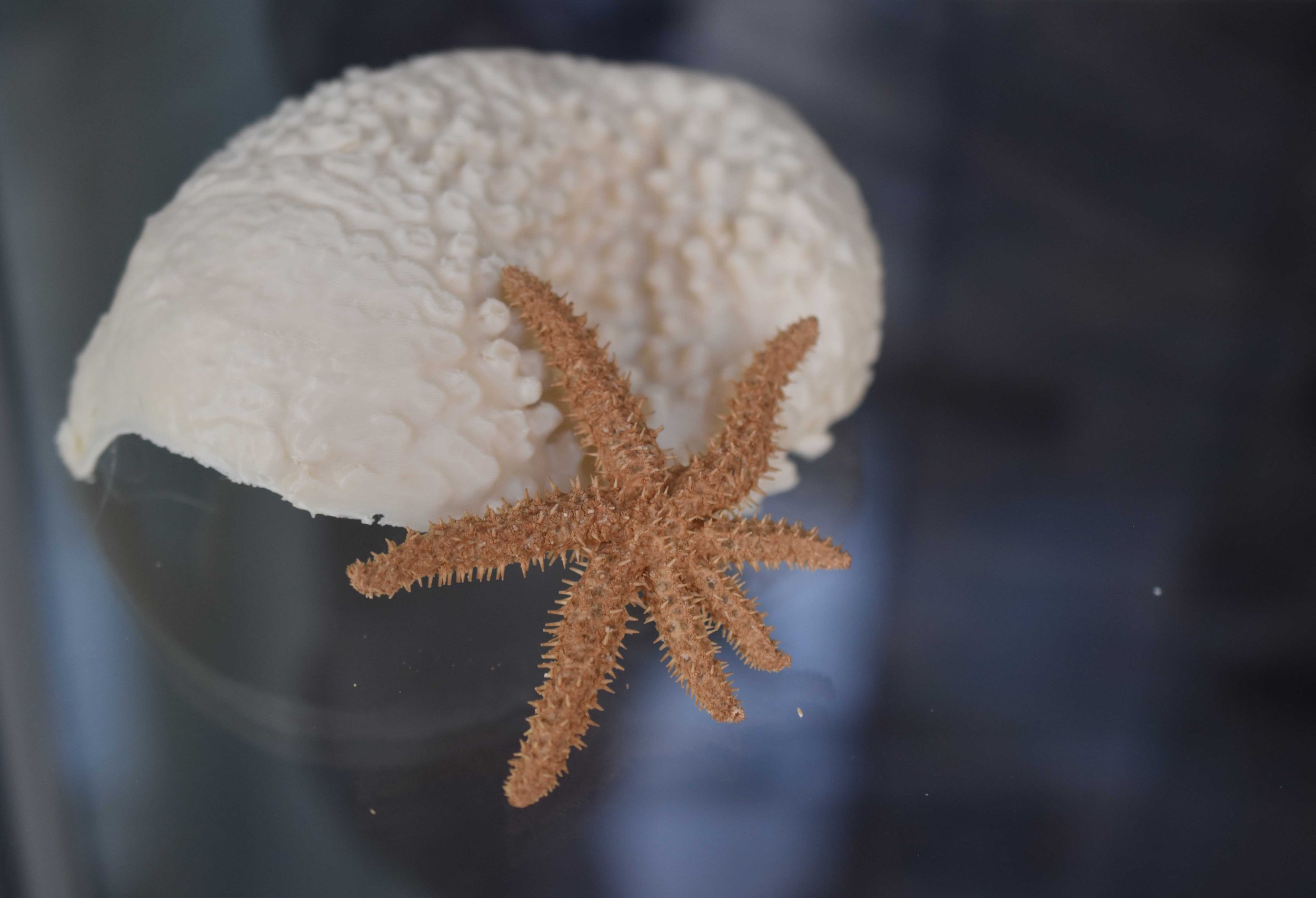
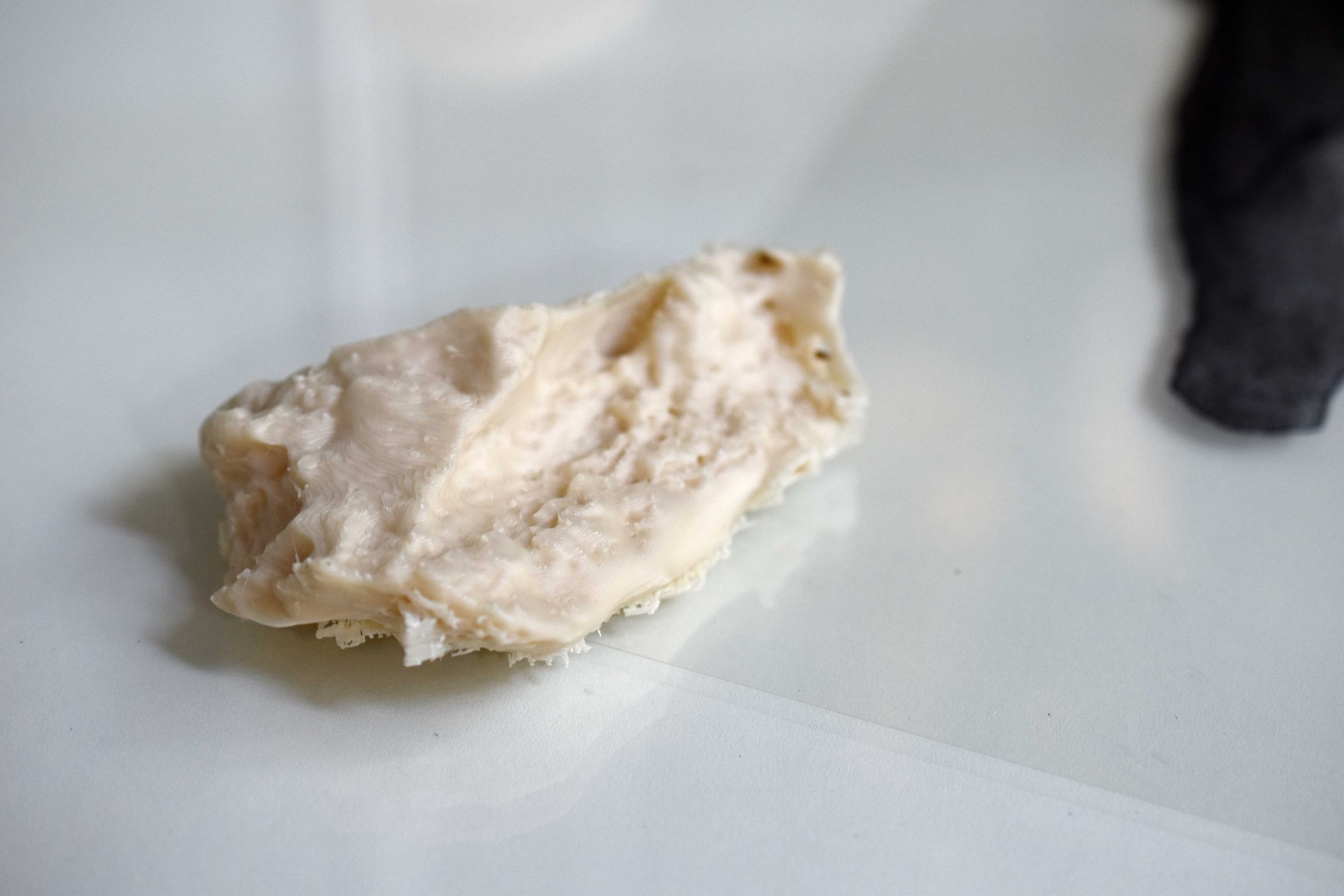


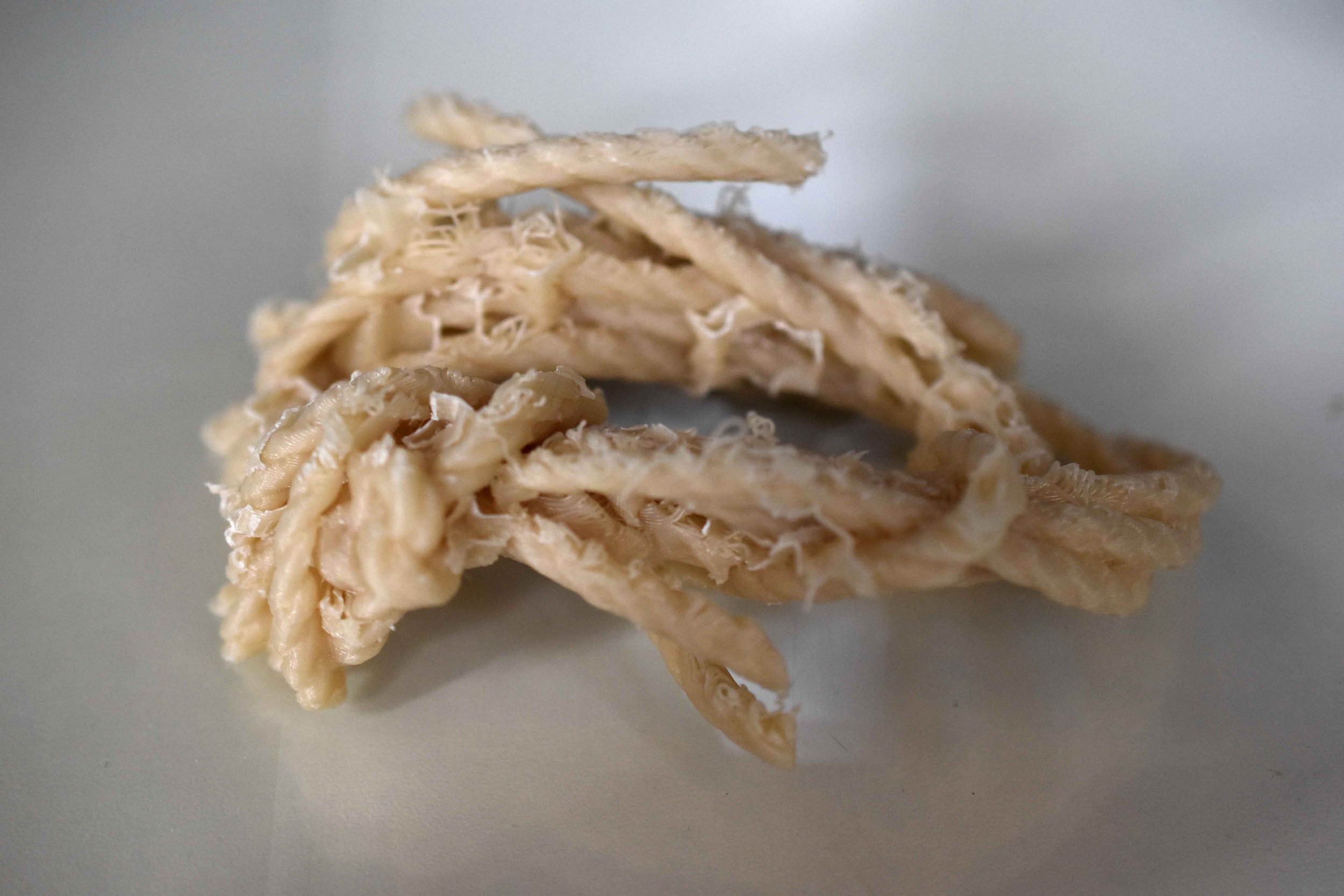
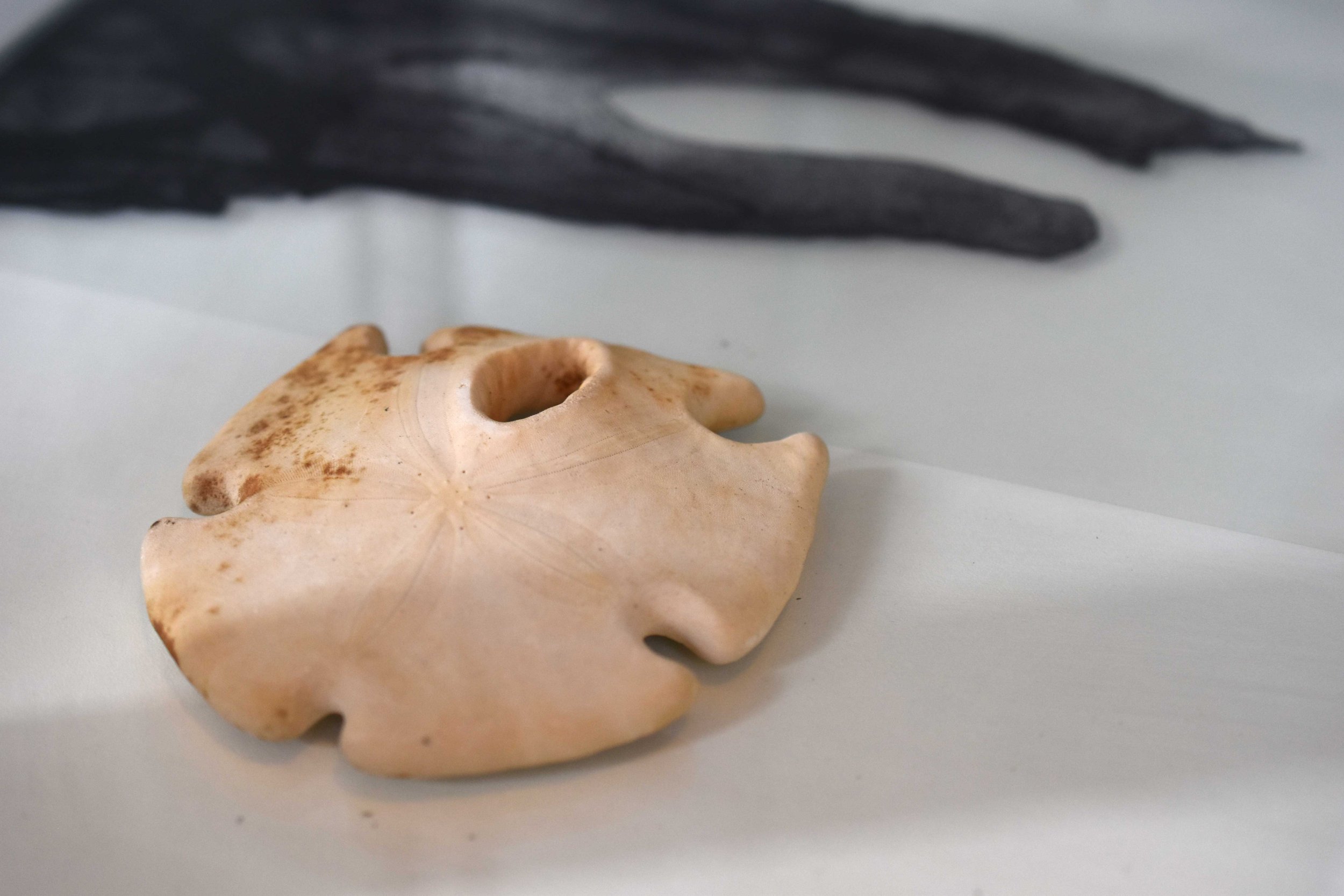
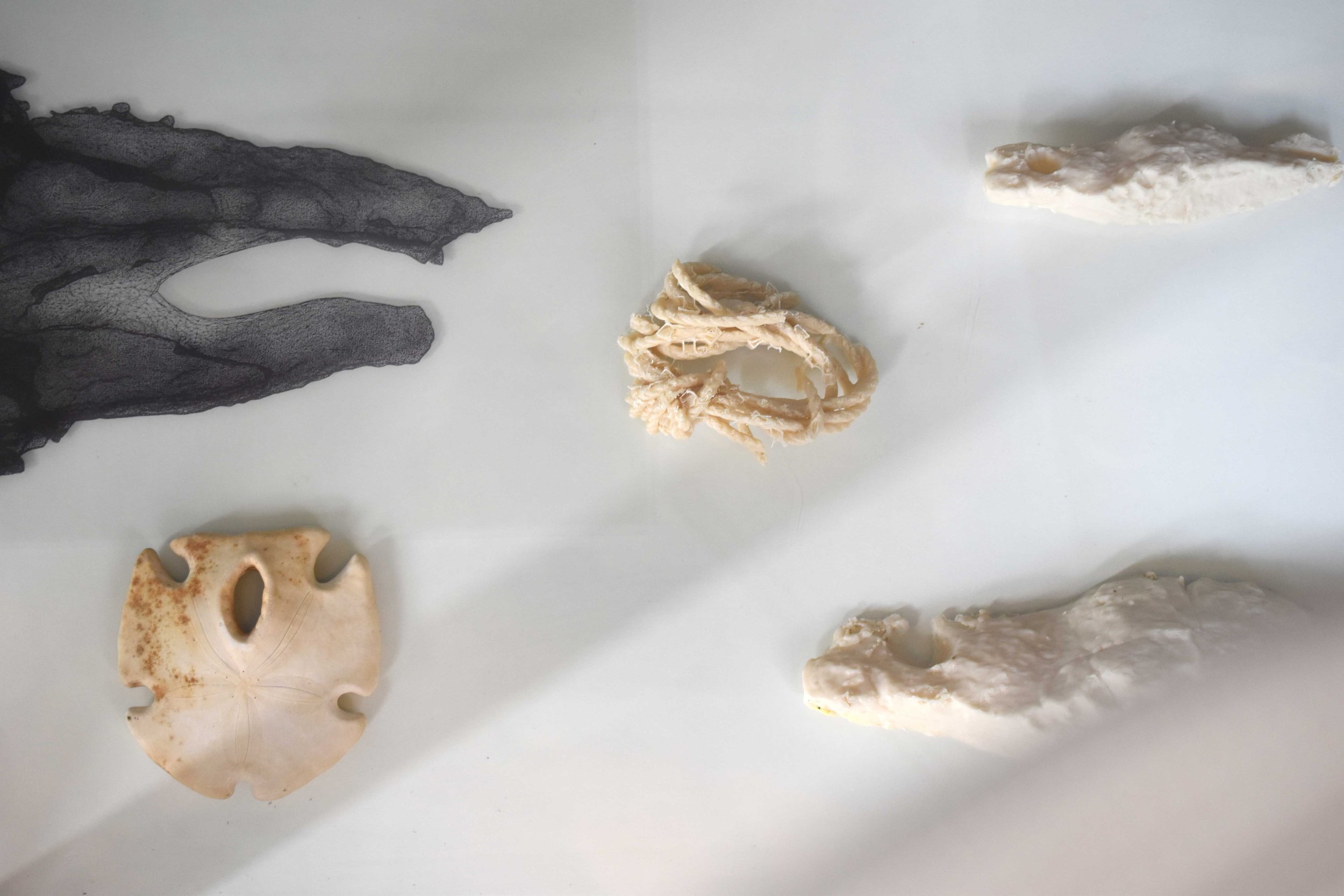

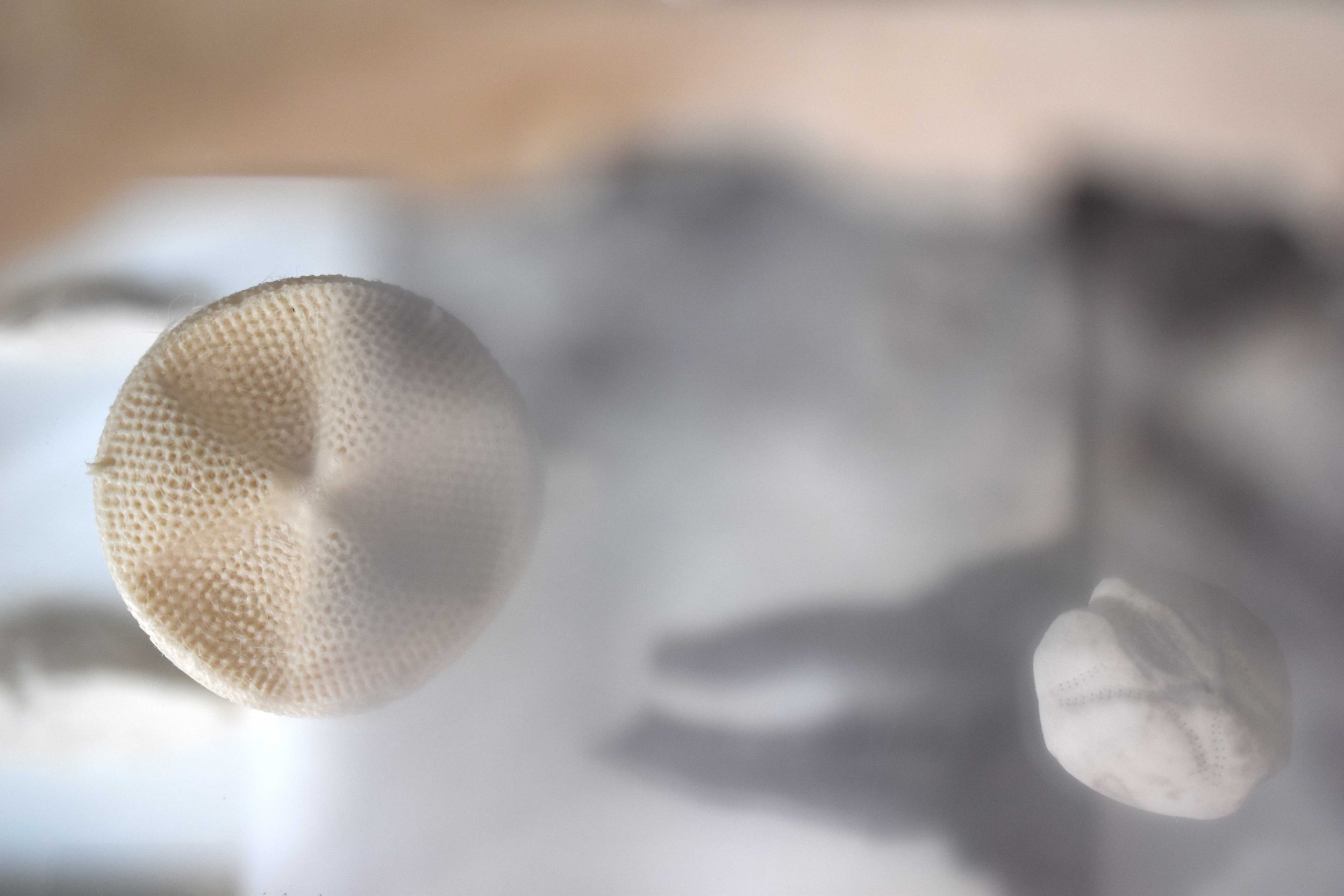
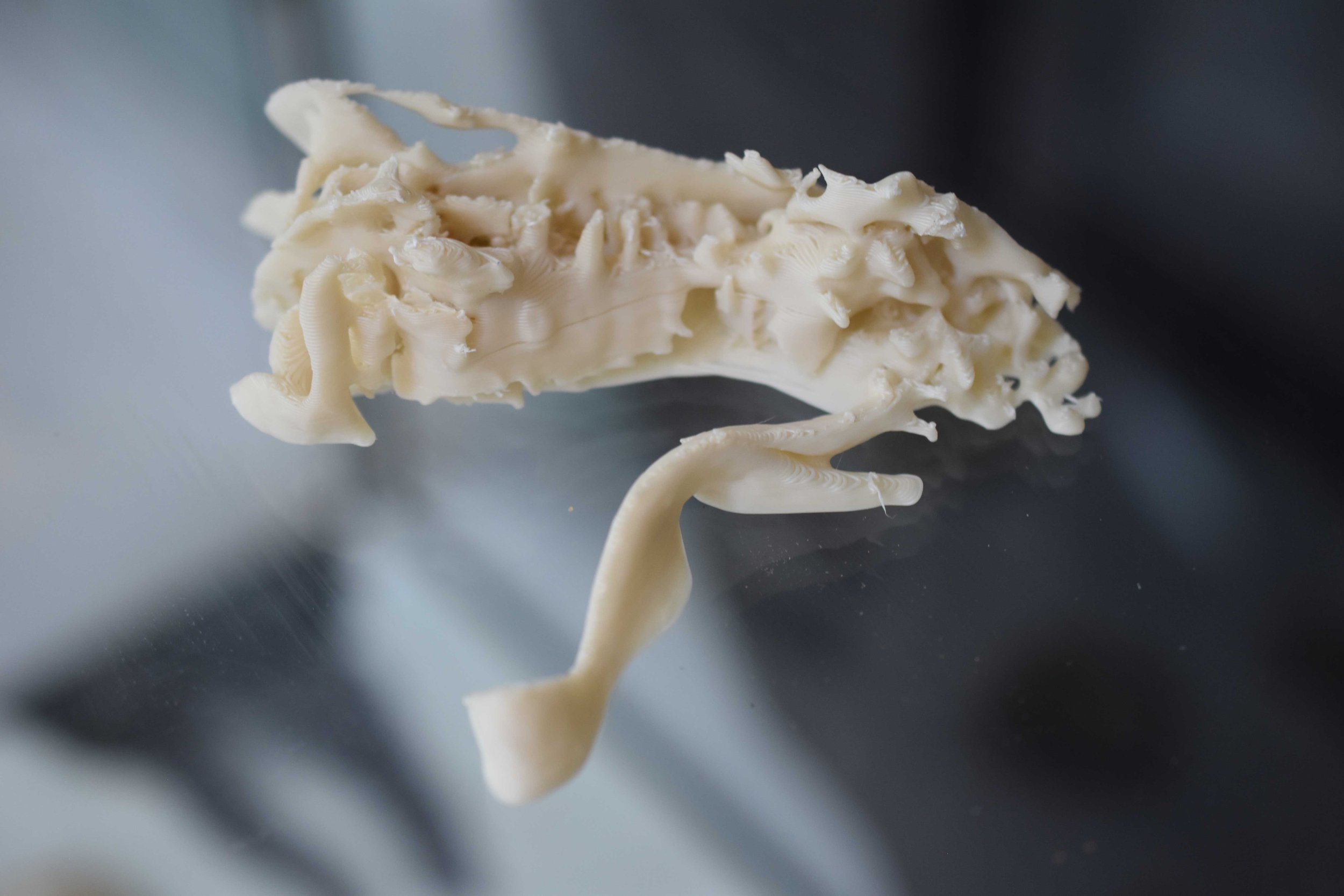
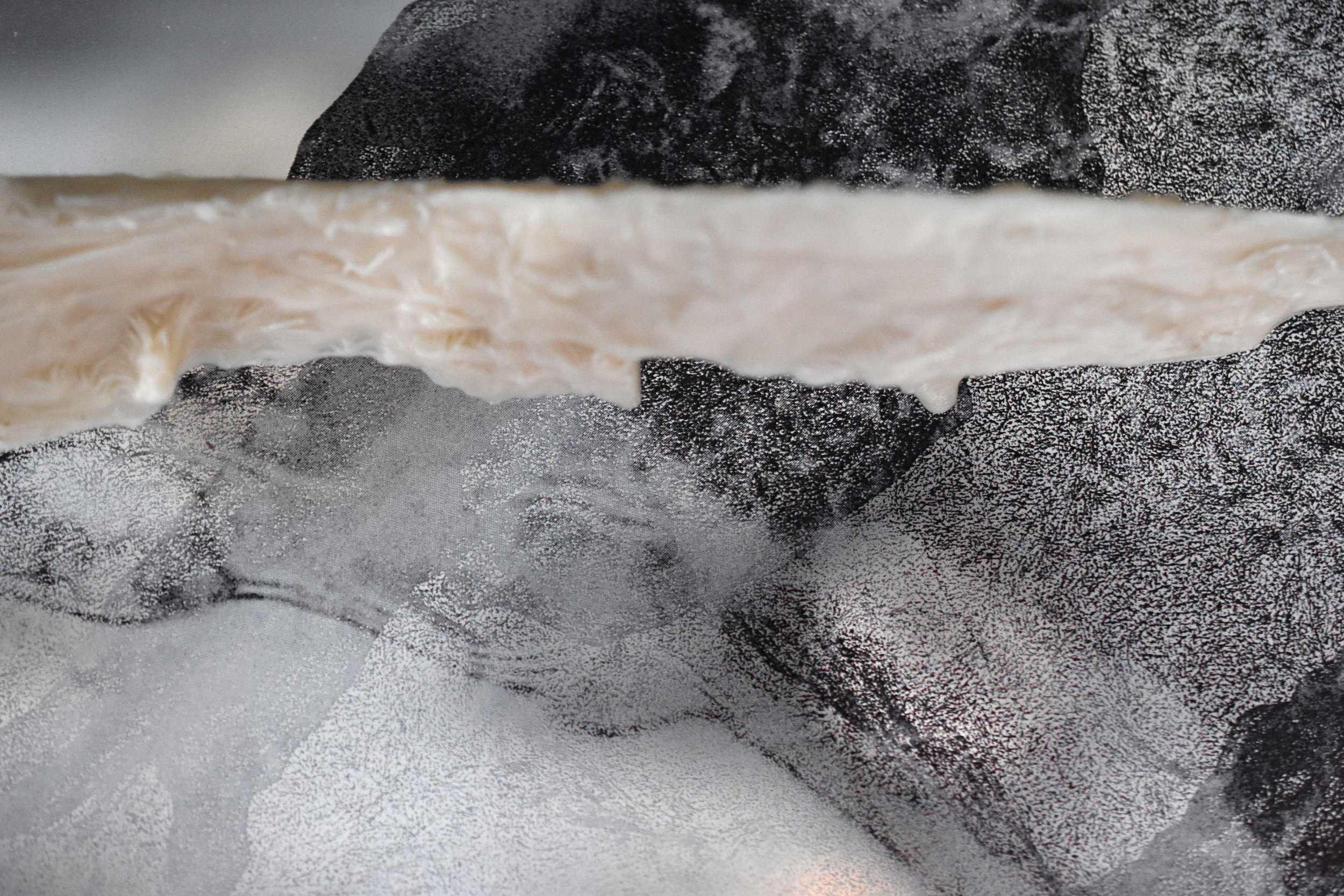
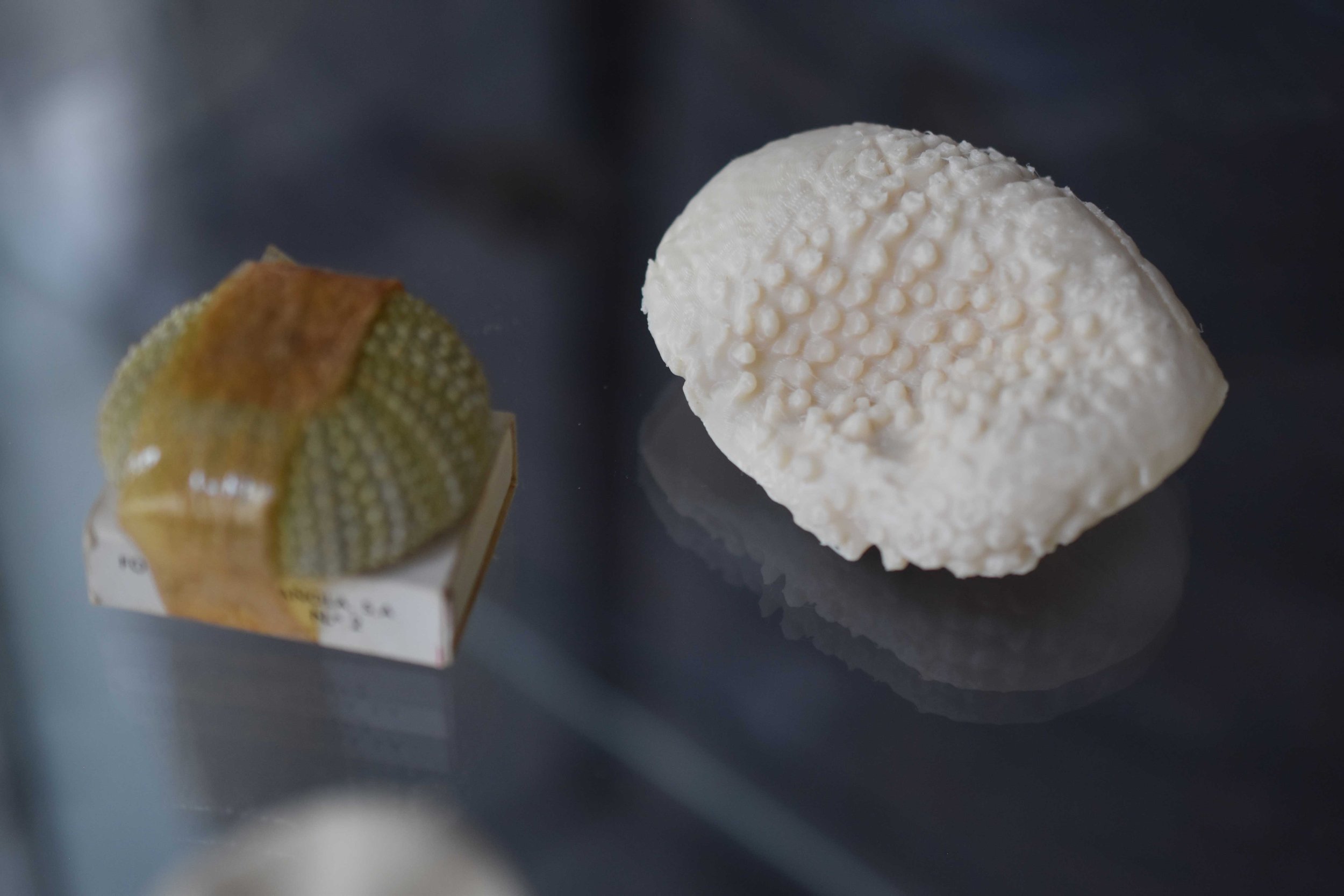
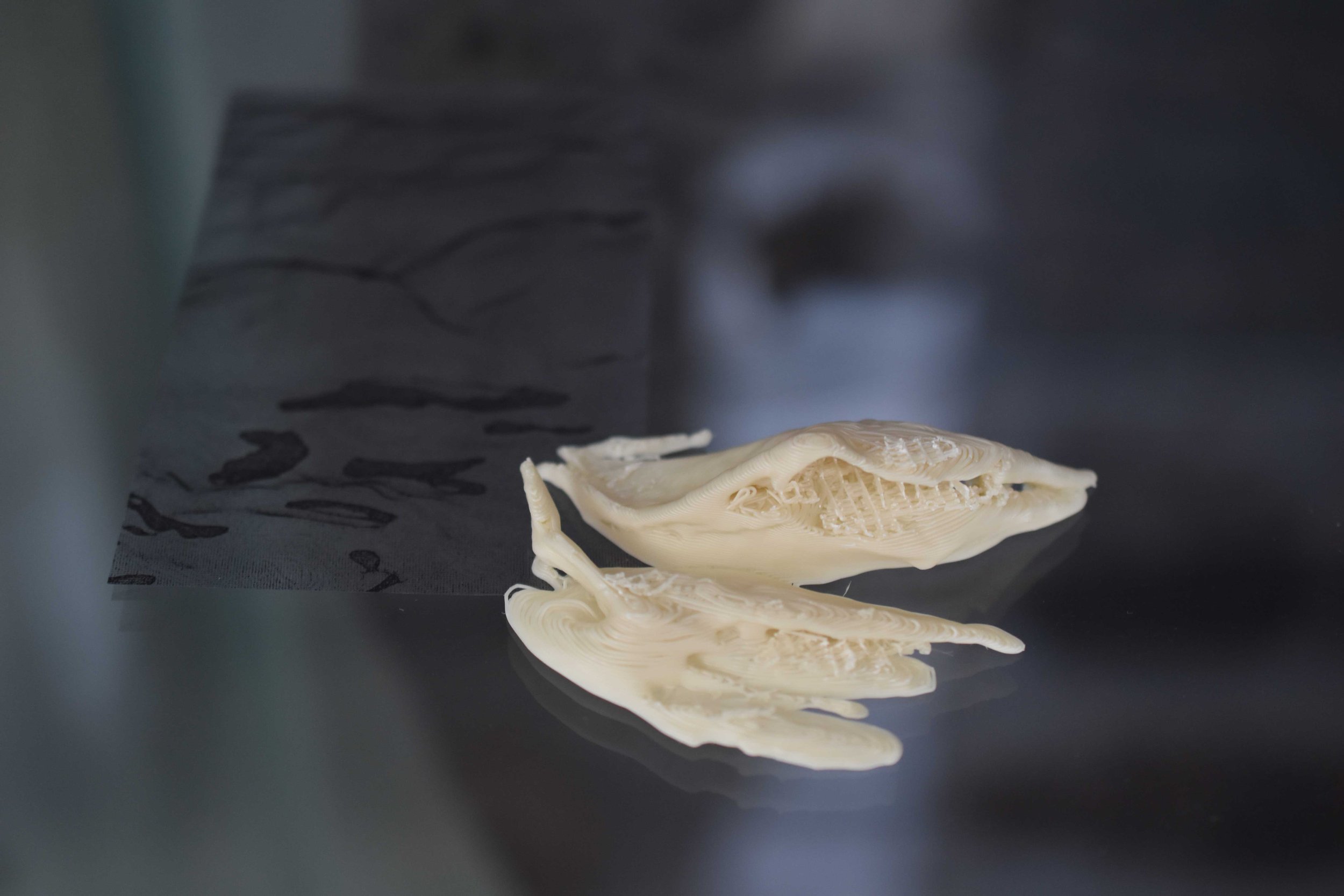


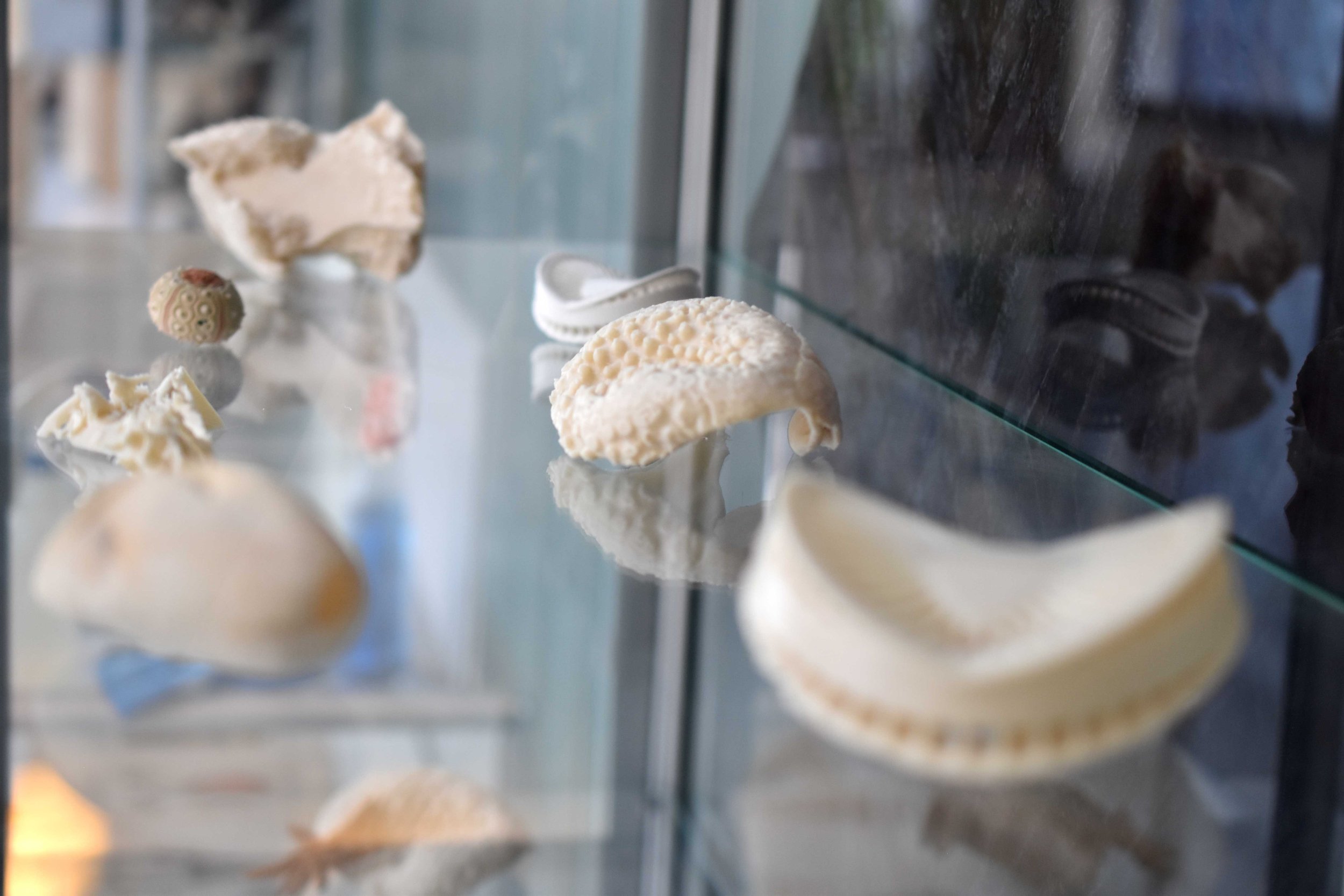
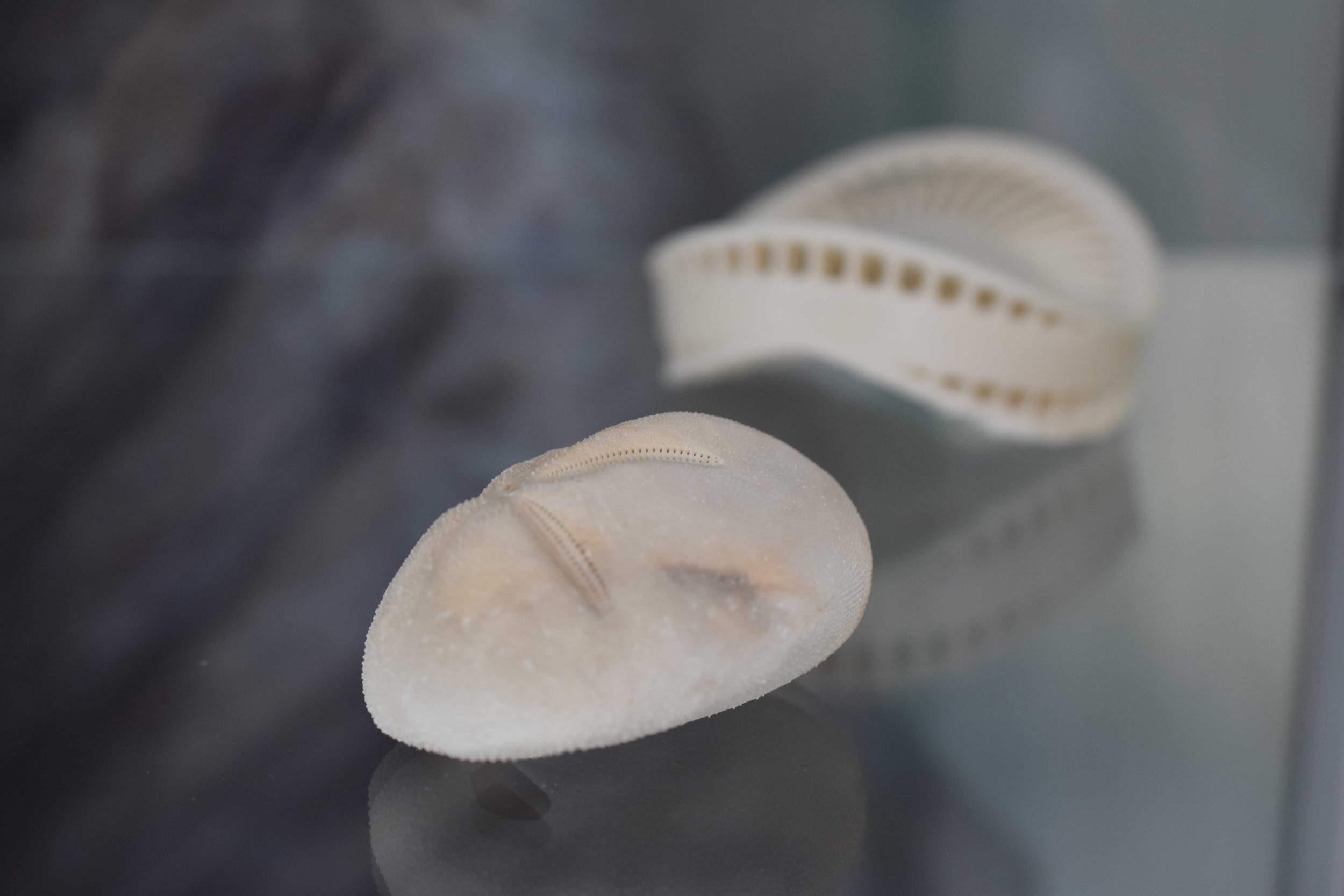
EN: Vitrine curated by the artist, Muséum National d’Histoire Naturelle (MNHN), Galerie de botanique, Paris, France. Series of Mimetic, biodegradable objects printed in PHA (bacteria-generated bioplastic printing filament) combined with objects from the marine biology collections of the MNHN (crustacean shells, etc.). Mimetic objects were molded from tidal pools, boat remnants, etc. or modeled after microscopic images of diatom frustules.
FR : Vitrine curatée par l’artiste, Muséum National d’Histoire Naturelle (MNHN), Galerie de botanique, Paris, France. Série d’objets mimétiques biodégradables, imprimés en PHA (filament en bioplastique générée par des bactéries) présentées avec des objets issus des collections du MNHN (coquilles de crustacées, etc.). Objets mimétiques moulés auprès des cuvettes, restes des bateaux, etc. ou d’après des images microscopiques des frustules de diatomées.
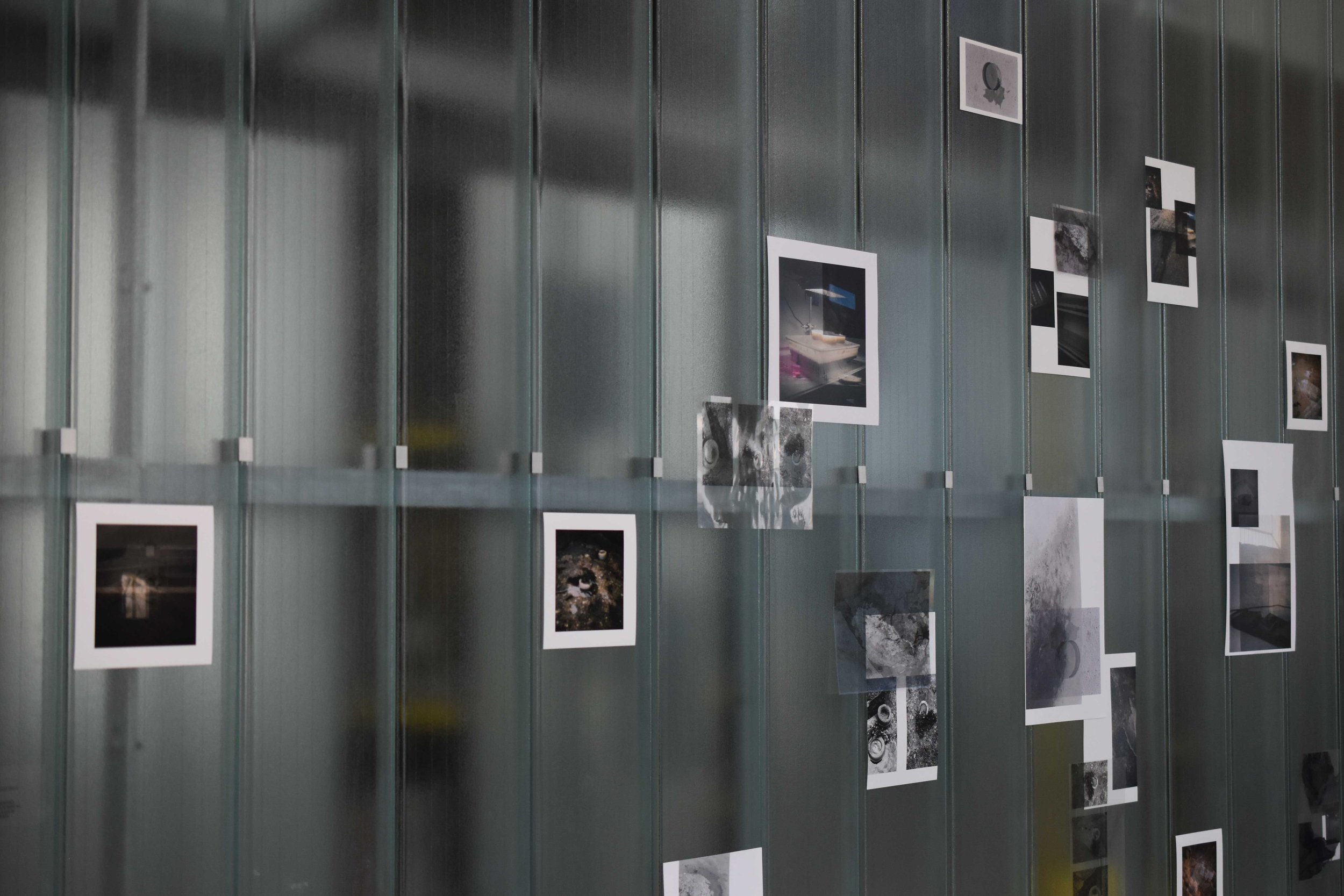
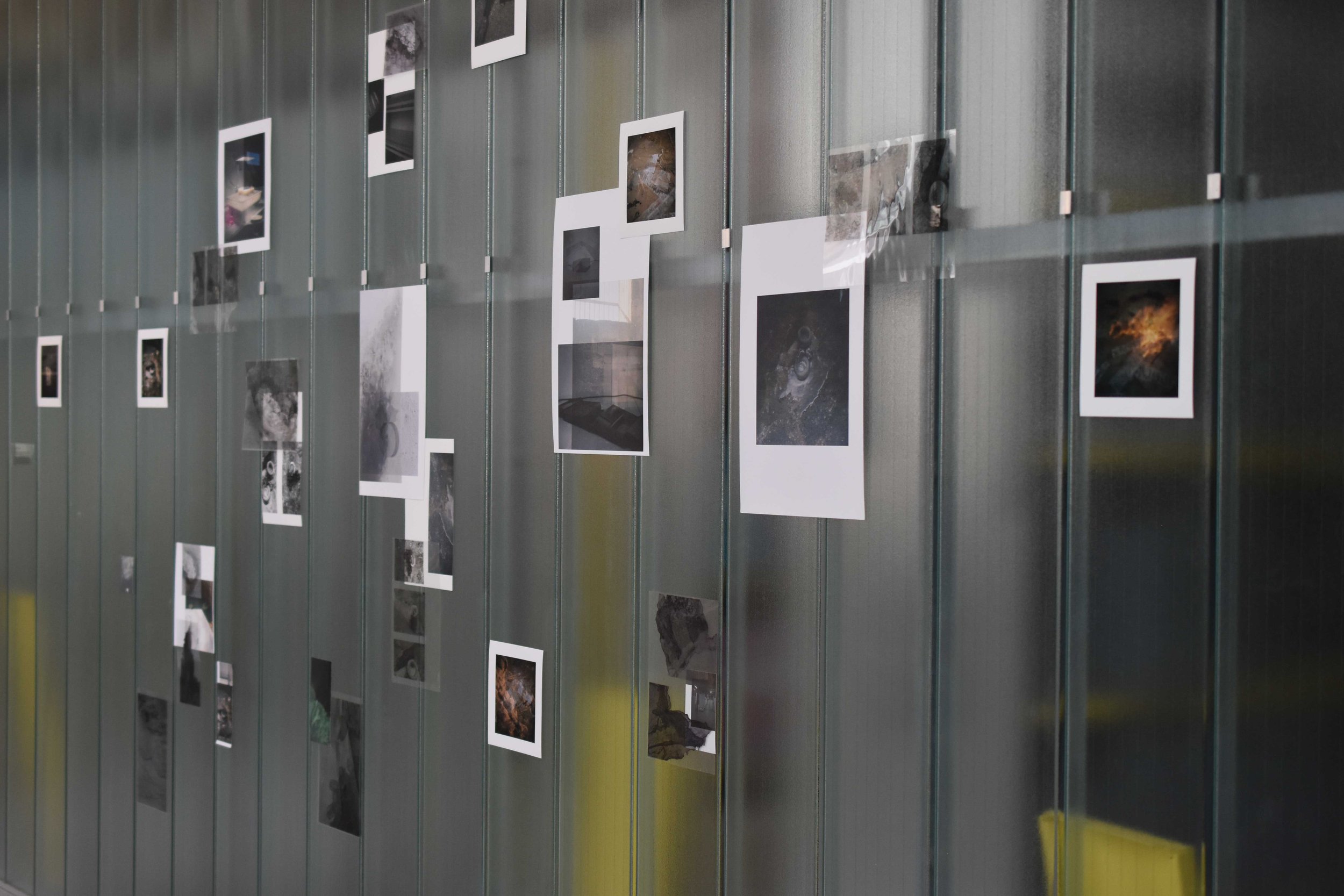
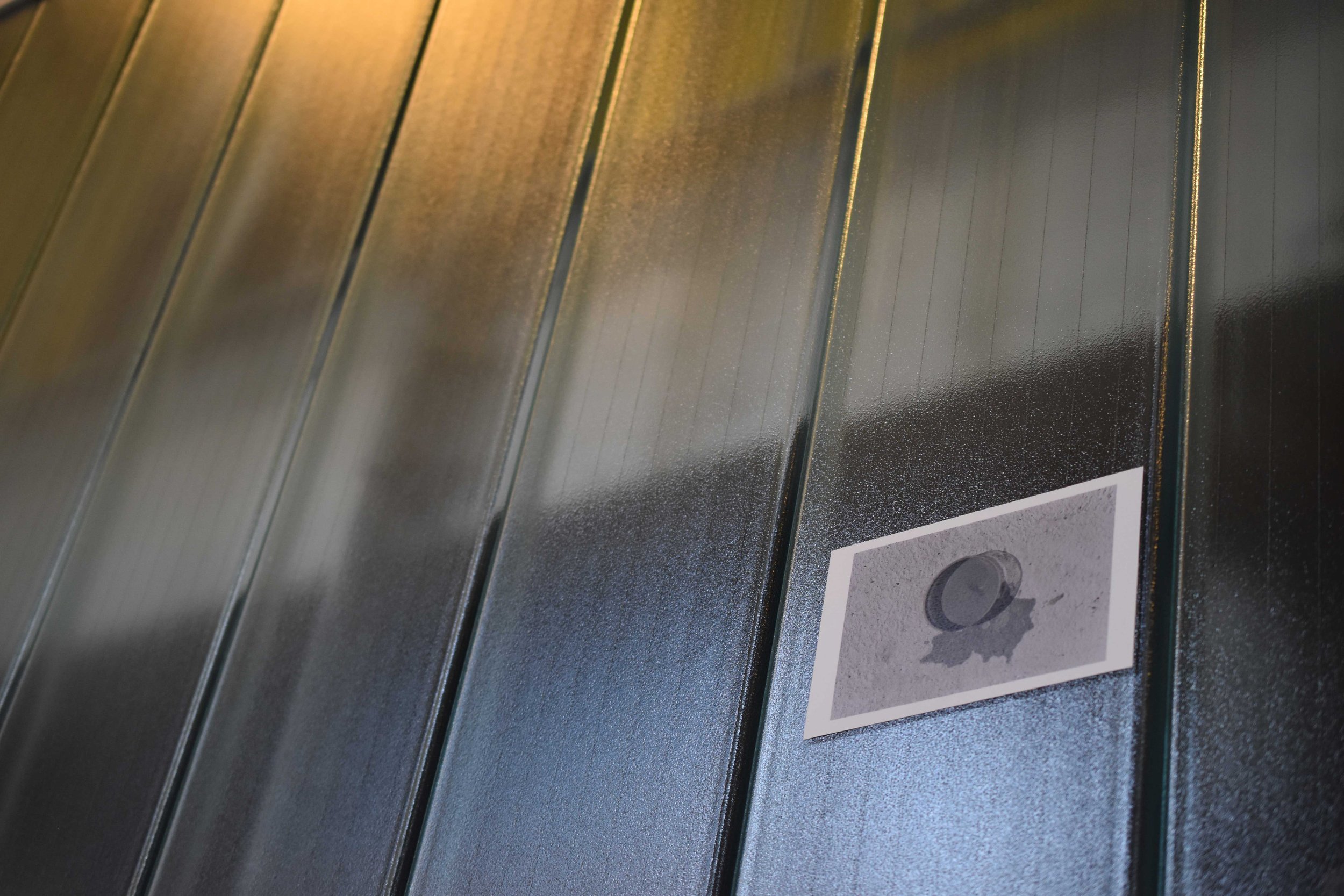
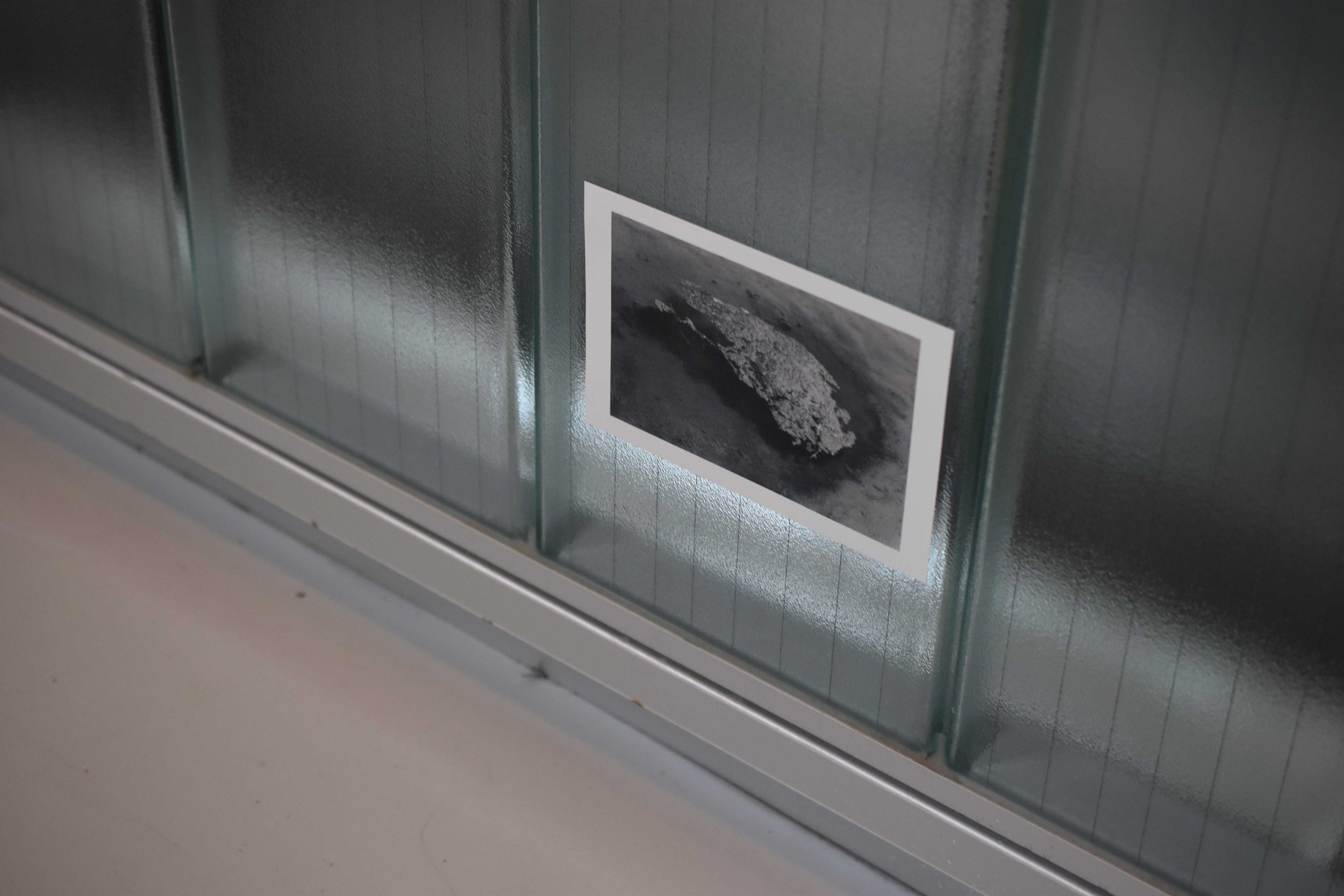
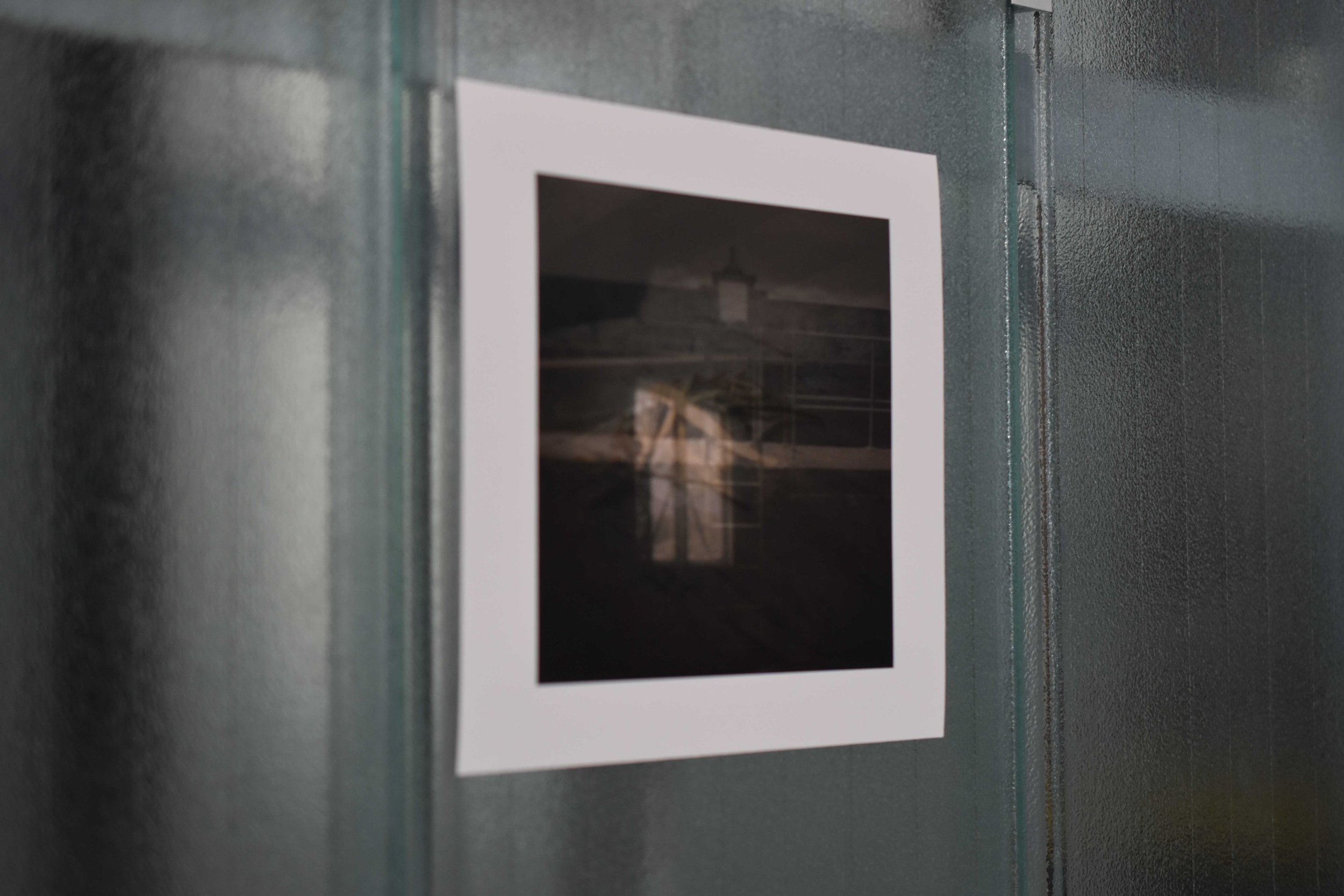
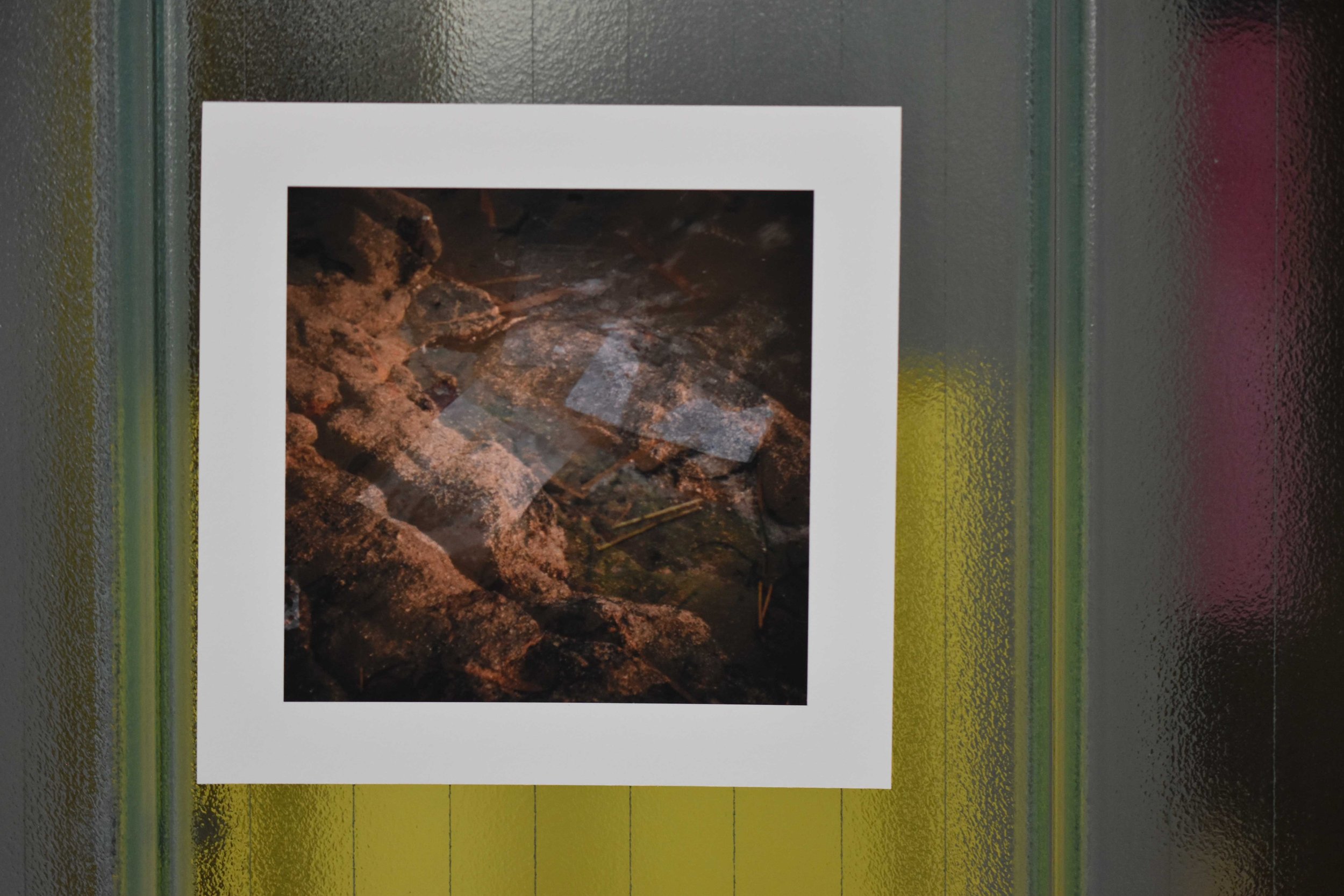
EN : Views of the exhibition of the project A familiar veil, in the ephemeral Bioinspire-Muséum Studio, temporarily installed in the Galerie de botanique, Muséum National d’Histoire Naturelle during the fête de la science. This series of pigment and laser prints (variable dimensions) were installed on the glass wall, which protects the Musúm’s precious book collections.
FR : Vues de l’exposition du projet A familiar veil, Studio éphémère Bioinspire-Muséum, Galerie de botanique, Muséum National d’Histoire Naturelle, Paris, France, 7-13 octobre à l’occasion de la fête de la science. Série de tirages à jet d'encre pigmentaire et laser, dimensions variables. Installées au mur en verre qui protège les pages des livres précieux des collections musséales.





